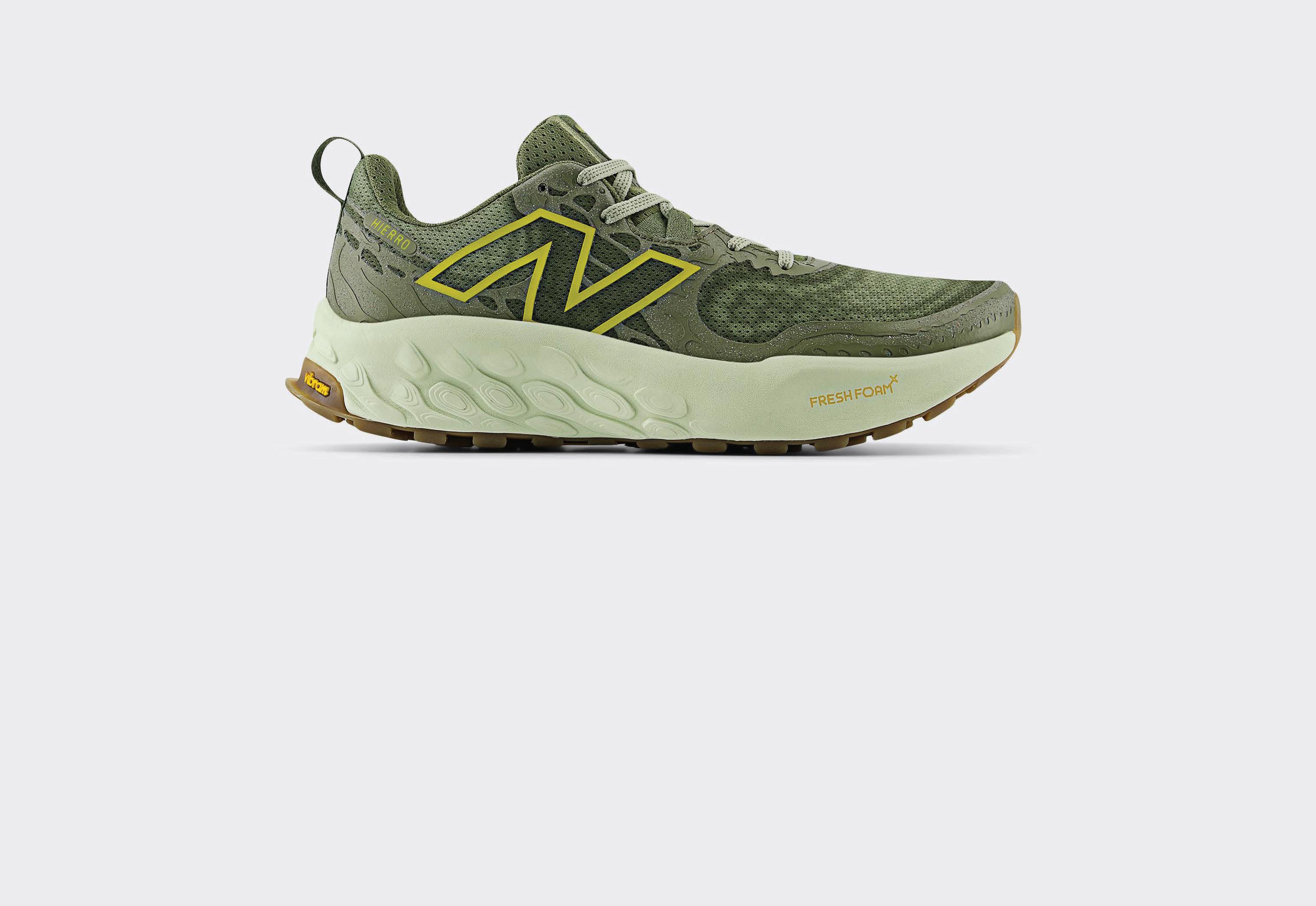







Cover photography by JOCELYNE HEBERT
Pride & Joy
Taekwondo
Road Trips Across Canada









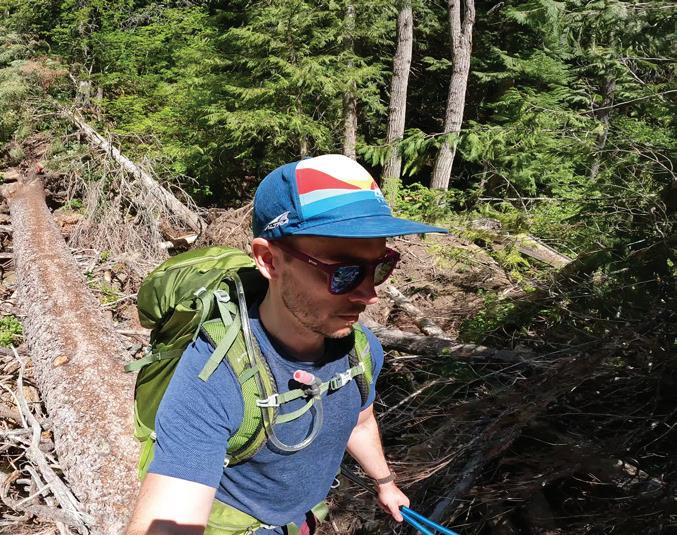



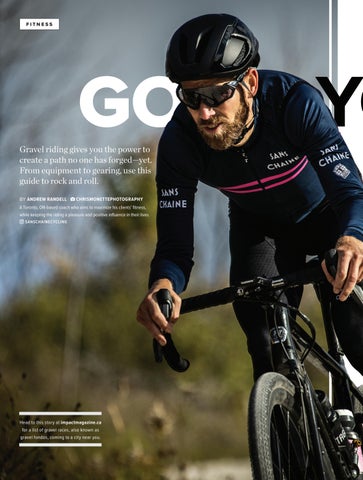








Cover photography by JOCELYNE HEBERT
Taekwondo













VOLUME 33, ISSUE 5
A leader in the industry for 33 years, IMPACT Magazine is committed to publishing content provided by the best experts in their fields for those who aspire to higher levels of health and fitness.
PUBLISHER & EDITOR-IN-CHIEF Elaine Kupser elaine@impactmagazine.ca
GUEST EDITOR Chelsea Clarke chelseaxclarke@gmail.com
ART DIRECTION & GRAPHIC DESIGN Marc Morin - Impello Inc marc@impello.com
COPY EDITORS Louise Hodgson-Jones Tom Lundteigen Emily Meyer
SOCIAL MEDIA COORDINATOR Michelle Clarke michelletherunner@gmail.com ADVERTISING advertising@impactmagazine.ca
LEGAL COUNSEL Gregory Forrest PRINTING Dollco Print Solutions Group DISTRIBUTION Media Classified Streetbox Media
CONTACT IMPACT Magazine Head Office 2007 2nd St. S.W. Calgary, AB T2S 1S4 403.228.0605
SUBSCRIPTIONS
$45 for one year, or $70 for two years (includes GST) impactmagazine.ca/subscriptions
WEBSITE www.impactmagazine.ca
SOCIAL impactmagcanada impactmag impactmag ImpactMagTelevision
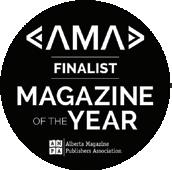

The opinions expressed in IMPACT Magazine are the writers’ and not necessarily those of the publication. IMPACT Magazine advises you to consult your physician if you do not follow a regular fitness program. All content is the property of IMPACT Productions Inc. and cannot be reproduced in any form without written consent of IMPACT Productions Inc. © 2024 Impact Productions Inc.

Precision
Health, TELUS Health’s new preventive service,
harnesses vast amounts of data points to offer individuals and athletes unparalleled insights into their current health and future wellbeing.
Each of us possesses a unique genetic blueprint that holds the key to optimizing our health. For fitness enthusiasts and professional athletes alike, tapping into this biometric data can significantly enhance their journey towards continuous improvement and achieving personal milestones.
Incorporating data-driven health insights, such as protein levels, hormones, metabolic health, and nutritional requirements into fitness activities allows individuals to understand their bodies better and tailor their routines for optimal performance. Today, top trainers and coaches rely on biometric training routines as the gold standard for athletes across many disciplines, ensuring unparalleled performance and exceptional results.
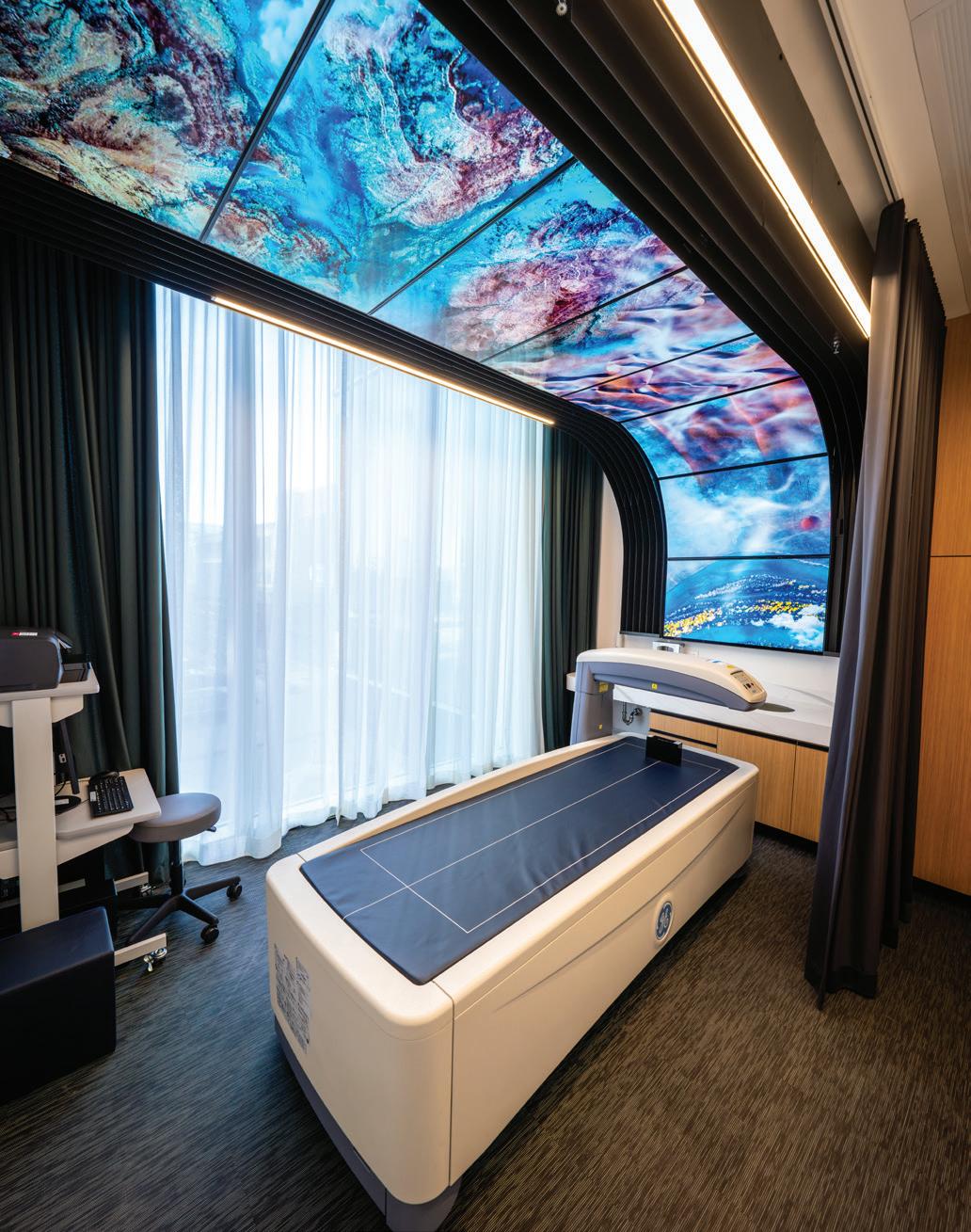
www.telus.com/health/care-centres
Precision Health, a cutting-edge service in Calgary, offers a revolutionary approach to health optimization. Using advanced imaging, lab, and genetic testing, Precision Health analyzes vast data points, providing unparalleled insights into individuals’ current health status and future wellbeing.
Whether someone aims to improve their everyday health or athletic performance, Precision Health delivers findings through a personalized dashboard and app. This equips individuals with the tools and information to tailor their health and wellbeing decisions for optimal performance.
Preventive health has grown in importance as more people seek proactive interventions to enhance their wellbeing and address health concerns early.
Dr. Keir Peterson, the Chief Medical Officer at TELUS Health, envisions a future where individuals are empowered with unique and actionable health insights that proactively pave the way for improved performance and a healthier approach to living.
“There is an enormous appetite for individuals to be more in control. They want information. They’re researching their medical conditions before they even see or speak to a health professional. So I see this in terms of personal empowerment and providing folks with actionable information that reflects the ongoing evolution we’ve witnessed in recent years,” says Dr. Peterson.
TELUS Health’s personalized approach to preventive health through Precision Health takes the benefits provided by wearable devices to new heights, offering insights for optimizing health routines based on data. Precision Health delivers unparalleled insights through comprehensive assessments, including full-body MRI scans, blood analyses, body composition evaluations, and oxygen tests. The service also offers a unique option to create a detailed 3D anatomical replica of the body, providing a visual representation of individual health metrics.
Precision Health offers three meticulously crafted packages, each tailored to meet the unique needs and goals of every individual. Purchased on an annual basis, these packages offer longitudinal tracking capabilities to monitor an individual’s health evolution over time, empowering them to make informed decisions and investments in their wellbeing year after year. This kind of tracking establishes a baseline that is progressively enriched with each subsequent assessment, fostering comprehensive health insights over time.
For active individuals, whether aspiring Olympians or recreational enthusiasts, Precision Health offers a comprehensive solution to personalize active lifestyles and goals using biometric data. By embracing a proactive approach to wellbeing, individuals and athletes can ensure vitality and activity for years to come.

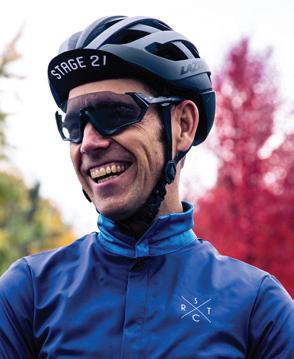

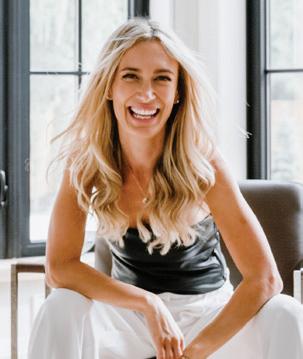
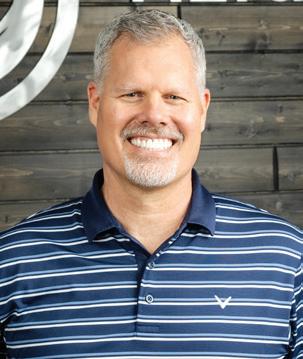
Based in North Vancouver, B.C., Meghan Burrows has been a personal trainer for 12 years. With a background in science and a Masters in Public Health, Meghan programs small-group and one-on-one clients for a wide variety of fitness and endurance goals, while working as a healthcare contracts negotiator with Doctors of BC. When she is not in the gym, she’s in the mountains trail running or skiing, and spending time with her family.
MEGHANMARIEBURROWS
Cycling has always been part of Andrew’s life, from riding in his neighborhood as a kid, to a professional career, and now working with his clients as a coach. Based in Toronto, ON, his aim as a coach is to maximize fitness, while keeping the riding a pleasure and positive influence in his clients’ lives.
SANSCHAINECYCLING
Mike T. Nelson, PhD, MSME, CSCS, CISSN, is a research fanatic who specializes in metabolic flexibility and heart rate variability, as well as an online trainer, adjunct professor, Associate Professor at the Carrick Institute, presenter, creator of the Flex Diet Certification, kiteboarder, and (somewhat incongruously) heavy-metal enthusiast. He has a PhD in Exercise Physiology and an MS in Mechanical Engineering (biomechanics). He’s based in Vadnais Heights, MN.
DRMIKETNELSON
Dr. Jordin Wiggins is a naturopathic doctor, author, and pleasure and intimacy coach based in Toronto, ON. She is the CEO of the Pleasure Collective, a coaching community for high-achieving women who want more pleasure in their lives, in and out of the bedroom. Combining 13 years of medical and tantra knowledge with her own personal experiences, she’s on a mission to change the statistic that one in two women globally suffer from sexual dysfunction.
DRJORDINWIGGINS
Geoff Dakin is the founder of Alignment First Inc. and the developer of the proprietary corrective exercise system known as The Alignment First Protocol. He is the author of the Amazon bestselling book, “The Body Mechanic’s Handbook: Why You Have Low Back Pain and How To Eliminate It At Home,” and a published researcher. As a former therapist for the Vancouver Canucks, Geoff has a robust background in sports therapy. His new video course, “Practical Rehab: Solving Back Pain at Home with The Alignment First Protocol,” helps individuals overcome chronic back pain effectively and efficiently.
GEOFFDAKIN DAKIN_GEOFF
CONTRIBUTORS Sean Allt, Marie Breton, Charmaine Broughton, Kirstyn Brown, Meghan Burrows, Chelsea Clarke, Geoff Dakin, Rachel Debling, Daniel James, Terry Kane, Maria Koutsogiannis, Lottie Laken, Cory Maystrowich, Brittany Moran, Mike T. Nelson, Austin Perlmutter, Brittany Peterson, Joni Pypers, Andrew Randell, Fyonna Vanderwerf, Jordin Wiggins, Jessica Woollard.
PHOTOGRAPHY Vicki Bartel, Meagan Broughton, CoPilot Collective, Steve Deschenes, Black Feather, Enviro Foto, Sandro Gromen-Hayes, Jocelyne Hebert, Adam Hill, Sean Landsman, Ronald Lee, Trudie Lee, Graham McKerrell, Chris Monette, Steven Peterson, Greg James Thomson.



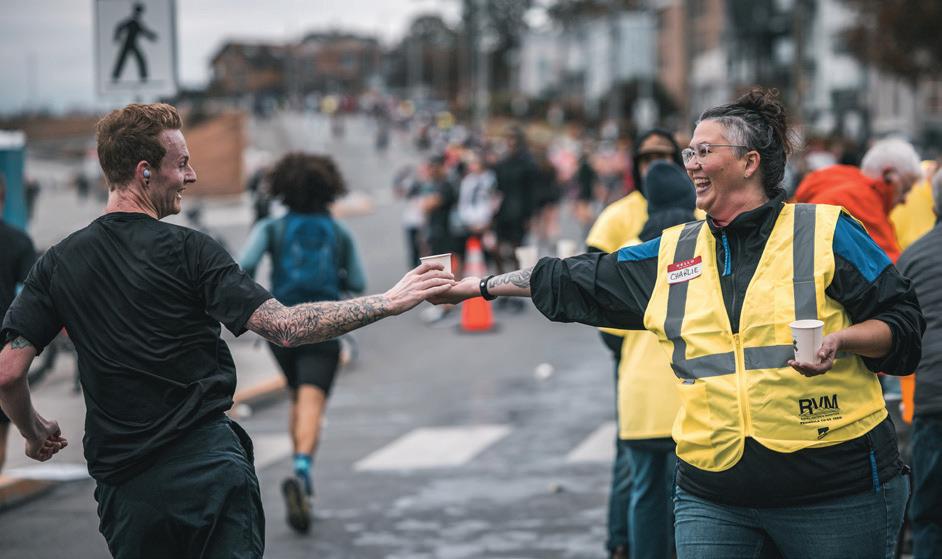
This beautiful course weaves through quiet streets and ocean views
With 90% of the marathon distance already sold out and the half marathon at 70%, the Royal Victoria Marathon (RVM) is predicting it will sell out this summer, months before the event in October.
“We increased our race caps by 30% this year and we’re still going to sell out” stated Cathy Noel, Race Director of the RVM. “We haven’t seen these types of numbers since 2010, the year we set our registration number record of over 13,000 with 11,040 finishers. We couldn’t be more excited to see the sport growing like this with our event and others around the globe.”
The RVM will be celebrating its 44th annual event October 12-13, 2024. The weekend includes the 5K and Thrifty Foods Kids Run on the Saturday, followed by the marathon, half marathon and 8K on the Sunday.
World-renowned for its beautiful oceanside course with views of the Olympic Mountains, it is also considered a fast
course, with many runners hitting PBs and/ or qualifying for the Boston Marathon. A World Athletics sanctioned event it is also host to the Canadian Masters Half Marathon Championships and the BC Marathon Championships.

a long sleeve shirt as well as exclusive Outway RVM socks. Half marathoners will receive a long sleeve shirt, while those in the 8K will receive a short sleeve shirt and the 5K will take home a RVM sling bag. All will receive a distance specific medal as well as a race bag.
We couldn’t be more excited to see the sport growing like this…
CATHY NOEL | RACE DIRECTOR, RVM
New in 2024, the event has added a Team Challenge. Participants form a team of 2-4 people, with each signing up to do one of the distances – marathon, half marathon, 8K and 5K. With bragging rights and prizes on the line, this makes for a great team building event.
Back for the 20th year is the CHEK Charity Pledge Program, with 17 charities signed up to raise funds through the RVM platform. In 2024 the event is hoping to hit the $2.5 million raised since its inception in 2005.
This year’s participants will receive Under Armour shirts specific to their race distance. Marathoners will receive
The Victoria Marathon Society, who organize the RVM, want to continue to grow the sport and believe education and training is a large component of this. To that end, they offer a number of free resources, including an online Facebook Training Group, training plans for all abilities on their website and a monthly Speaker Series presented by Marsquest. The speaker series is open to the public, providing an opportunity for people to ask questions of the panel of experts.
For more information about RVM, please visit www.runvictoriamarathon.com Register today, book your accommodation through their partner program and get ready for Victoria before it is too late!

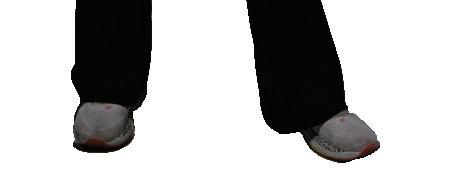
Our summer issue always marks a special milestone – this edition completes our 33rd year of publishing IMPACT Magazine. It’s truly astonishing to reflect on our journey as we step into our 34th year.
This summer marks an Olympic year! At IMPACT, we’ve consistently celebrated Olympians on our covers long before it was in fashion and I’ve always regarded it as a great privilege to have a platform to showcase athletes and their inspiring stories.
In our early years during the 1990s, we featured incredible athletes like Kurt Browning, Kerrin Lee Gartner, Mark Tewksbury, Susan Auch, Michael Smith, Michelle Cameron, Tanya Dubnikoff, Jennifer Botterill, and Curtis Meyden. In the 2000s we highlighted stars such as Christine Nordhagen, Catrina Le May Doan, Joanne Malar, Jeremy Wotherspoon, Ken Read, Clara Hughes, Beckie Scott, Kyle Shewfelt, Simon Whitfield, Jon Montgomery, Erik Guay, Jessica Zelinka, Alanna Yip, Kaillie Humphries, and Brian McKeever (to name just a few). More recently we’ve showcased talent like Haley Daniels, Tessa Virtue, Mark McMorris, Erica Wiebe, Malindi Elmore, Rory Linkletter, and Cameron Levins. This is just a glimpse!
Sometimes I have to pinch myself to believe the honour I’ve had in meeting these athletes and sharing their remarkable journeys.
If you missed our 25th and 30th special edition Anniversary Issues a few years ago, and would like to explore our epic past Olympic covers, you can see them here: www.impactmagazine.ca/ digital-editions/. Both are packed with rich editorial content on the history of IMPACT Magazine.
This year we’re thrilled to feature the incredibly talented taekwondo Olympian, Skylar Park on our cover. Skylar will be heading from Winnipeg to Paris to represent Canada with a goal to medal. Her inspiring story of family, challenges, hard work,

Elaine Kupser, Publisher & Editor-In-Chief elaine@impactmagazine.ca
mental awareness and victories will have you cheering for her across the ocean this summer. Don’t miss Pride & Joy eloquently portrayed by our Guest Editor, Chelsea Clarke.
And as always, we at IMPACT will be glued to our screens this summer, cheering on the entire Canadian Olympic and Paralympic teams. We know you will be too!
Speaking of covers, what are your thoughts on our new cover design? When you have stunning photography by Jocelyne Hebert paired with exceptional art direction by Marc Morin, you can’t resist trying something a little different. I hope you love the cover as much as we do – I’d love to hear your thoughts!
In this issue, we also feature Canadian Paralympian, Noah Vucsics, who excels not only as a talented long jumper but also in every aspect of life. Despite being diagnosed with an intellectual disability as a child, Noah didn’t let this hinder his high school pursuits of sports and theatre, and earned the distinction of class valedictorian. “IQ is a piece of paper. It doesn’t necessarily tell the whole story.” Indeed, Noah, indeed.
Read on and meet Vanisha Breault, a remarkable woman who not only survived unimaginable hardships, but has also thrived by channelling her passion for running into a powerful tool for healing. Through her dedication, she has helped others battling addiction, including her own daughter. On the day of our photo shoot, Vanisha was celebrating an extraordinary milestone –11 years of sobriety.
Summer in Canada is famously fleeting. In fact, I recently read that ‘Canadian summer’ ranks high as an oxymoron. We have packed this edition with plenty of inspiration, expert training advice and even a cross-Canada road trip to help you make the most of your outdoor pursuits! What’s holding you back? Let’s go!
Didn’t get your hands on a favourite edition of IMPACT? Or maybe your best friend secretly borrowed it from you? No worries. Subscribe to our FREE newsletter and digital edition online at www.impactmagazine.ca
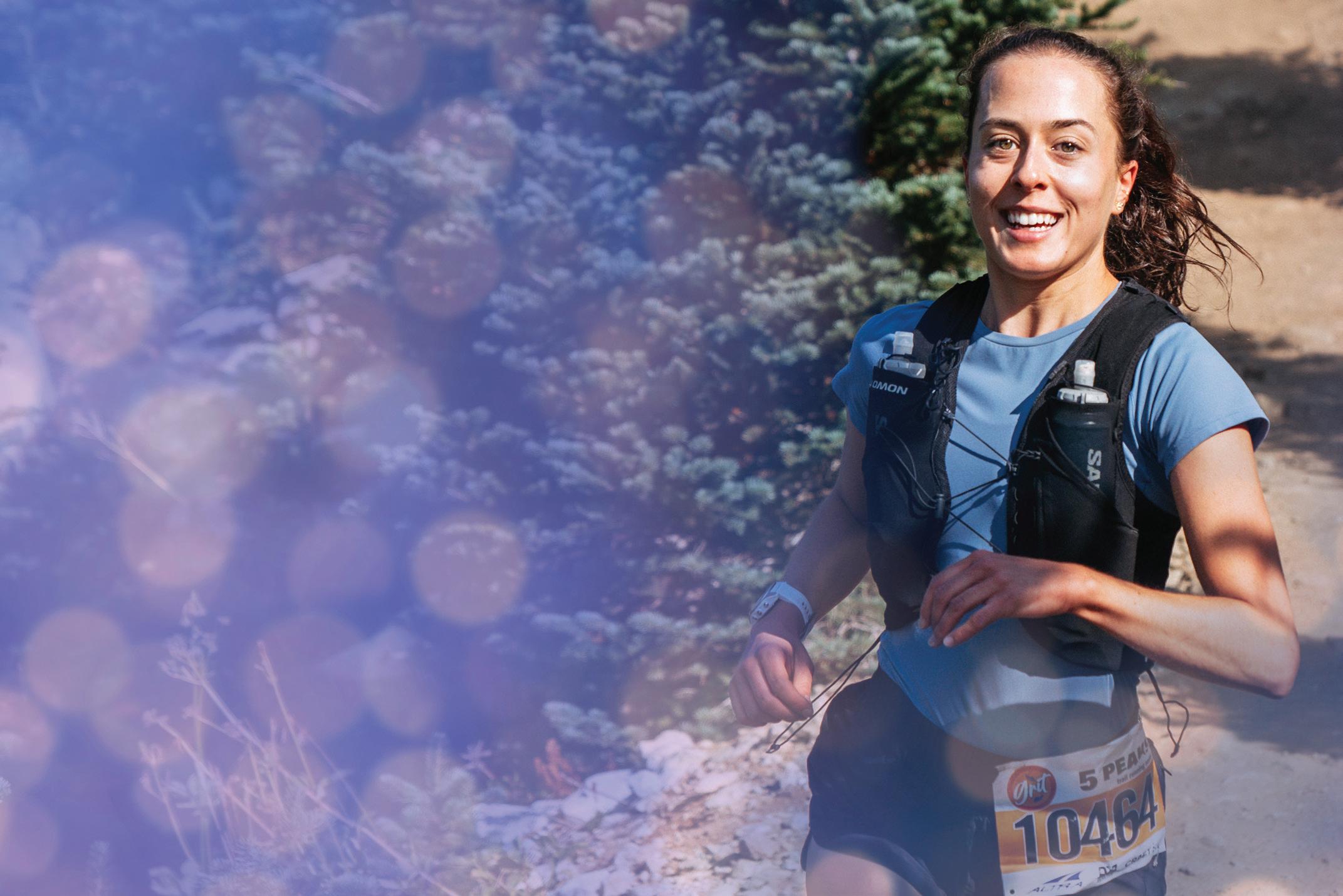





If you love snapping pics of your meals on your travels, new research published in the American Journal of Clinical Nutrition reveals that you may have an easier time tracking your macros than if you had missed out on the photo op. In this study, over the course of 24 hours, participants were either asked to snap a photo of their meals, or to forgo a photo and simply enjoy. The results showed that when people took a pic, they were able to better recall what they had eaten throughout the day, and the accuracy of their nutritional intake was far higher than the group who didn’t take photos.
Study authors note that this could be a simple method to better track caloric intake if you’re interested in supporting an optimized diet.

CCanadian Paralympians will now receive financial rewards for their medal wins, marking a significant stride towards equity with Olympic athletes. The new Paralympic Performance Recognition program, effective from the 2024 Olympic Games onward, aims to bridge the gap in recognition and support between Paralympic and Olympic athletes. Funded in part by an $8-million fund from the Paralympic Foundation of Canada, Paralympians will receive $20,000 for gold, $15,000 for silver, and $10,000 for bronze medals. This decision is a historic moment signaling equal value for Paralympic achievements alongside Olympic successes.
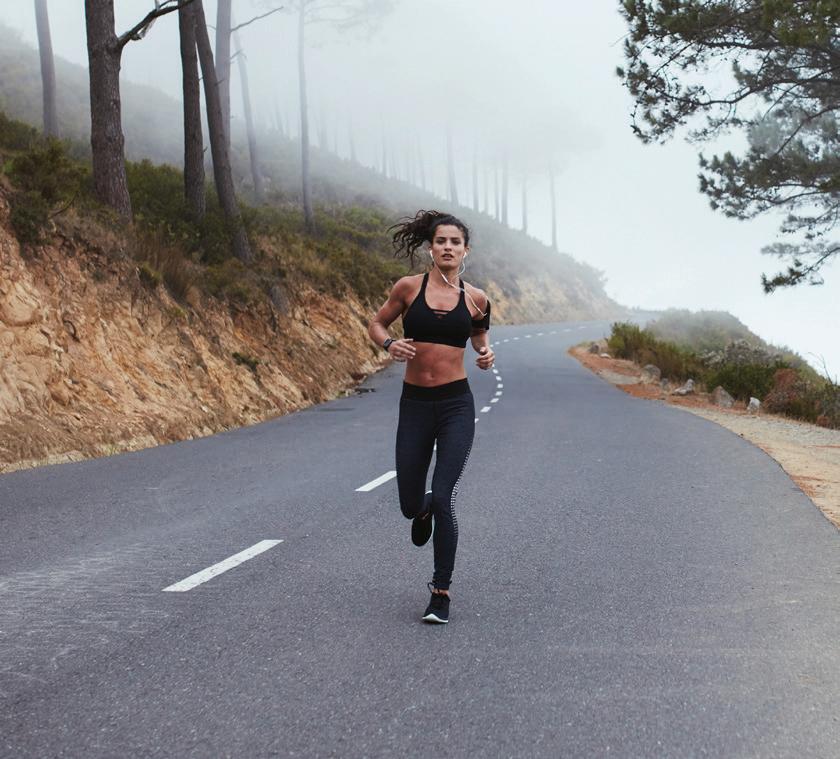
limate change isn’t just a concern for future generations, but an immediate global reality affecting millions worldwide. And recently, the American College of Cardiology, found that for athletes who engage in rigorous outdoor training, the combination of extreme temperatures and airborne pollutants, exacerbated by events like wildfires, presents significant cardiovascular risks. These conditions trigger physiological responses such as increased blood flow and heightened sympathetic activity, which strain the cardiovascular system. Additionally, air pollution further compromises athletic performance and speeds up the progression of cardiovascular diseases. These warnings don’t mean that you need to give up outdoor training altogether, but they do signal that extra precautions need to be taken. Study authors emphasize adequate hydration and avoiding exercise in poor air quality to stay safe.

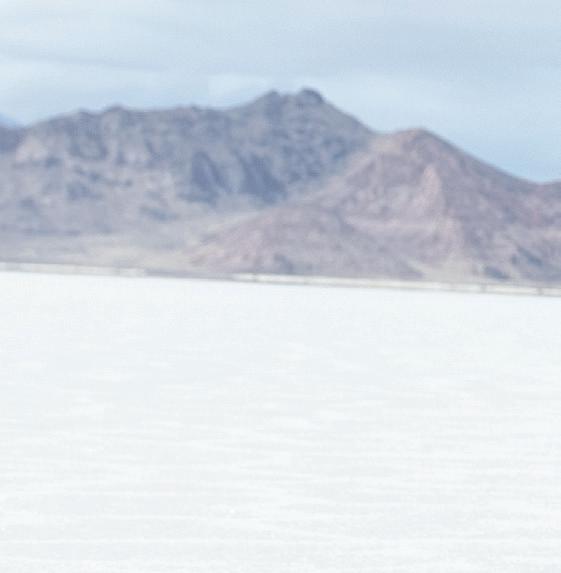
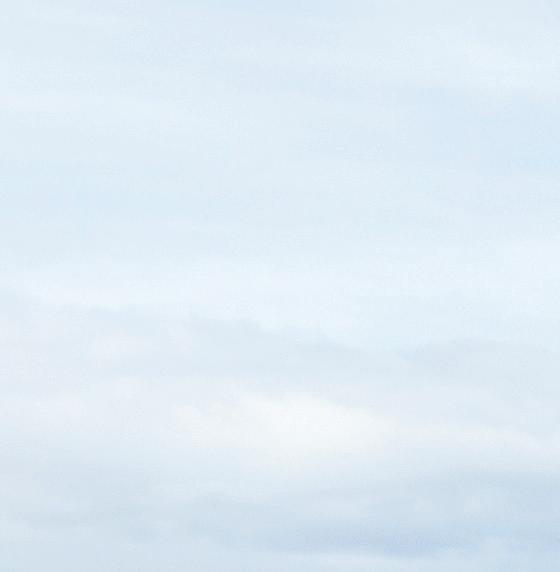
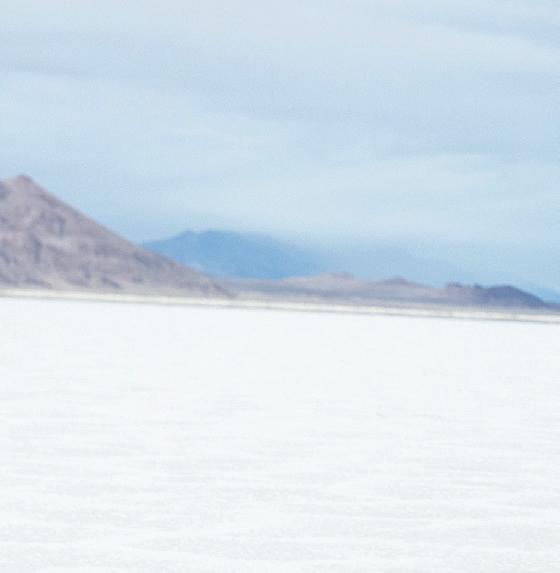



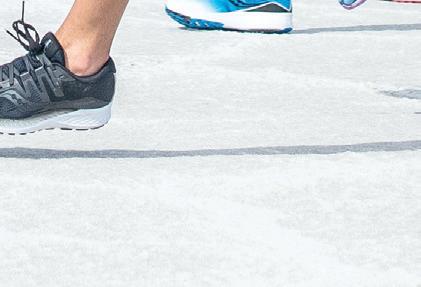




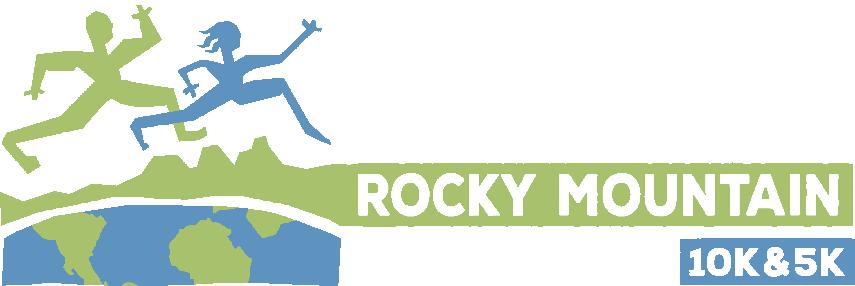
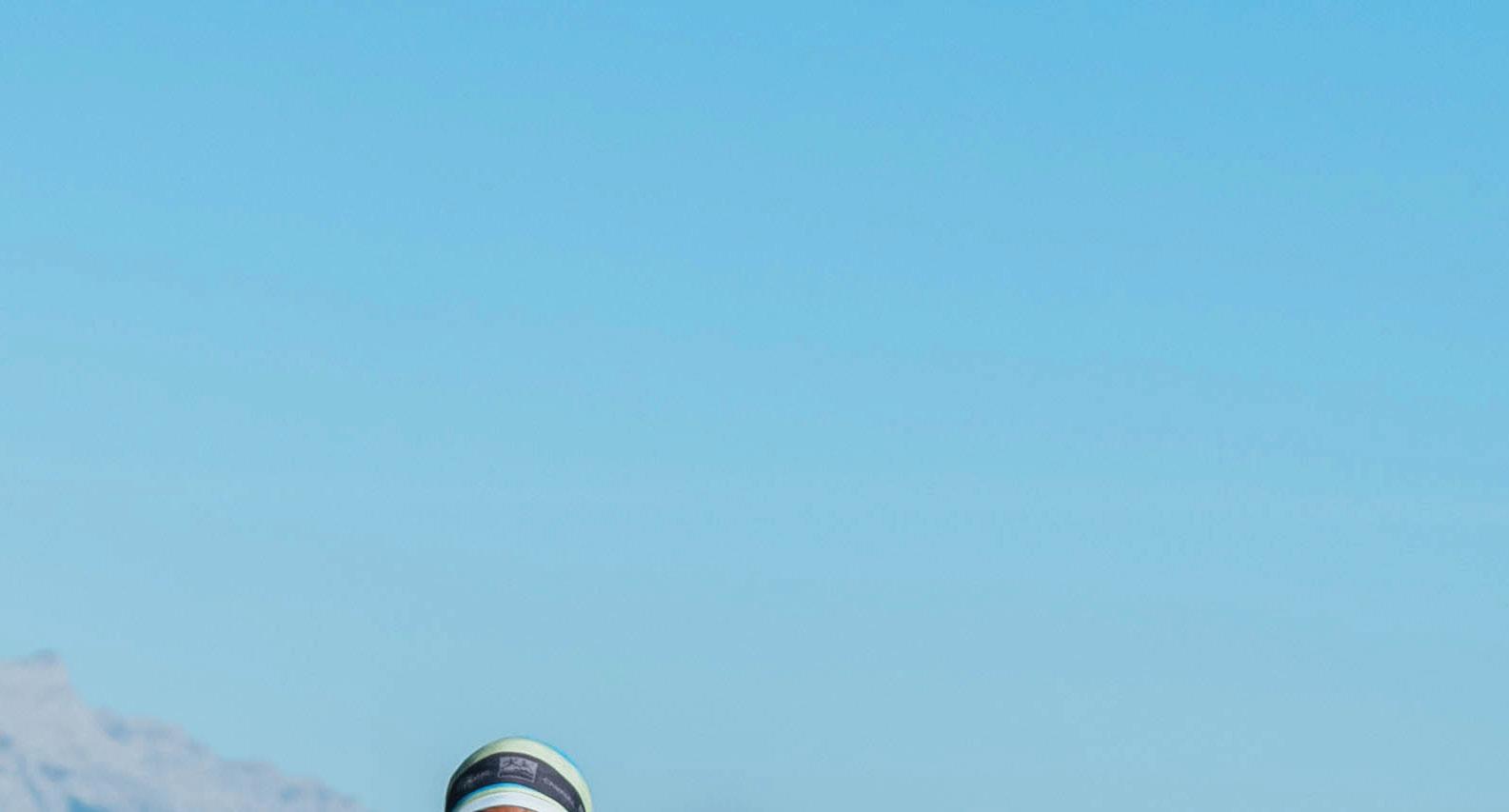
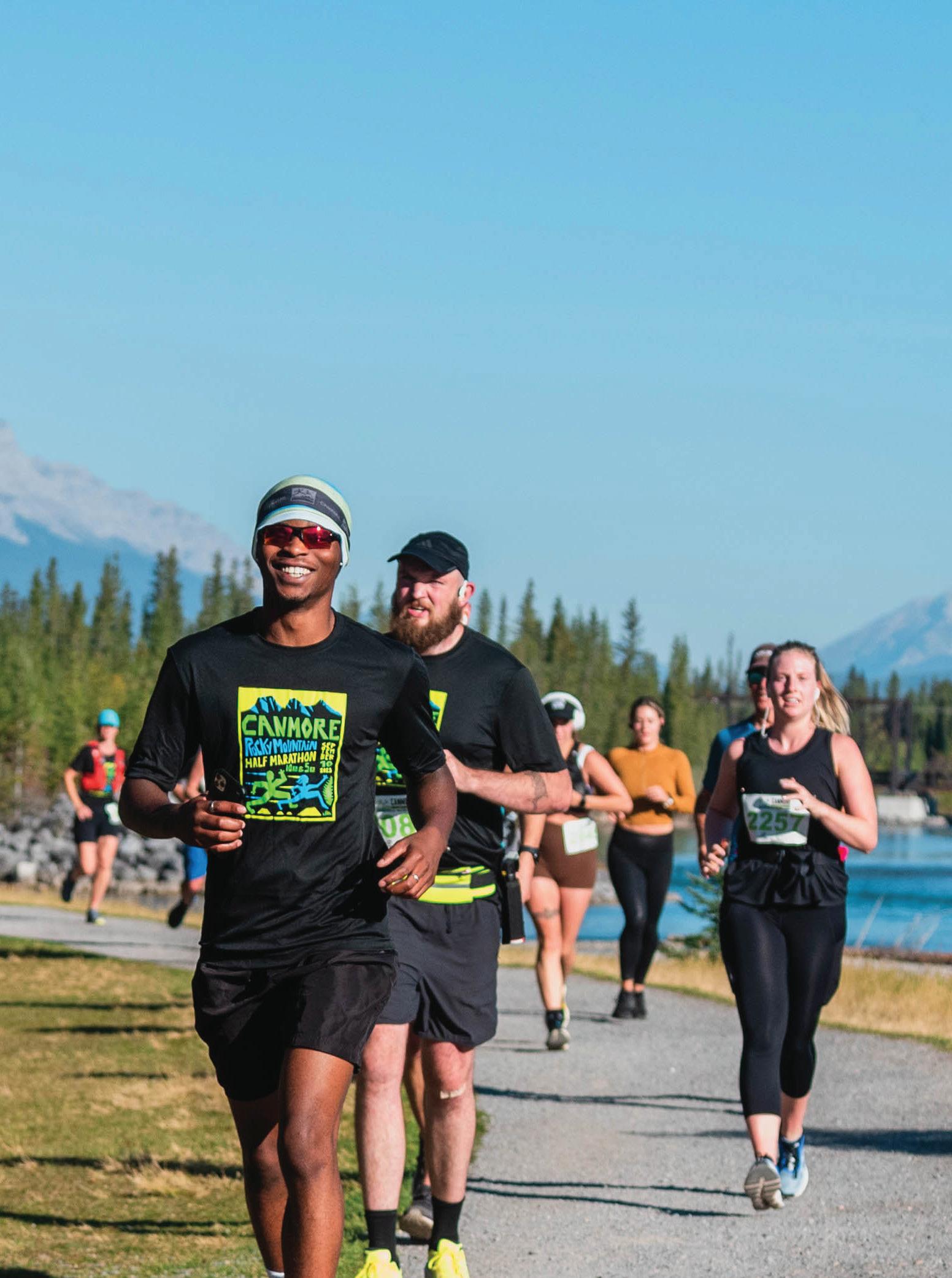

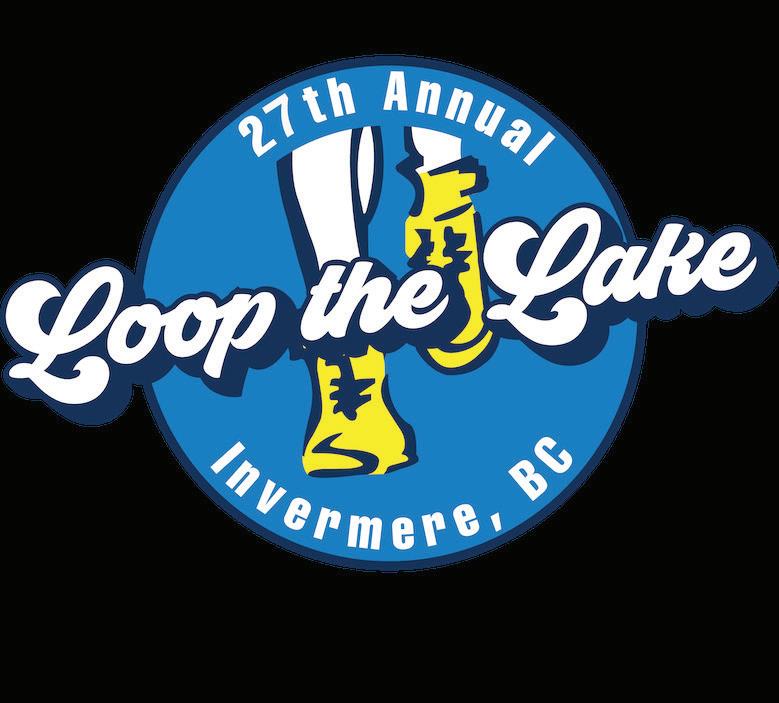
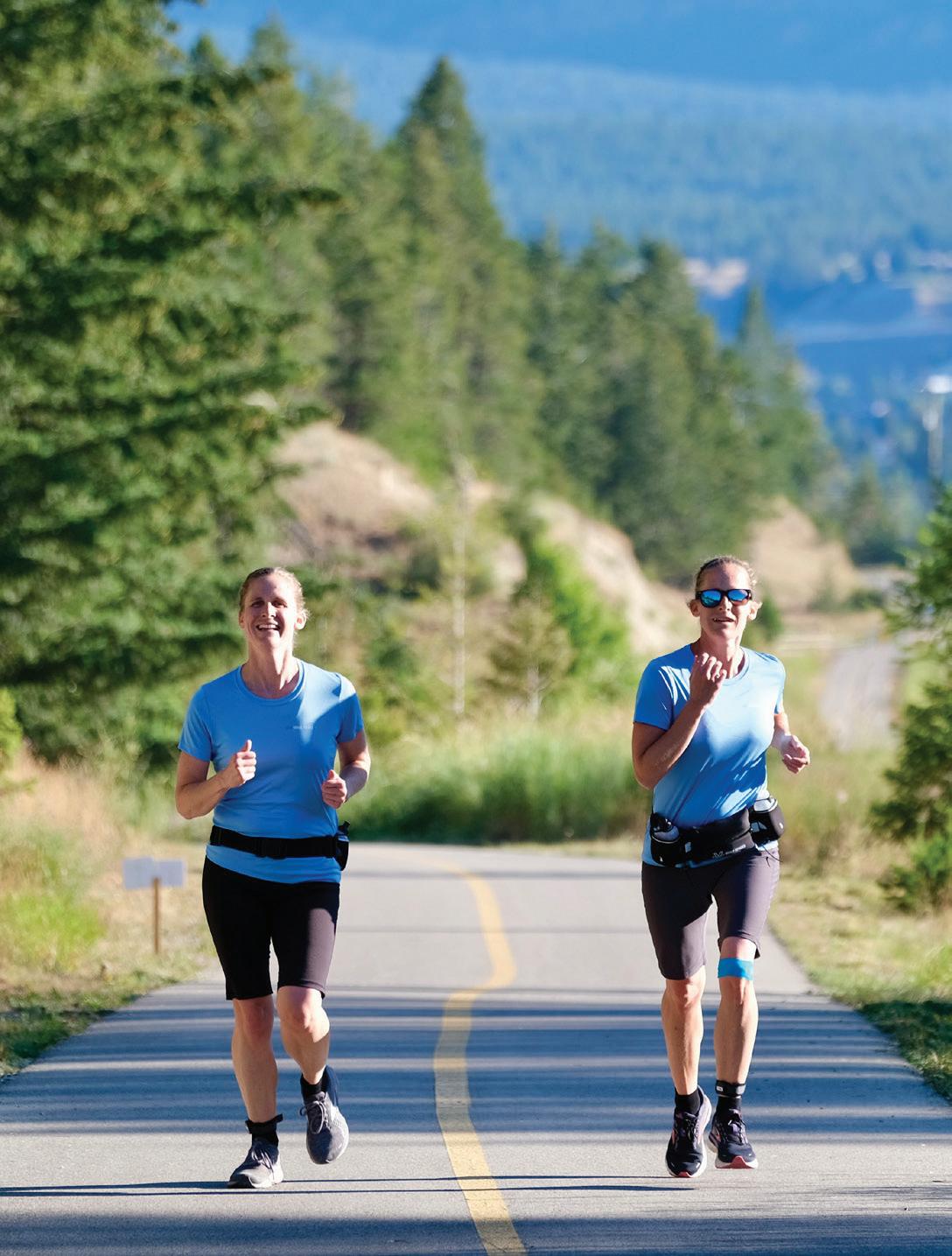
Increase riding time and reduce injuries to add more fun to your biking experiences
BY CORY MAYSTROWICH GRAHAM MCKERRELL
One of IMPACT Magazine’s Canada’s Top Fitness Trainers 2024, and the owner of Trigger It Personal Training in Calgary, AB.
TRIGGERITPT TRIGGERITPT PUMA
Mountain biking is a great way to get in cardiovascular exercise and can also help increase muscle strength, reduce stress and a nxiety, and improve balance and coordination.
Mountain biking is all about counterforces—you must be able to pump the bike to carry speed, but also be able to absorb an unexpected bump, root or object along the trail or path. Those two counterforces are opposite movements, but equally important. Keeping your body position centred on the bike at all times requires countless counter-movements as you have to move your body backwards and forwards, and side to side, as well as push up and down when new conditions or objects come at you on the trail. It’s for this reason that training with exercises that work different parts of the body simultaneously, especially those that work diagonally, mimic the movements used on the bike.
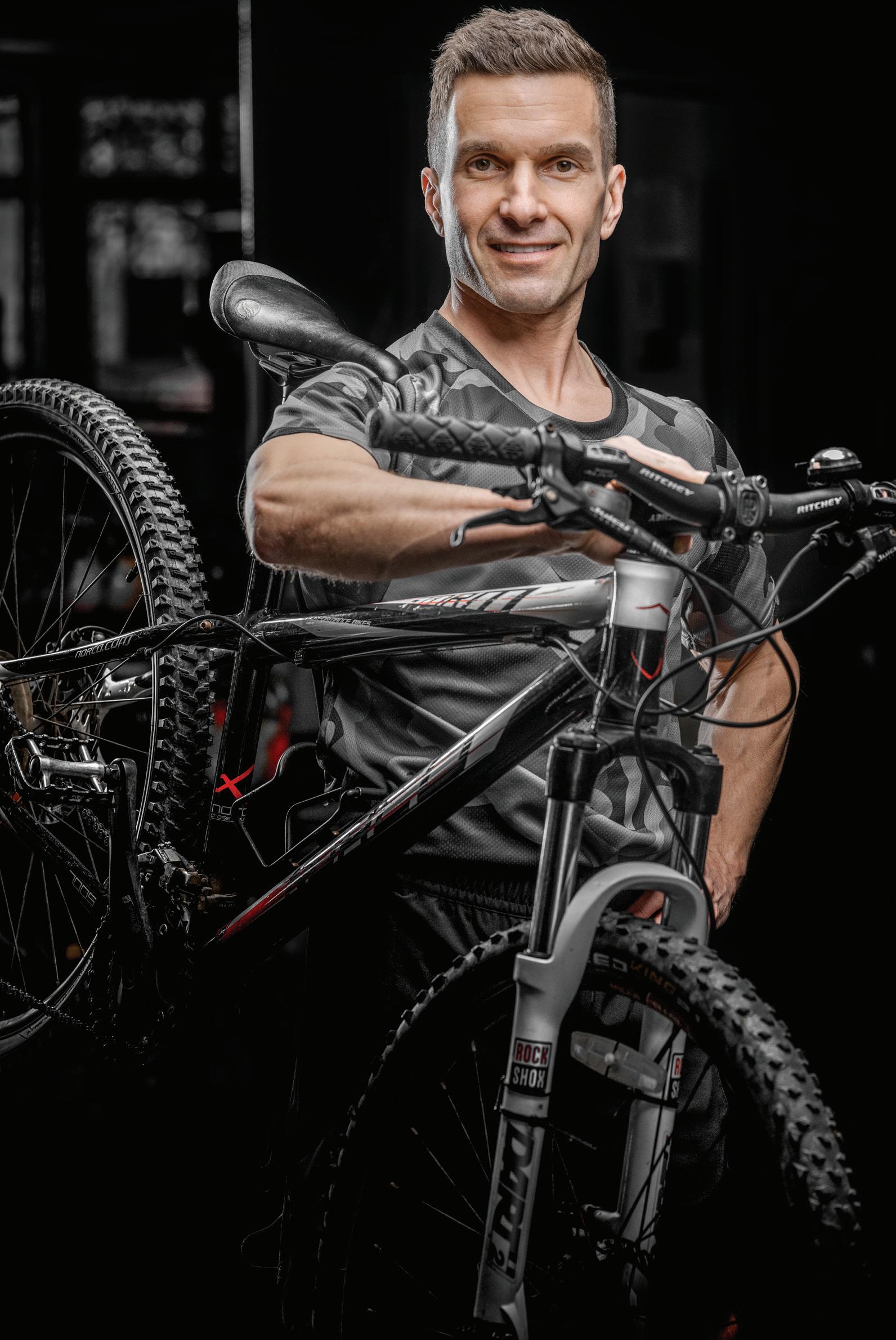
For any program to be successful for any athlete, it has to address the needs posed by their sport. In my experience there are five main areas that should be focused on to maximize your time and effort in the gym and on your mountain bike:
1. Injury Prevention – Should be the top priority for any athlete no matter what sport.
2. Core Strength - The core is where building a strong, injuryresistant body begins. W hen the core gets stronger, it’s more efficient at preventing low-back fatigue, and is better at engaging in high-impact movements like hard sprints and helping to absorb a rough landing.
3. Grip Strength – Helps keep a rider always in control, especially during extended downhill sections, leading to better overall endurance.
4. Hip Strength – The hips (hamstrings and glutes) are the powerhouse muscles of the lower body that a rider relies on the most to drive their pedalling strokes. Climbing hills, sprint efforts and absorbing trail impacts with your legs can all be improved through focusing on exercises like deadlifts and Bulgarian split squats that target the hips instead of the quads.
5. Strength / Power Endurance – Increasing strength and power in key areas will add to one's overall physical performance and overall biking enjoyment. Reducing imbalances between limbs and muscles is directly responsible for reducing injuries, delaying shortness of breath or even quitting early because of tired, sore legs.
B efore beginning any training plan, check in with your doctor or health care professional.
Warm up: Prepare your body with five to ten minutes of light cardio activity to get your mind and body ready for training. Hop on a bike, rower, air bike, treadmill or elliptical machine if you have access to a gym or go for a quick jog, jump rope or perform jumping jacks if you don’t.
P ro Tip: I nhale during initial exertion, then exhale as you return to the starting position. Breathe regularly during faster exercises.
W hen you first start these exercises, begin with two sets and rest for 60 to 90 seconds between each. As you feel more fit or if you want more of a cardio challenge, increase to three sets and rest for 30 to 45 seconds.
2-3 sets of 15 reps per leg
Equipment: None – bodyweight
These lunges warm up your quads, hips and core to get them ready for the exercises that follow. These are the areas of your body you'll engage most when mountain biking.
1. Stand with your feet slightly apart.
2. Step one foot forward into a lunge. Your back knee should drop at a right angle to the ground. Your forward knee should also be at a right angle.
3. As you step forward, rotate your body to the side in the direction of your lead knee. Have arms at chest height, slightly elevated from your sides.

4. Drive up and through your forward leg to take the next lunge step. Your back knee should now be out front.
5. Repeat.
Pro Tip: If you don't have enough space, you can stay in one spot and alternate your legs. Make it easier by keeping your back leg straight. Ensure that your knees do not go inward and stay in a straight line with your foot and hip.
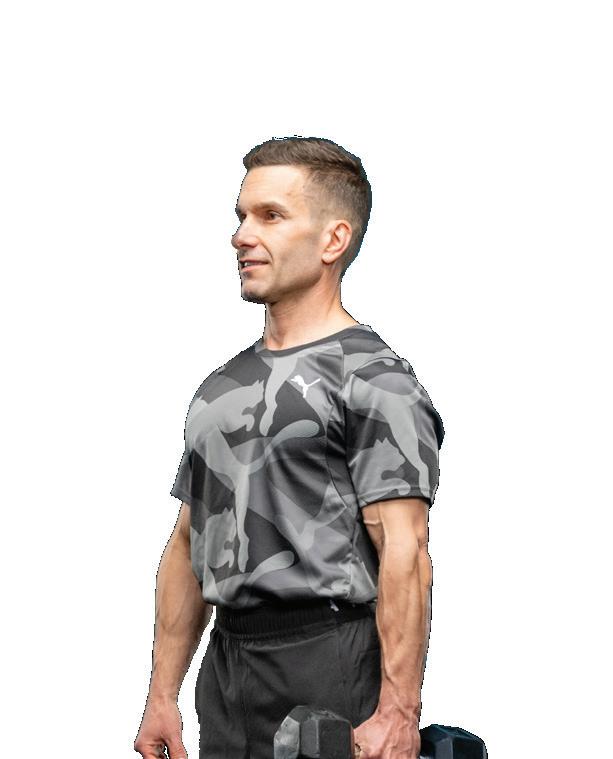

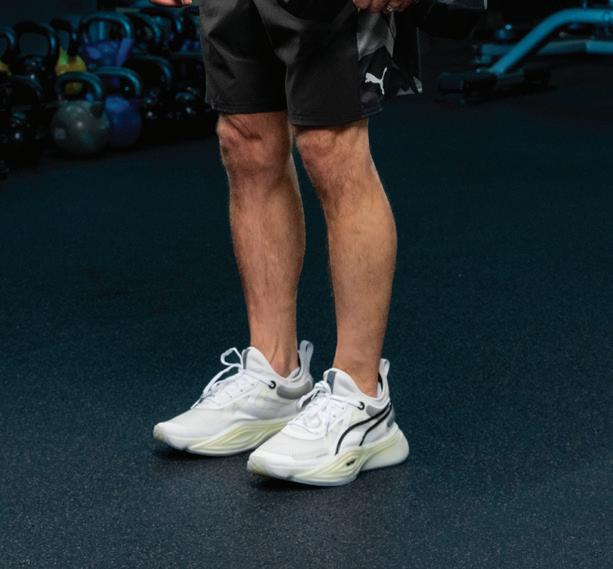
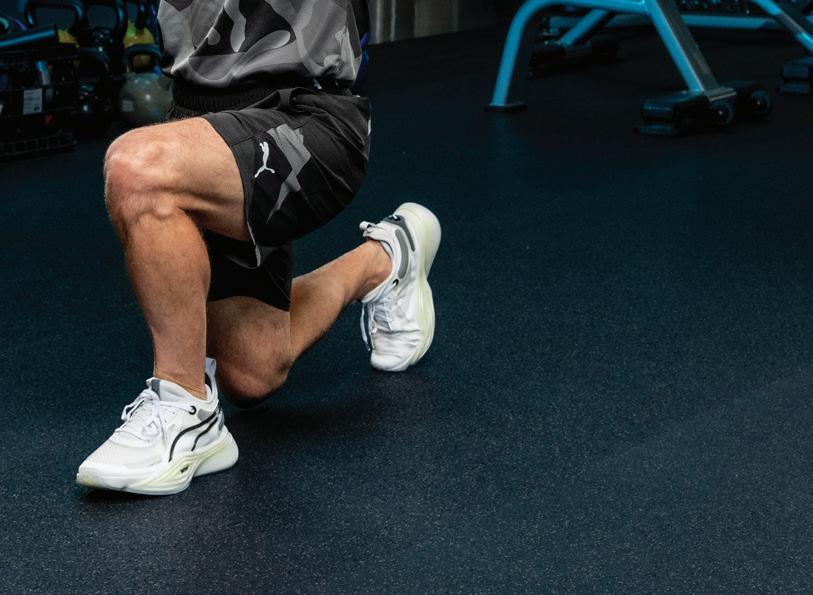
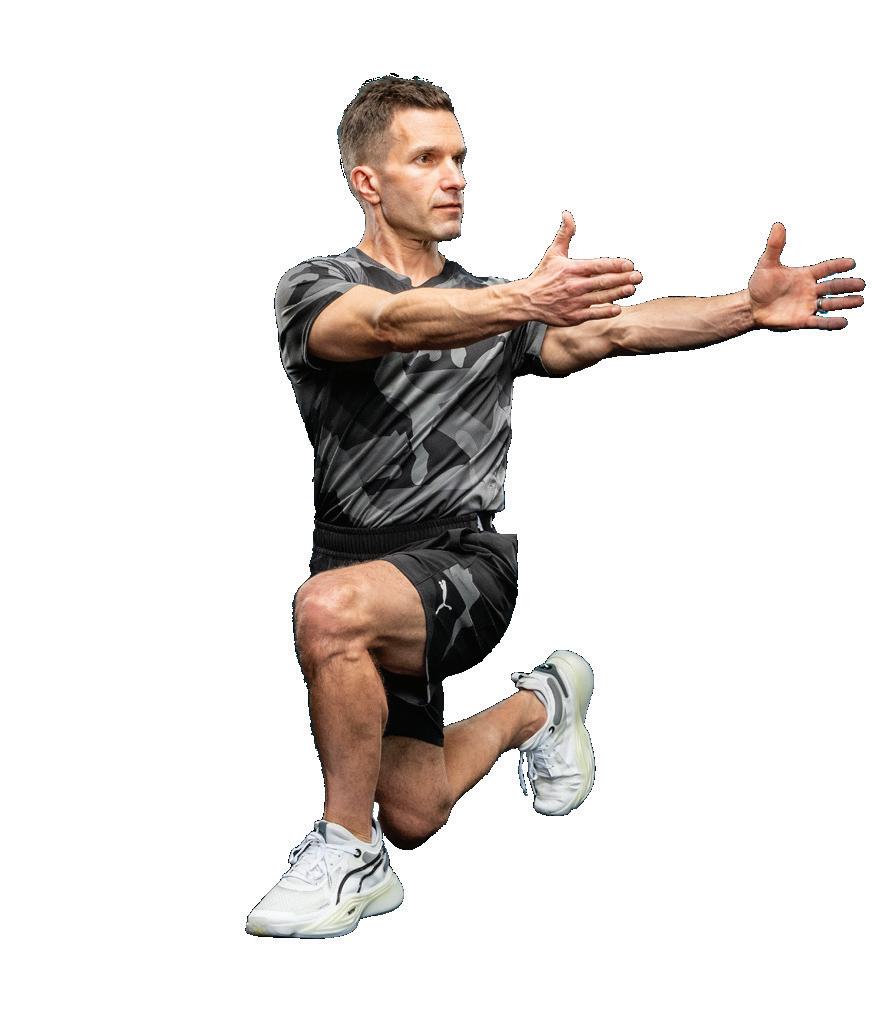
2-3 sets of 15 reps per leg
Equipment: One moderate-to-heavy dumbbell or kettlebell
1. Stand with feet shoulder-width apart, holding a dumbbell/ kettlebell in your left hand.
2. Centering your weight over your right foot, bend forward at the hips as you extend your left leg backwards; maintain your balance as you lower the dumbbell/kettlebell toward the floor. Do not let your hips rotate.
3. Return to the start position by squeezing your glutes; your core should remain engaged and your back should remain straight.
4. Switch to your other side and repeat.
Pro Tip: Modify the difficulty by adjusting how far down you bend toward the floor. You can also use a lighter or heavier dumbbell or kettlebell. •
2-3 sets of 15 reps
Equipment: TRX or large exercise ball This exercise strengthens your glutes and hamstrings for more powerful and efficient pedalling; these muscles also help support your knees.
1. Lie on your back with your arms extended down by your sides, with your legs extended and your heels either resting atop the exercise ball or tucked into the TRX handles.
2. Tighten your glutes and abs as you pull your legs back, rolling the ball or pulling the TRX handles toward your butt with your heels.
3. Stop when your knees are bent at slightly more than 90 degrees.
4. Extend your legs straight again, rolling the ball or TRX handles away from you.
5. Repeat.
Pro Tip: If you struggle to maintain balance as you roll the ball, place your heels slightly farther apart on the ball and move your arms away from your body; increase difficulty by keeping your heels closer together and by moving your arms closer to your body.



2-3 sets of 15 reps per arm
Equipment: Two moderate-to-heavy dumbbells The plank targets your abdominals and improves core and neck stability. The rowing element works your lats and shoulders. Keeping your core strong will protect your lower back during long, hard rides. A strong core helps maintain proper riding position, allowing you to put less pressure on your forearms, wrists and hands.
1. Begin in a plank position with hands on dumbbells and feet set wide apart.
2. Row one arm/elbow back, bringing the dumbbell up toward your rib cage.
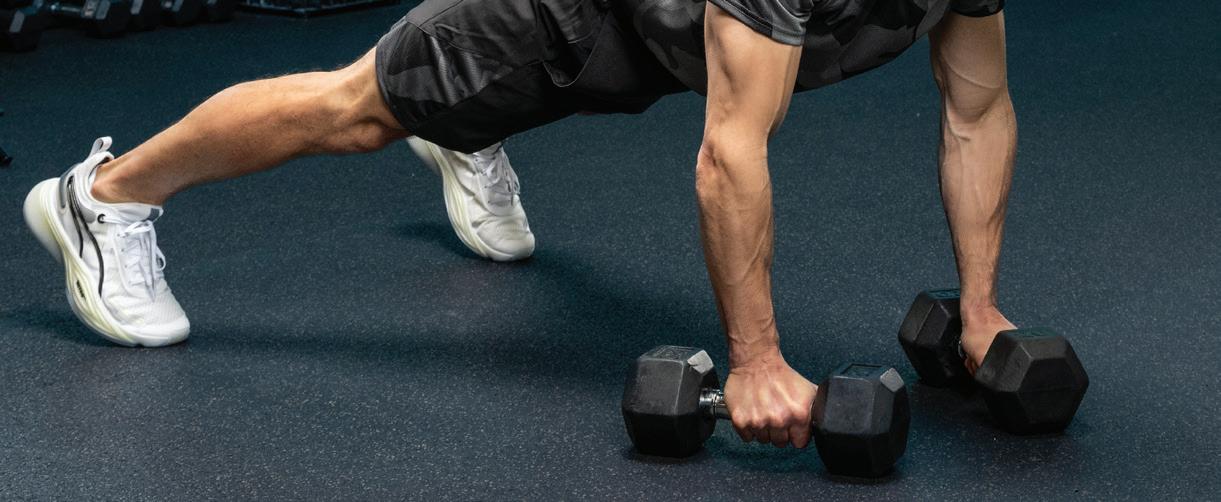
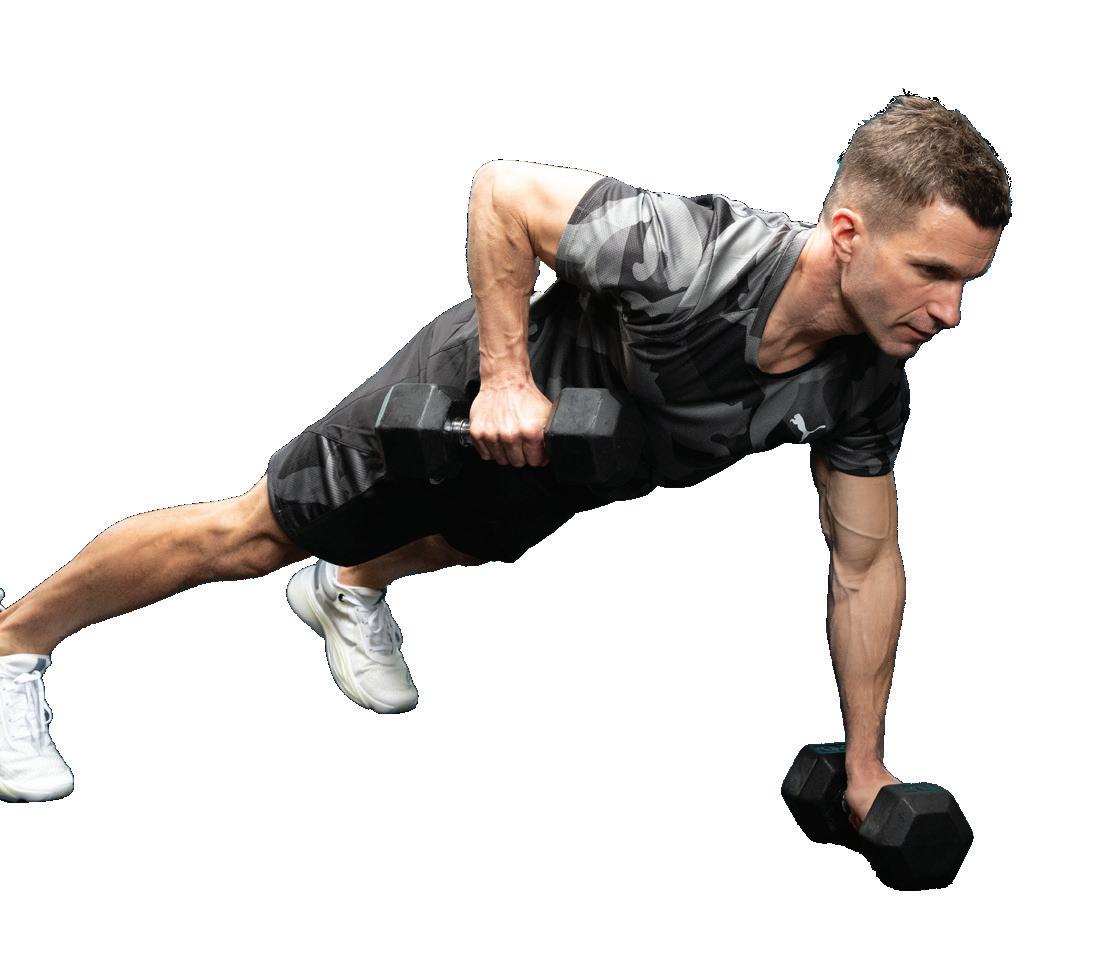
3. Return dumbbell to ground and repeat.
4. Maintain a plank position throughout the exercise by keeping the body straight from head to toe. Do not let hips rotate or drop; keep chin slightly tucked, looking at the ground ahead of you to better engage neck muscles.
5. Switch arms.
Pro Tip: If you are unable to maintain a stable trunk while on your feet, drop to your knees to complete the exercise. You can also use a lighter or heavier dumbbell.


BY FYONNA VANDERWERF GREG JAMES THOMSON
One of IMPACT Magazine’s Canada’s Top Fitness Instructor (2023) and Canada’s Top Fitness Trainer (2024) and owner of Hive Muskoka in Bracebridge, ON. HIVE MUSKOKA ON RUNNING
Oh, the glutes. They're the steering wheel for our posture and key to moving strong. Let’s keep things simple and effective. By adding a functional twist to glute exercises, you can put a fresh spin on classics that work in multiple planes, boost balance, coordination, and muscle awareness. These exercises highlight a holistic approach, making every part count. Consider the option of completing one set on the left side first for all the exercises, then switch to the right.
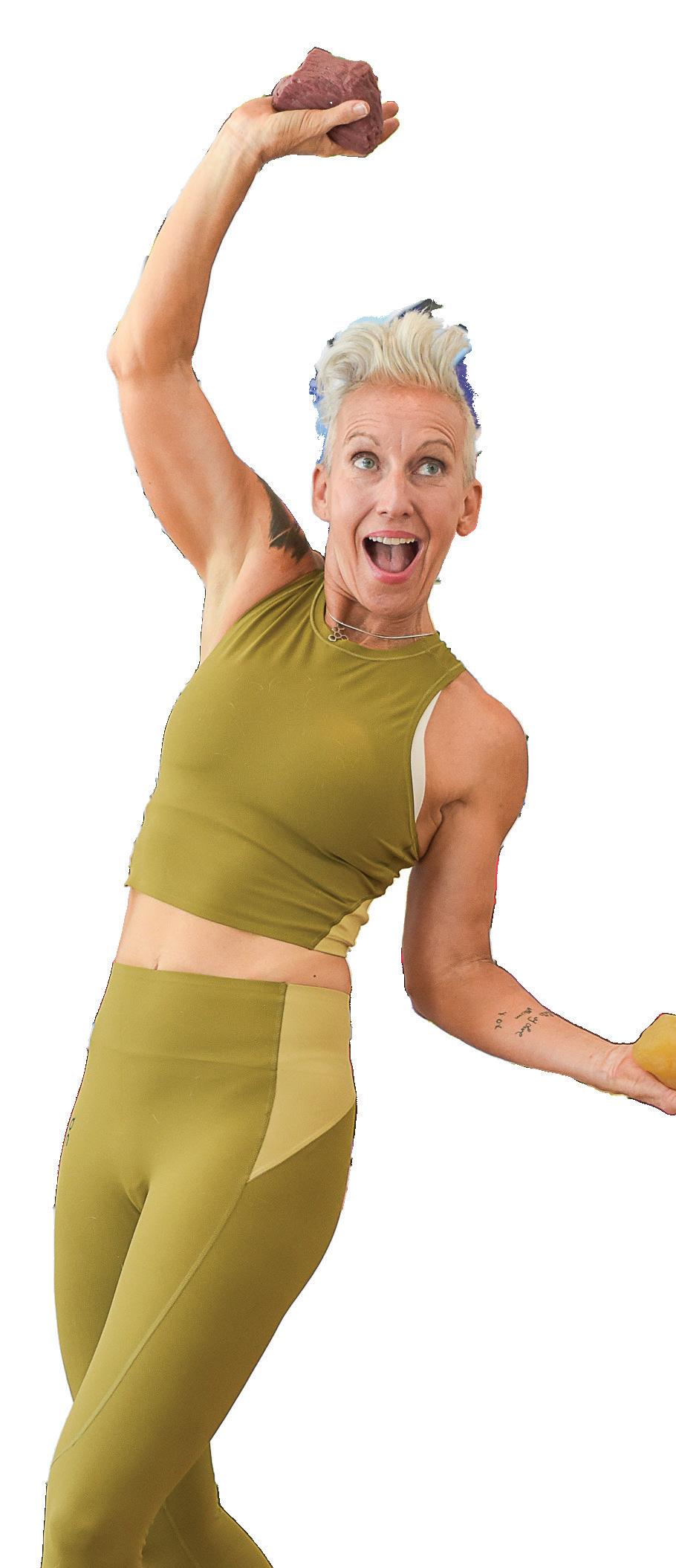
3 sets x 10 reps each side, 30 second rest between sets
Equipment: Flat surface and tubing/cable machine if available, elevate your non-working leg.
1. Step into a side lunge, arms pulled in the opposite direction by tubing.
2. Pull tubing handles to chest height and hold as feet come to hip distance apart.
3. Push the tubing handles in front of you while bracing with your core muscles, then step alternate legs back in reverse lunge. Place your weight on the midpoint of foot to connect pelvic floor.
This exercise engages various body areas, including glutes, core, and adductors, promoting integration. It encourages the body to function cohesively and emphasizes breath awareness. Adaptations include slowing down the movement, using one arm, closing the eyes for heightened focus or placing outer hip against a wall for added stability.
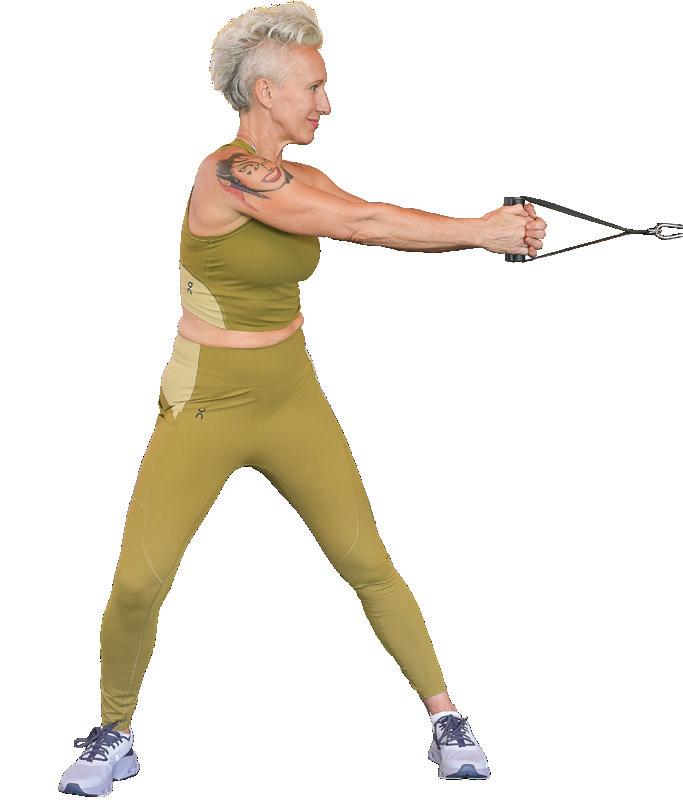


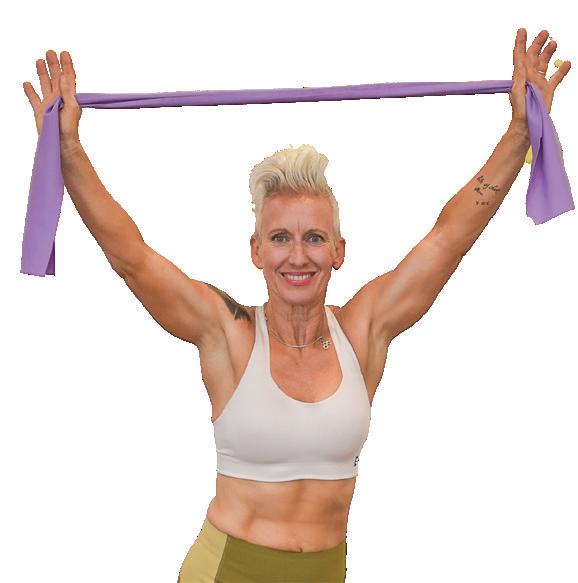
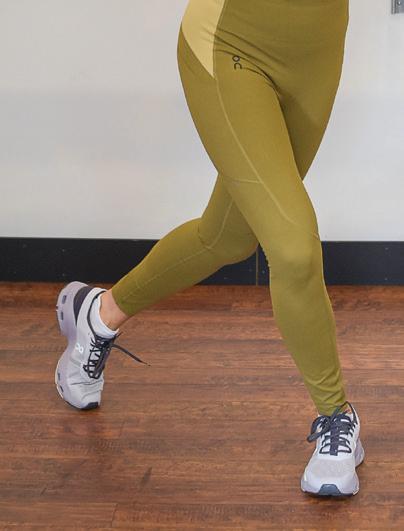




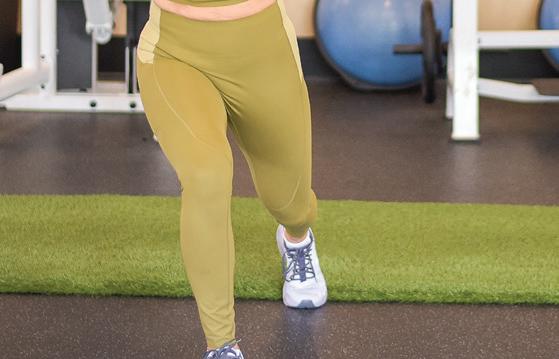
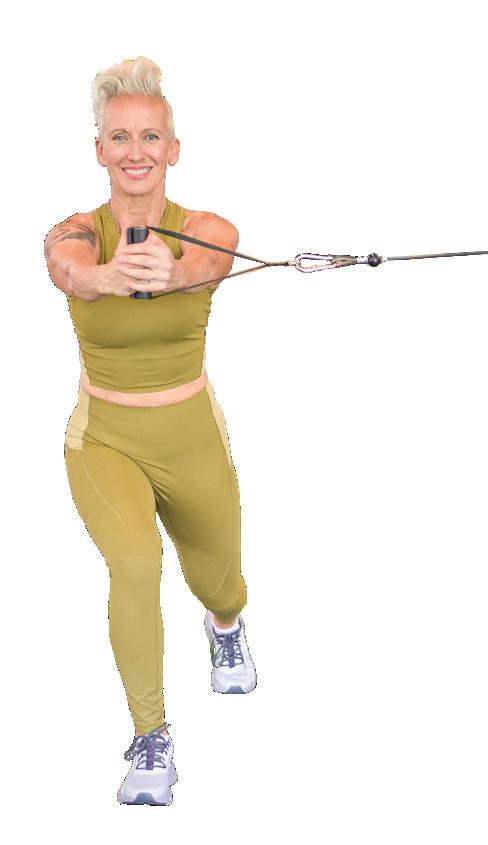
3 sets x 10 reps each side, 30 second rest in between
Equipment: Flat surface and tubing for overhead hold
1. Stand with tubing held in hands above head.
2. Bring right foot behind left ankle, sink down in a curtsey, arms above head.
3. Bring leg back to stand, repeat other side.
This movement focuses on balance, core bracing, and glute activation. It challenges stability and adapts to uneven surfaces, supporting hip strength and integrity. Adaptations include having a stability ball behind your back or tilting the tubing to one side to activate obliques when going side to side. •

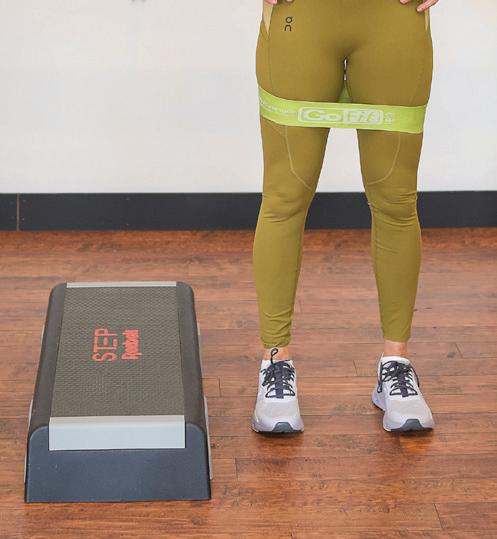
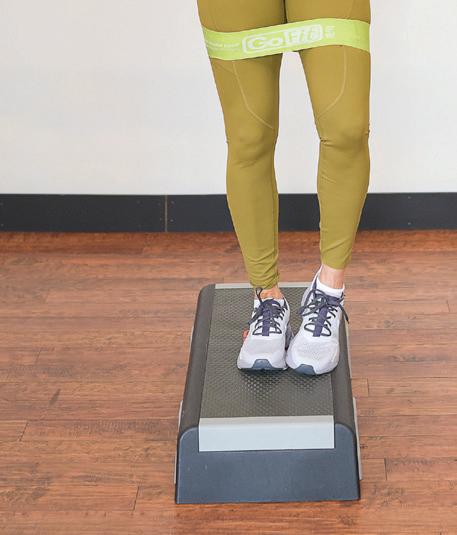


3 sets x 10 reps each side, 30 second rest in between
Equipment: Rock, step or stair with a walking stick, tubing or a small ball or weight plate.
1. Standing beside a step or stair - step up laterally.
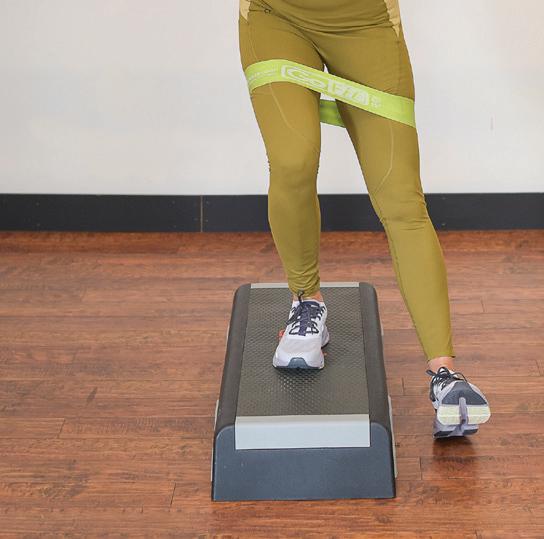
2. Extend arms in front (or holding a band or tubing), and bend inside knee.
3. Tap other foot down on the floor beside step, then step down to side.
This movement targets glutes in multiple planes and supports ankle integrity. It’s ideal for outdoor activities like hiking and running and provides injury prevention and increases lateral strength. Adaptations include using a side surface for support or removing the step for lateral movement without elevation.
3 sets x 10 reps each side, 30 second rest in between
Equipment: None or bands
1. Hing slightly or with more depth, knees bent/straight using bands or nothing or all.
2. Turn out one leg as if going over a hurdle.
3. Elevate slightly, press back, squeeze, repeat other side.
This is a great way to integrate gluteal muscles with support from the back and hamstrings, and also to enhance posture and movement alignment. It supports balance, coordination and injury reduction by effectively stabilizing the pelvis. Add an unstable surface to balance on for even more fun.


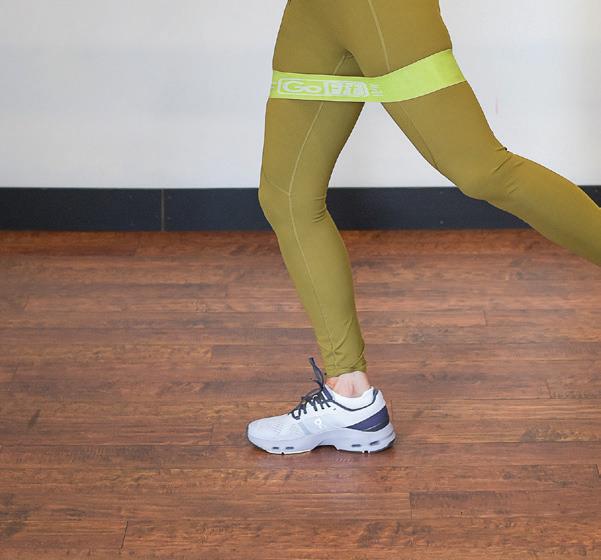
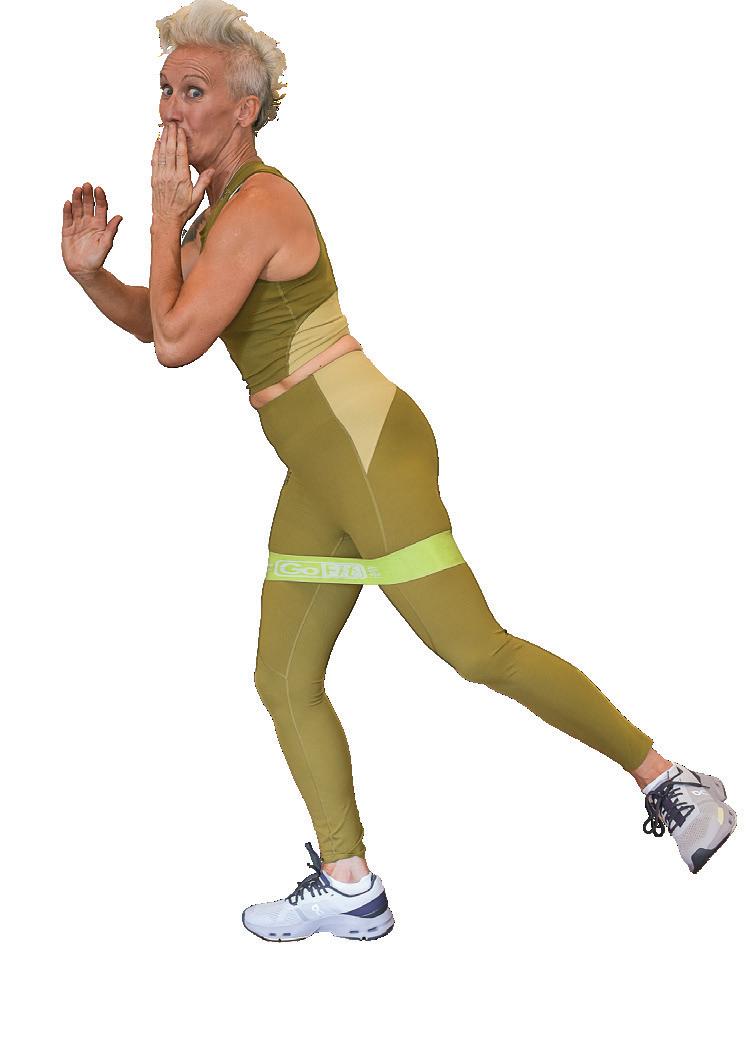
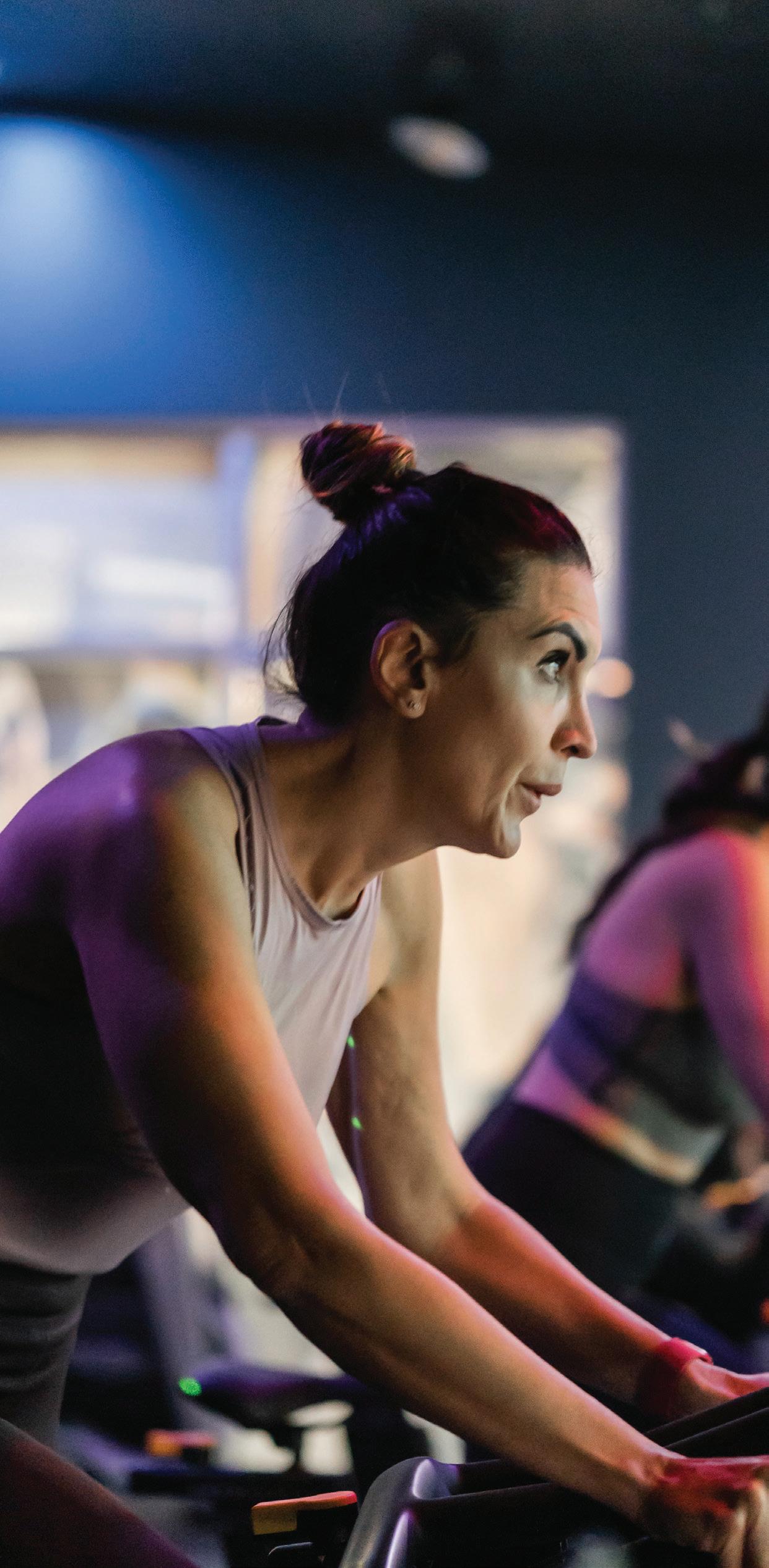
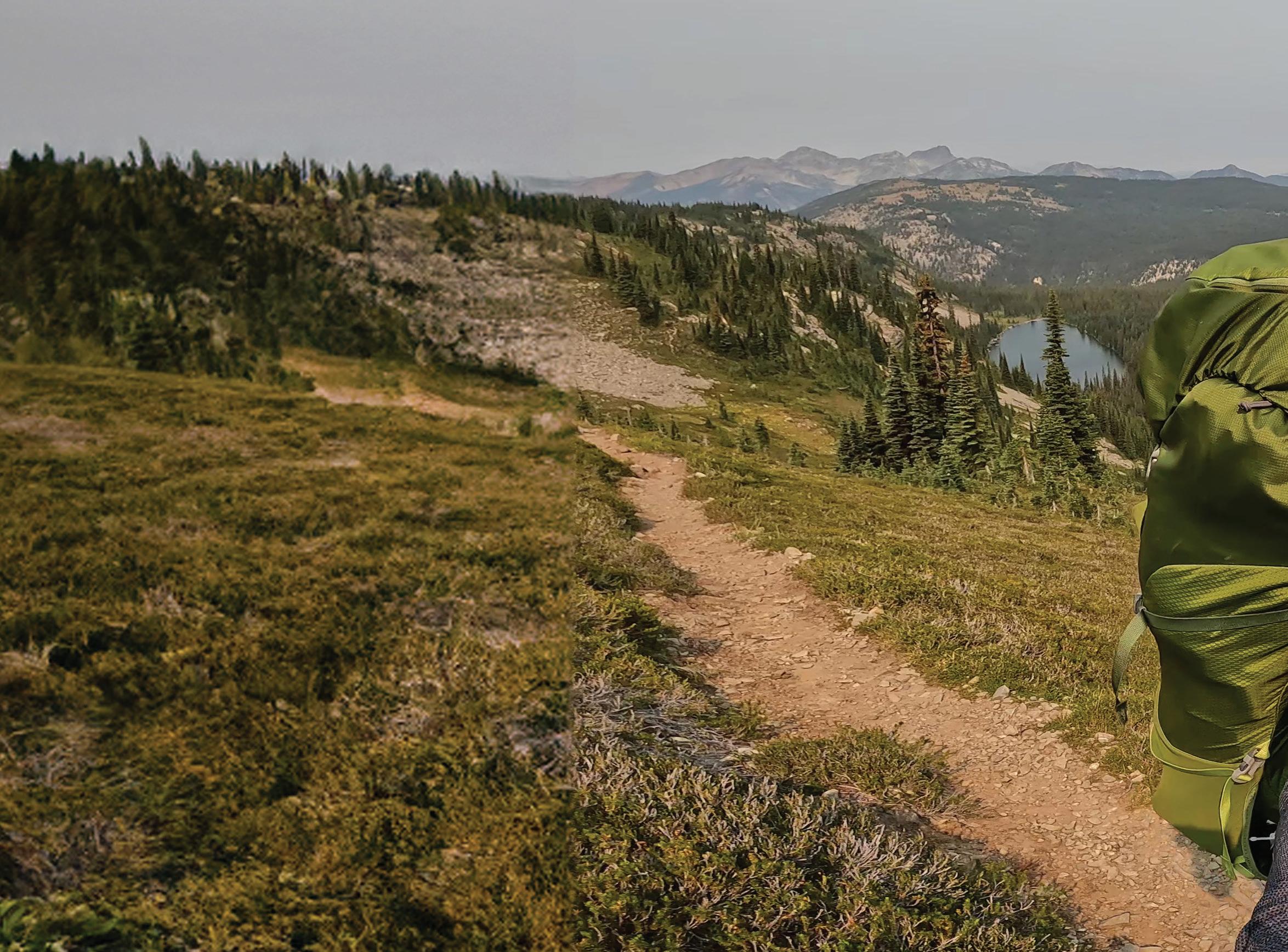
Find yourself skipping workouts in favour of heading outdoors during the summer? Here’s why combining both might make for your healthiest season yet.
BY SEAN ALLT SEAN ALLT
Owner and head coach of Backcountry Strength in Chilliwack, B.C., and an IMPACT Magazine’s Canada’s Top Fitness Trainer in 2022 & 2024.
SEANALLTCPT SEAN ALLT BACKCOUNTRY STRENGTH
With summertime upon us, most of us find ourselves wanting to spend more time outside. For many, the thing that we give up to spend more time outdoors is our time at the gym. But what if you didn’t have to sacrifice one for the other? As it turns out, taking your workouts outside during the summer months might actually net you benefits that reach further than just working up a sweat.
Your sleep/wake cycle is driven by a variety of factors, including exposure to sunshine and fresh air during the daylight hours. By deliberately spending time outside during the day, you are helping to prime your nervous system for better, deeper sleep at night.
Japanese researchers have been studying Shinrin-yoku (Forest Bathing) for many years. This research shows that spending time, and breathing deeply, in green spaces promotes the intake of healthy bacteria that naturally occur in these settings. These friendly bacteria eventually find their way to your gut and help to support a healthy microbiome. This helps support improved digestion and can even give you a mood boost.
Vitamin D and mental health are closely intertwined, and sunlight is one of its best sources. But mental health is impacted by more than just vitamin D; in fact, the healthy bacteria found in nature can also improve your mood. You know that uneasy feeling in your belly you get when you’re stressed or anxious? Almost like butterflies, or even nausea? That works both ways. When you experience stomach or bowel upset, it sends a signal to your brain telling it that something’s wrong. That signal can lead to anxiety or depression if it’s not kept in check. Getting your regular dose of vitamin D from the sun and keeping a balanced microbiome thanks to the friendly bacteria found outside can directly improve your mental health.
Want to build stronger relationships with friends, family, or even colleagues? Science has shown that when we exercise near someone, it causes chemical reactions that actually boost our level of empathy towards one another.
Asking someone to join you for a workout at the gym is great, but it may not be for everyone. It’s often easier to invite someone to join you for a walk, hike, run, bike, or even a paddle. For bonus
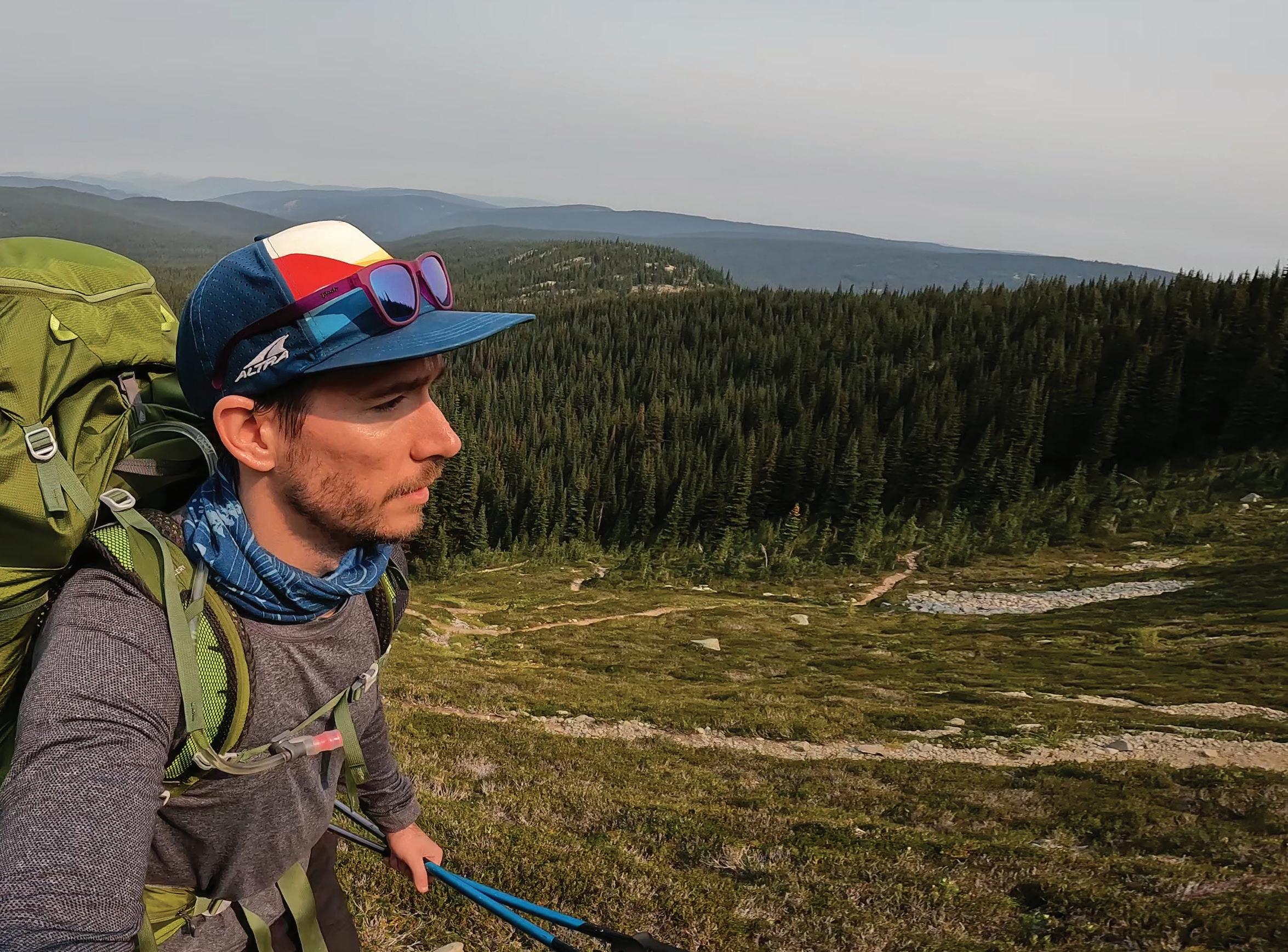
points, leave your phone at home (or go somewhere that has zero cell service) so that you can be fully present with the other person.
The science is clear: Every single human should be performing resistance training at least two times per week. But there’s nothing saying that resistance training needs to be performed in a gym with dumbbells or barbells.
The great outdoors is filled with items you can use such as rocks, logs, your own bodyweight, or the outdoor gyms that are popping up in public parks all over. You don’t have to spend money on a fancy gym membership to exercise. If you love the gym, then by all means, go for it. But if you’d rather spend time outside in nature, then you can absolutely get your workouts done out there—and for free, no less.
When most people think of “working out” they picture a gym, spin studio, or something similar. But there are so many more options when it comes to boosting your fitness. Go for a hike or bike ride, stopping every once in a while to perform a set of pushups, or complete some pullups using a tree branch. Or take a kayak down
to the lake for an upper body, core, and cardio workout. Just because it’s not happening in a traditional gym doesn’t make it any less a workout.
How much excitement does it incite in you to imagine walking on the treadmill or stair climber for an hour? Now, what if instead, you could spend four hours on an afternoon hike filled with breathtaking views. When you’re experiencing enjoyment and adventure during your sessions, you’re much more likely to spend more time doing them. Which is a win-win: you’re committing to a longer workout, but without any sense of dread.
Training outdoors reaches well beyond the workout—training for outdoor adventure inherently encourages you to create memories that’ll last a lifetime. Whether it’s because of the company you share, or the specific adventure you went on, once you catch the outdoor adventure bug, there’s no turning back. So go ahead and trade your gym workouts for time outside in nature. Just make sure that you’re still moving your body with purpose and intention—the special moments you’ll create are guaranteed.
Ready to hit the trails for an adventure like no other? Not before getting these essential questions answered.
BY MEGHAN BURROWS, BSC, PT, MPH
A North Vancouver, B.C.-based trainer and healthcare contracts negotiator with Doctors of B.C. with a Masters in Public Health. MEGHANMARIEBURROWS
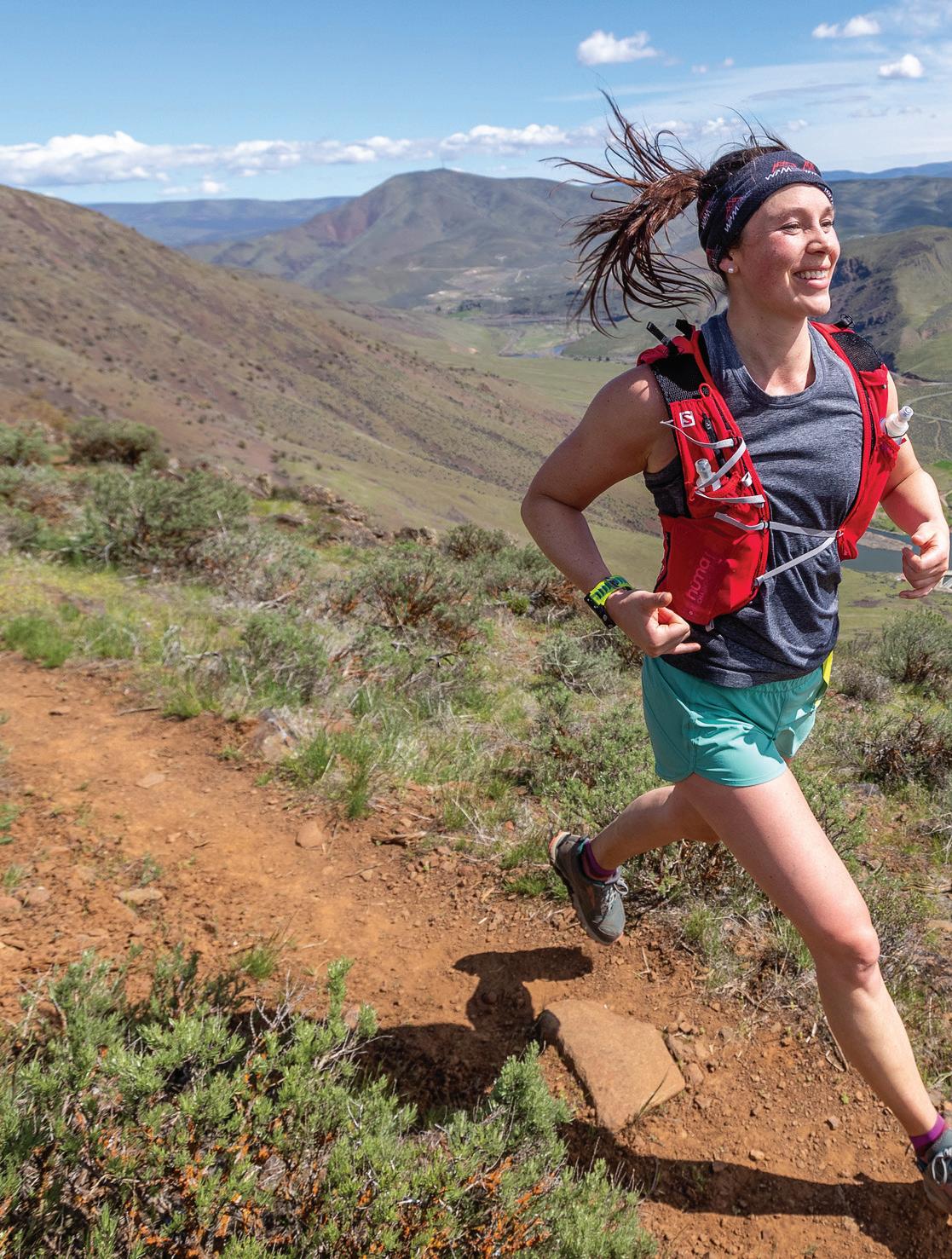
Complete 2 sets of 10 reps of each exercise per side:
• Bird-Dog Crunch
• Side-Plank Clamshell
• Skater Hops
• Wall-Assist Single-Leg Hip Hinge

The days are longer and the sun is out—peak running weather for those looking to hit the trails for an adventure. There’s no doubt about it: summer is the best season to swap out those carbonplated roadies and dip your toes into your trail-running sneakers. But lacing up for the trails takes some added preparation to accommodate for safety, readiness, and ultimate fun. Here, your most burning questions answered for not only introducing trail running into your routine, but maintaining it for the long haul.
A: A warm-up routine doesn’t need to be time consuming, but it should be a part of the trail-running process. The majority of trail-running injuries occur in the lower leg, primarily in the form of sprained ankles. A warm-up routine that includes dynamic flexibility, balance, plyometrics, and neuromotor strength can decrease your risk of injury. Your warm-up will depend on your individual needs and injury background, but see sidebar “Trail Running Warm-up” for a go-to warm-up that addresses the most pressing areas, and gets you prepped for the trails in just seven minutes.
A: Eating is an overlooked and important part of trail running. You are typically out for a longer duration of time and need to account for differences in elevation that can be more calorically costly than running efficiently on flat roads. When you run out of available glycogen, your body will hit the dreaded “bonking” state. This is when you’ll feel your muscles begin to shut down and continuing to run will become very difficult.
Your pre-run meal or snack should be consumed anywhere from two hours to 90 minutes in advance of your run. If you are running for less than 60 minutes, you may not need food or water; however, if you are practicing for a longer distance, it is important that you train with food and water as you want your body to be used to it before the event.
The general rule of thumb is to consume between 150-300 calories per hour and drink 16-24 oz per hour once you are running longer than 60 minutes. The exact amount of food and drink will depend on a variety of factors, including the temperature and how quickly your body processes calories.
A: This question is highly personalized to the shape of your foot and how you like to run. For a true shoe fit,
look for a store that has a treadmill in it, so you can test how the shoes will feel on an incline and at both hiking and running speed.
You should get a shoe based on where you will be running. For example, if you are running on relatively wide, groomed dirt trails, you probably don’t need trail-running shoes with stellar grip and a heavy tread. However, if you are running on rugged mountain bike trails with roots and rock slabs, having a sticky sole with lots of grip would be helpful.
There are wide and narrow styles of trail runners, and some have GORE-TEX, while others promote a quick-dry feature. Chances are, if you are on the trails, your feet will get wet, GORE-TEX or not. Most importantly, pick a shoe that gives you a little extra room as your feet will swell when you run for longer periods of time.
A: Unequivocally, yes. Trail running requires you to be able to pick up your feet over roots and rocks, bound downhill and uphill, and balance speed with agility in natural terrain. Strength training is a key part to both injury prevention and training safely. Incorporating a strength routine two to three times a week is non-negotiable to have longevity and balance in this sport.
For routines that are beneficial for trail running, include heavier compound lifts with lower repetitions. Focusing on range of motion within the movements and adequate rest time in between sets are key features of an effective strength program for endurance athletes. Incorporate plenty of single-leg work. Remember that while you are running more, the gains in the gym will take a back seat—this work should be considered as mostly preventative.
A: If you are starting to run, a typical week would look like three to four run days, two strength- or crosstraining days, and at least one full rest day. The time or distance that you run will start smaller and progress over time. Finding a running group is one of the best ways to get acquainted with other people who have similar goals. These groups often complete a longer run on the weekends, which fits into a typical training schedule of shorter workouts during the week, and the longer, slower run on a weekend.
Training for peak performance takes on a whole new meaning once you add unpredictable terrain
BY BRITTANY PETERSON STEVEN PETERSON
A Radium Hot Springs, B.C.-based coach for Peak Run Performance and a professional trail runner for the Nike Trail Team. RUNHAPPYB TEAMPEAKRUN
Striving for peak running performance in your training regimen can feel like a guessing game, especially when relying solely on standard metrics like pace and heart rate. But what happens when you throw in the variables of trails, undulating terrain, steep climbs, and technical descents? Suddenly, optimizing your training becomes even more complex. Try these three running workouts to discover essential strategies for enhancing threshold training, tailored specifically for the dynamic environment of the trails.
Threshold training is a key piece to all sound training plans. Threshold training is designed to increase aerobic capacity and allows you to sustain efforts without the breakdown. One of the more subtle benefits of threshold training is that it can promote gains while minimizing risk of overtraining.
Your aerobic threshold is roughly the effort that you could sustain for about an hour. For some people, this is about a 10 km effort. For the fastest distance runners in the world, it’s closer to road half-marathon effort.
Even when transitioning from roads to trails, threshold training is still a key component of training. However, measuring threshold through pacing isn’t practical. Heart rate measurements can be unreliable and misleading when you add unpredictable terrain. “Rate of Perceived Exertion” or “RPE” is a reliable alternative to pace and heart rate. RPE is a way of measuring effort on a scale of 1-10 where one is “complete rest” and 10 is maximal effort. Moderate effort and threshold effort should be 7/10 for a 60-minute trial. This effort is cumulative, so if the terrain is uphill, you will likely slow down, and it may even include hiking, but your heart rate will increase. However, as you crest the hilltop and start cruising downhill, your heart rate will lower and your pace may even be faster than it would be on a flat road, but RPE remains at 7/10.
There are three main categories that trail runners could utilize that target different levels of threshold workouts: Ventilatory Threshold
(“Steady State” runs), Threshold running, and Critical Velocity running. Steady State running is a somewhat more conservative effort that ensures one stays in the aerobic zones, while Threshold running targets stamina and progresses the aerobic threshold capabilities. Critical Velocity workouts increase speed and address stamina, which can progress into anaerobic thresholds as well. By focusing on these three target areas, trail runners gain insights into optimizing their efforts, honing trail-specific terrain skills, and enhancing durability for greater success on the trails. Additionally, this approach allows runners to maintain proper effort levels, improve stamina, and mitigate the risk of overtraining or injury. It's essential for athletes to avoid pushing their easy runs or threshold runs too aggressively, as this can lead to performance plateaus. By managing effort levels effectively, athletes can optimize recovery and push into new speed and sprint zones without accumulating excessive fatigue from recovery running and threshold training.
This is a long run (2-2.5 hours) that includes a warm-up and a cool down, with a “steady state” focus during the long run. It is often recommended this be on terrain similar to your upcoming race, but it can be ideal for rolling terrain with shorter, variable uphill and downhill terrain, or technical features that may be encountered on race day. This effort is generally at a 6/10 but could be broken into various segments with minimal recovery separating segments.
This could be designed for a prolonged uphill segment with a sustained 7/10 RPE. The idea of this workout is to have approximately an hour at the 7/10 RPE. An example could be a 15-minute warm-up, sustained effort at 7/10 RPE on moderate grade uphill (i.e. 3-6% incline) for 30-45 minutes with an immediate turnaround, and sustained 7/10 RPE on the downhill for 20-30 minutes. This workout promotes sustained duration at a threshold effort, which builds greater stamina at this effort and progression of the aerobic threshold. It also builds muscular endurance and focuses on form, specifically improving skill and confidence for uphill running.
To target your Critical Velocity, you could focus on shorter uphill and downhill segments. One way to design this workout would be as a fartlek run where you push shorter segments (such as 8/10 RPE on the uphills, 5/10 RPE on flat sections, and 8/10 RPE on the downhills). The time duration at intensity for this workout would be shorter than the previously mentioned workouts, as it would be 30-45 minutes.
A second way to design a workout would be with a more specific structure. An example of this would be an “Up-Down” workout. For example, a 15-minute warm-up, 6-8 reps of 1–2-minute uphill ascents at 8/10 RPE, with descents at 6/10 RPE. This could be done at a slightly steeper incline of up to 10%. With both of these designs done on trails or gravel roads, an athlete would be working on footing, and quick feet on more technical descents while targeting threshold training, with this section pushing into anaerobic threshold training.
The difference between anaerobic and aerobic threshold training lies in the intensity at which each occurs, and the metabolic processes involved.
Aerobic threshold training focuses on exercising at an intensity just below the point where the body shifts primarily to anaerobic metabolism. This intensity allows the body to efficiently utilize oxygen to produce energy, improving aerobic endurance and efficiency over time.
In contrast, anaerobic threshold training involves exercising at intensities that push the body to rely more on anaerobic metabolism, where energy is produced without the presence of oxygen. This type of training aims to increase the body's tolerance to high levels of lactate and delay the onset of fatigue during intense efforts. While both types of training have their benefits, aerobic threshold training is typically more sustainable for longer durations and is often utilized for building a strong aerobic base, while anaerobic threshold training is geared towards improving performance in high-intensity, shorter duration activities.

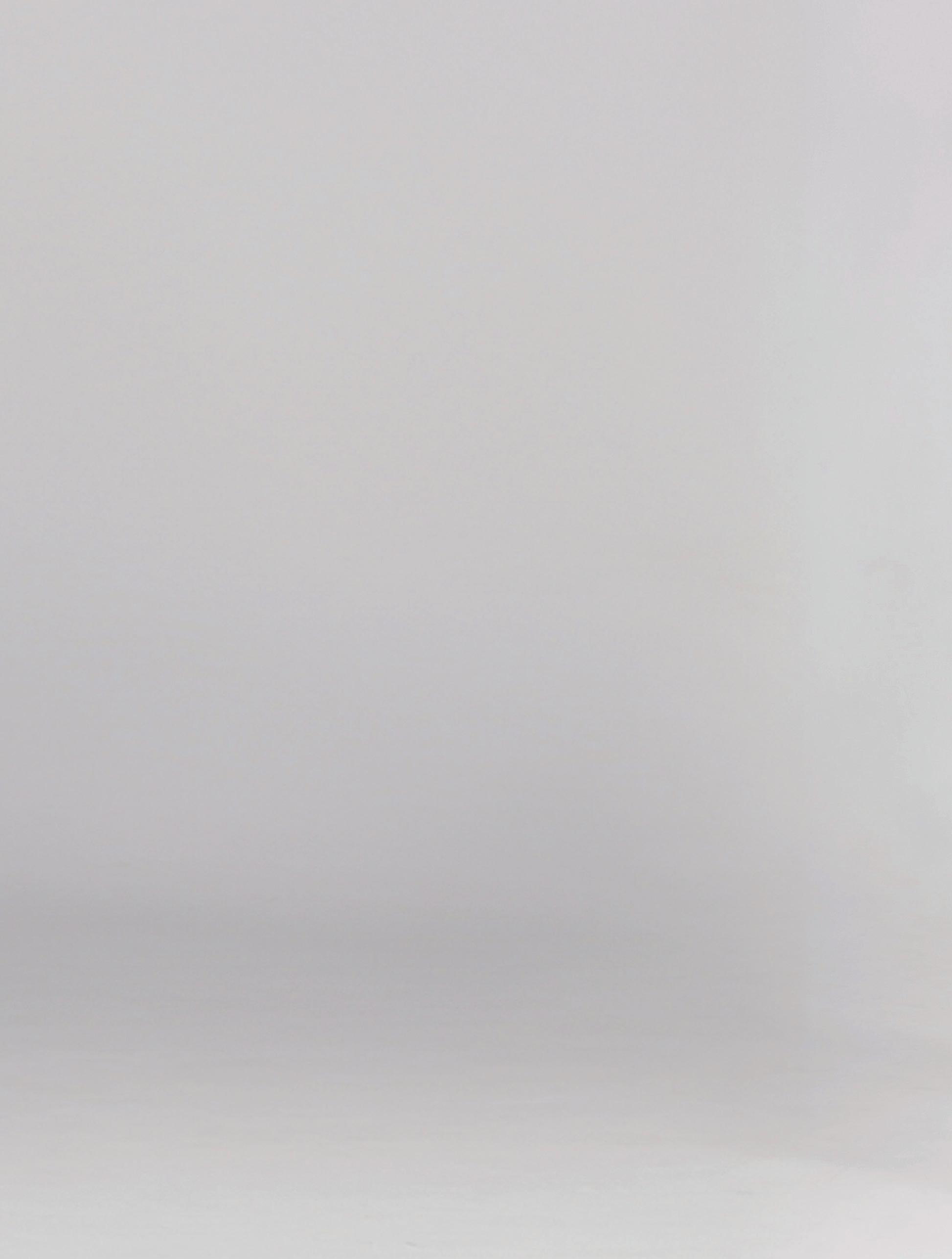
Taekwondo athlete Skylar Park is headed to the 2024 Olympic Games—and she’s got a unique competitive edge rallying behind her
BY CHELSEA CLARKE JOCELYNE HEBERT
A freelance health and fitness writer and guest editor at IMPACT Magazine based in Toronto, ON.

Leading into the Paris 2024 Olympic Games, taekwondo athlete Skylar Park has two advantages: Authentic enthusiasm for her sport and the rich legacy of her family.
In her hometown of Winnipeg, MB, Park comes from a family of 16 black belts. From her grandparents, cousins, and brothers, the family is steeped in experience—and it’s all been passed to Park, who will be showcasing her skills at this summer’s Olympics. “I was immersed in the sport even before I started walking,” says Park. “And that’s why it was fun. When we started training, we weren’t thinking of it as training—we were just hanging out with our cousins.” •

FFrom the beginning, Park’s father coached her through training, and even progressed his own skills to be able to grow with his daughter as she entered an elite level.
To this day, Park’s career is still a family affair: Her dad remains her coach, her two younger brothers are on the national team (one will be her training partner at the Olympics), and her grandfather—a grand master himself—observes her fights, lending tips and advice.
And while some athletes may feel the pressure of a legacy of that magnitude weighing on them, for 25-year-old Park, it’s only added joy to her journey.
“When I qualified for Tokyo, and then Paris, it’s almost like it was our family that qualified. Everything that we do as a family revolves around this dream, so there’s an added level of teamwork and support,” says Park.
“I’m bringing those years of experience that my family has—and the joy that that brings me—and people can see that shine on the mat. It’s the joy that seems to help me perform really well.”
I’m bringing those years of experience that my family has— and the joy that that brings me— and people can see that shine on the mat. It’s the joy that seems to help me perform really well.

Park’s career skyrocketed when she took home the gold medal at the 2016 World Taekwondo Junior Championships in Burnaby, B.C. Deemed “the new face of taekwondo,” she was favoured to medal at the 2020 Summer Olympics in Tokyo. At those Games, Park was at her physical peak—the strongest she’d ever been at the time. But her mental strength wasn’t a match; she suffered a loss in the quarterfinals, ending the hope of a medal. “The Olympics are a completely different atmosphere than any other competition—the stakes are higher, the pressure is higher,” says Park. “Physically, you can be 100 per cent ready—but if you’re not ready to deal with those pressures and expectations, the rest of your preparation doesn’t matter.”
After the loss, Park was faced with the challenge of climbing her way back—she took it head on, and overcoming those obstacles have proved to be some of the most fulfilling times in her career. “It’s not only the highs that I’m proud of,” she says. “I’m most proud of the times I felt like I was at rock bottom, and I climbed my way out—I rose to the occasion.”
And rise she did. In 2023, Park took home gold at the Pan Am Games. “It was a huge confidence boost going into Paris,” she says.
Now as she prepares to head back to the Olympic stage, she knows her mental training needs to be just as strong as her physical training. Through intense physical training which includes up to four hours on the mat six days a week and grueling conditioning sessions on the assault bike or running hills, Park has a team of specialists in her corner to ensure she’s performing at peak condition through the bumps and bruises that come with every fight.
Working with a mental performance coach, Park’s training includes navigating some of those pressures she’s sure to encounter in Paris. “I’ve been working on mental strength leading into Paris. I’m excited to bring that strength with me,” she says. The expectations of being in the ring, the anticipation of going into the fight, and how she’s going to decide on approaching the fight are all scenarios that she works through to be ready when the time comes. “In physical training, I’m very intentional,” says Park. “When my dad tells me to execute something, I create that pattern of executing on demand.” In her mental training, the same principles apply: “On that day, you need to be ready to perform at your best, on demand.”
But there’s an elephant in the room for any Olympic athlete: The fear of losing. And Park admits she’s not immune to this feeling. But for her, it’s the beginning of the story that keeps her moving forward: The authentic fun and joy she’s cultivated for her sport.
“When I started competing on the world stage, no one knew I was a girl from Winnipeg with her dad coaching her,” she says.
“I’ve struggled a little with the pressures and expectations of what people were saying, but I’ve found my way through that. I love to fight. I love to be in the ring. I can shut out the noise of the rest of the world, fight freely, and perform my best every time I step out there.”
Canadian track athlete Noah Vucsics refuses to let his intellectual impairment hamper his dream of competing in the Paralympics. And now, he’s inspiring other athletes with disabilities to do the same.
BY JESSICA NATALE WOOLLARD TRUDIE LEE PHOTOGRAPHY
An award-winning freelance writer and communications professional based in Victoria, B.C. JRWOOLLARD


I want to do what might seem impossible to others and inspire them—to show them what is possible.
Aleap over garbage cans set in motion long jumper Noah Vucsics’s journey to make history: To become the first Canadian track and field athlete with an intellectual impairment to compete in the Paralympics.
The teacher who witnessed Vucsics’s propitious jump at his Calgary high school in 2018 suggested the grade 12 student try out for the track and field team. After just six weeks of training, Vucsics competed in his first–and only–high school city sports championship. He made a 20-foot jump, earning him a bronze medal.
Vucsics’s podium finish wasn’t the first time he’d outperformed expectations. Born in Haiti, he was adopted at five months of age into the Vucsics family. As a child, the now 24-year-old was diagnosed with an intellectual disability that affected his reading and writing. He was placed in a special education program in his high school, one that frequently, in its attempt to help participants, kept them from mingling with their peers in the standard program.
Resisting the imposed isolation, Vucsics lobbied to be part of the core high school community. He received permission to audition for and take part in a production of Peter Pan; he joined leadership groups; and he practiced public speaking at events like talent shows. In 2018, he was chosen as class valedictorian, becoming the first student from a special education program at his high school to hold the convocation honour.
“I wanted to be involved and feel a part of the school,” he says. “I made it my mission to seek opportunities and get involved.”
It was only after graduation, while training with Calgary Track and Field Athletic Association, that he learned there is a class (T20) in para-athletics for people with intellectual disabilities. To compete, he would need to be classified internationally to verify his skill and competence, as well as prove his disability. In early 2020, Vucsics was preparing to travel to Dubai for the first step of the two-pronged classification process when the COVID-19 pandemic interrupted plans. His classification was delayed for two years, which meant he could not qualify for the 2020 Tokyo Olympics.
Vucsics, now officially classified, believes the delay was not a setback but an advantage.
“I was not ready to play for a medal in 2021,” he says, noting long jumpers usually peak at around 28 years of age. “Now I'm on a much higher level, physically and mentally, and ready to go to Paris and compete for a medal.”
Since becoming classified, Vucsics has participated in two major international competitions, earning a silver medal at the World Athletics Championships in Paris and a bronze in the Parapan American Games in Chile, both in 2023.
In Paris, he landed a jump of 735 centimetres, just five centimetres behind the gold medallist and current world record holder from Malaysia. His podium finish at the Worlds opened a qualifying spot for this year’s Paralympics in Paris—a spot he intends to fill. The Paralympic team will be announced in July, but Vucsics is focused on September 7, 2024: the day of the Paralympic long jump final. “If I can fix the few things [I’ve been working on], then I can get from 735 centimetres to 750 centimetres and challenge for a medal,” he notes.
Vucsics’s track journey has been relatively short, which he attributes to a lack of awareness about the Paralympics. “When I discovered [long jump] and then discovered the intellectual impairment class, it really did change my life,” he says. And now he hopes to change the lives of others.
In parallel with his track ambitions, Vucsics is striving to be an ambassador for people with intellectual disabilities.
“There was a time when I thought, what good could come out of having an intellectual disability?”
he explains. “I want to do things out of the norm to inspire others,” he adds, noting the support of his parents and older sister have been integral to his achievements.
Throughout his life, it’s frequently been suggested to him that certain things are out of reach. For example, it was recommended to him that he set his sights lower than the job he wanted— technician at the Apple Store. It took eight interviews, but Vucsics eventually earned the position and worked at Apple for three years before leaving to train full-time at the University of Calgary. “I don't want to settle,” he says.
Vucsics has begun speaking to schools and groups, telling his story to demonstrate all that is possible for people with disabilities when they are given opportunities to succeed.
“We're learning that IQ is a piece of paper. It doesn't necessarily tell the whole story,” he explains. “I want to do what might seem impossible to others and inspire them—to show them what is possible.”
Vanisha Breault's daughter experienced youth addiction. Now, with the Terminator Foundation, she’s inspiring others to conquer addiction and reclaim their lives.
BY RACHEL DEBLING TRUDIE LEE PHOTOGRAPHY
Toronto, ON-based freelance writer with a focus on health, wellness and travel.
RACHEL_DEBLING
For some going through difficult periods in their lives, turning to exercise is a no-brainer. That rush of adrenaline, the allure of consistency, the rewards of setting and meeting goals—it can be a relief to lose yourself in the abandon that comes every time you start another tough set or hit the pavement for a breezy five-kilometre run.
But when Vanisha Breault was facing some of the darkest days of her and her family’s life, athletics wasn’t a distraction—it was a way for her to face her pain head-on. Now, through the Terminator Foundation, she’s bringing this approach to recovery to hundreds of others who have also experienced trauma related to addiction.
To put it simply, Vanisha got here—the founder and CEO of a successful nonprofit that helps those in the throes of addiction find meaning, and their way out—due to her love for her daughter, Eden.
“It’s like I had a pair of binoculars, and I could see the storm coming,” she recalls of what she saw as her daughter’s generation’s shift to drugs like opioids and methamphetamine some 10 to 15 years ago. “We're going to lose a whole generation of young people if we don't sound the alarm.”
When Eden began disappearing for days on end, with Vanisha sometimes being alerted to her presence at flophouses by the local police, Vanisha felt powerless in the fight against the invisible threat that was gripping her daughter.
“At one time, meth and heroin were considered ‘bad,’” says Vanisha. “But during Eden's journey through addiction, those drugs weren't thought of as bad or dirty anymore. They were the new party drugs.”
The one thing that Vanisha felt she could do, to put herself mentally in her daughter’s shoes as she grappled with her own
issues, was face a form of pain that she could tackle head-on.
For Vanisha, someone who had never learned how to swim nor was a strong cyclist, that call was to sign up for a half-Ironman.
“All I had were my runners when I signed up,” she says with a laugh. “I signed up in April, and the 70.3 Ironman was happening in July, so I had just over three months to train.” With the support of her coach, Sheryl—who at times herself thought that Vanisha was reaching beyond her capabilities—Vanisha taught herself to swim, and only a dozen or so weeks later, she pushed through to the finish line.
After that, Vanisha was hooked. “It shook everything in my life to my core,” she explains. “It transformed my life. It was that intense.”
Wanting to share the hope she had found, Vanisha took to social media to connect with those who were experiencing substance use disorder, just like Eden. “I had barely finished [the race] myself, and I was asking people online, ‘Hey, do you want to train for an Ironman?’”
Much to her surprise, several people showed interest, and soon her advocacy in action began. This program was the spark that would eventually grow into the Terminator Foundation, an activity-based, three-month program for individuals in treatment, in post-treatment, in long-term recovery, or struggling with substance use.
“Today we have a whole program built on that philosophy,” says Vanisha. “It's a strength-based approach to addiction recovery, because it shows [youth experiencing addiction] right away just how capable they are.” And exercise, she believes, is age-old medicine, one arm of treatment that is often overlooked. Vanisha points to the effects of exercise on the prefrontal cortex, the dopamine rush it elicits, that familiar natural high—all important when in recovery.

Today, Vanisha isn’t shy when talking about the results the Terminator Foundation’s clients achieve through their own hard work. When asked what transformations she sees coming out of the program, she doesn’t mince words. “People's lives completely transformed from addiction,” she shares. “We basically want to light up your life. If you're feeling hopeless, if you don't believe you can recover, come and work with us for 12 weeks and let us help you revolutionize your life. I've seen it so many times.”
These days, Vanisha is enjoying life as a grandmother of eight, and the company of Eden, who has been sober for seven years. Society’s approach to substance-use issues has greatly evolved since Eden’s experience and the launch of the Terminator Foundation, Vanisha says. But that doesn’t mean the road to recovery is short, she cautions.
For those who are concerned about a loved one, Vanisha has this advice. “If a parent is saying to themselves, ‘I wonder if I need to intervene,’ you probably need to intervene,” she explains. “That’s the sign right there that you probably need to start researching.”
Even better: Reach out to a program like the Terminator Foundation. After all, they’ve been where you are, they are eager to help, and there’s certainly strength in numbers.
Dive into the colourful tapestry of beaches, summer festivals, nature trails and adventure
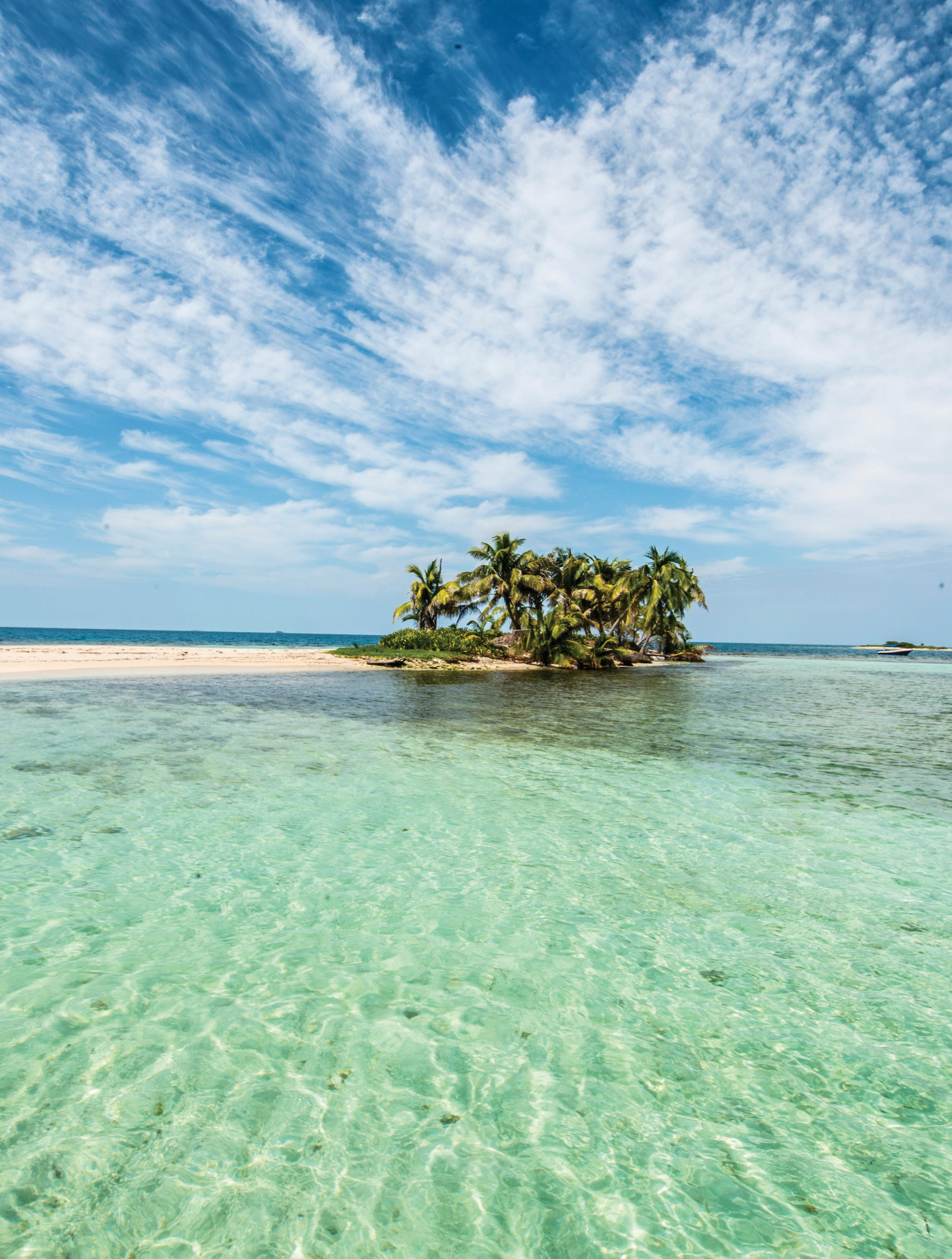
Are you looking for an ultimate summer travel escape like no other?
Do you love travelling solo and immersing yourself in local culture and events? A visit to Belize in the summer unveils a tapestry of cultural richness and lively traditions, with the warm breeze carrying echoes of music and laughter, it's clear that summer festivals in Belize are more than just events—they are vibrant celebrations of life.
Summer is the best time to immerse yourself in entertainment, fabulous beaches, incredible cuisine, artistry and cultural celebrations. With mostly blue skies, radiant sunlight and swaying trees, this time of year is known for energetic activities, music festivals, and vibrant wildlife.
Properties offer jaw-dropping discounts on their rooms and tours or packages with complimentary meals and it is virtually crowd-free at this time of year. The summer season allows you to have the most authentic experience in Belize.
No need to worry about massive crowds at popular attractions and activities. Strike a pose at the Belize sign, at the steps of Lamanai, or on the seashore in Hopkins for the perfect photo-op!
There is something to do every weekend!
Summer is a season to connect with Belize’s soul through food, music and community. The Belize Tourism Board (BTB) is proud that not only do these festivals showcase the country's cultural depth, but they also uphold principles of sustainability for a lasting impact.
Below are just a few of Belize’s summer standouts that you can sink your tastebuds into:
Savour the rhythm as the Belize Tourism Board presents the dynamic two-day Belize International Music & Food Festival (July 27-28, 2024), a delightful mix of musical and cuisine delights. In July, visitors will be captivated by the country’s diverse musical lineup, filled with top artists and lively performances. The festival provides a fusion of musical genres ranging from Punta, Soca, Reggae, Dancehall, and Latin beats that extends to the food court when you immerse yourself in the unique cultures of Belize. Taste the flavours from the kaleidoscopic cuisines and beverages prepared by local vendors from every corner of the country in this vibrant festival!
September marks a special month in Belize, as the country comes together to revel with pride leading up to Independence Day, celebrated every September 21st. This year, Belize observes its 43rd year of freedom and independence with a day full of activities, colourful street parades, lively music and a celebration of authentic Belizean cuisine across its distinct regions. The Belize City Carnival, held on the Saturday before September 10th, features colorful floats, costumed dancers, marching bands, and drummers parading through the streets of Belize City. Participants wear elaborate costumes reflecting Belizean culture, history, and current events. Spectators can enjoy pop-up food stalls, live music, and other entertainment, making it a lively event.




• All travel types: Regardless of whether you’re in an introvert or prefer to party, Belize caters to any type of backpacker out there. From the revelry of the islands to the meditations in the mountains, solo travellers can take comfort that their specific needs will be met.
• Homestays: One of the reasons solo travellers choose to go at it on their own, is their desire to immerse themselves in the local culture of the people. Belize happens to have unique homestay experiences where travellers can both live and learn the Maya culture.
• No language barrier: Being the intriguing anomaly it is, this is the only English-speaking country in Central America. Travellers can be confident in speaking English and hearing English be spoken back (although there’s a high chance some Creole will be mixed in!).
• Size matters: Roughly the size of Massachusetts, getting from point A to point B in Belize is a breeze. You can fit your entire itinerary in approximately three days, which leaves plenty of time for winging the rest of your trip (as most solo travellers tend to do!). This makes for unexpected thrilling experiences to bring back home.
• Easy, safe transport: The main transportation are local buses that run all across the country – including the villages tucked away in the off-beaten paths. You are left to your own devices in the bus, giving you plenty of time to appreciate the scenery as it passes by the window. You can even take a bus – under $5USD – from Belize City down to Western Belize, where many mountainous adventures await.
• Connect with other solo travellers: Backpackers are attracted to Belize like locals to Orange Walk tacos, so it only makes sense you shall meet like-minded individuals while on your travels. Whether in group excursions or at homestays, you are bound to bond with someone who understands your perspective on backpacking through the diversified country.
• Currency exchange not an issue: The local currency is BZD, however USD is widely accepted throughout Belize, and during the off-chance it isn’t at a particular place, ATMs are available in all cities and major towns.
• Plethora of guidebooks: There are countless guidebooks on Belize that can help you on your solo travelling. From detailed road maps to emergency phone numbers, you can get your hands on any of these travel guides directly from the Belize Tourism Board.
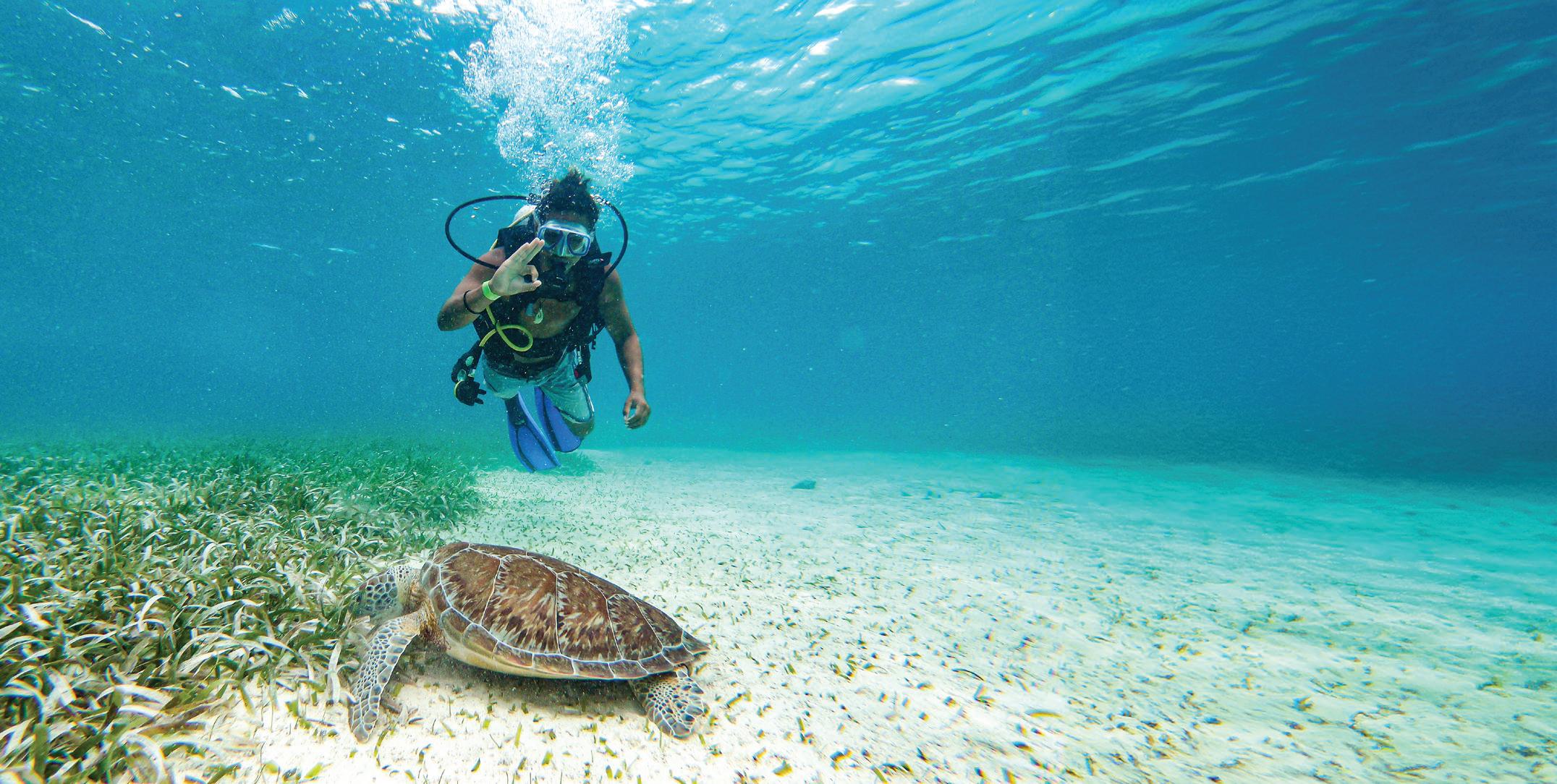
For those with an affinity to water, Belize also boasts 386km of spectacular Caribbean coastline and the second largest reef in the world. Belize intends to continue to lead the way in reef protection and sustainable tourism, having launched a reef protection programme featuring a new wreck diving site allowing divers to explore the marine life and waters while reducing strain on these radiant reefs and eco-systems.
Divers come from all over the world for a diving experience like no other. Crystal clear with visibility extending hundreds of feet, you will be surrounded by warm water and plenty of marine life including corals, turtles and stingrays. Apart from the famous Great Blue Hole, Hol Chan Marine Reserve, Ambergris Caye, and dozens of other sites off the coast of Belize are listed as some of the top destinations for divers in the world. •
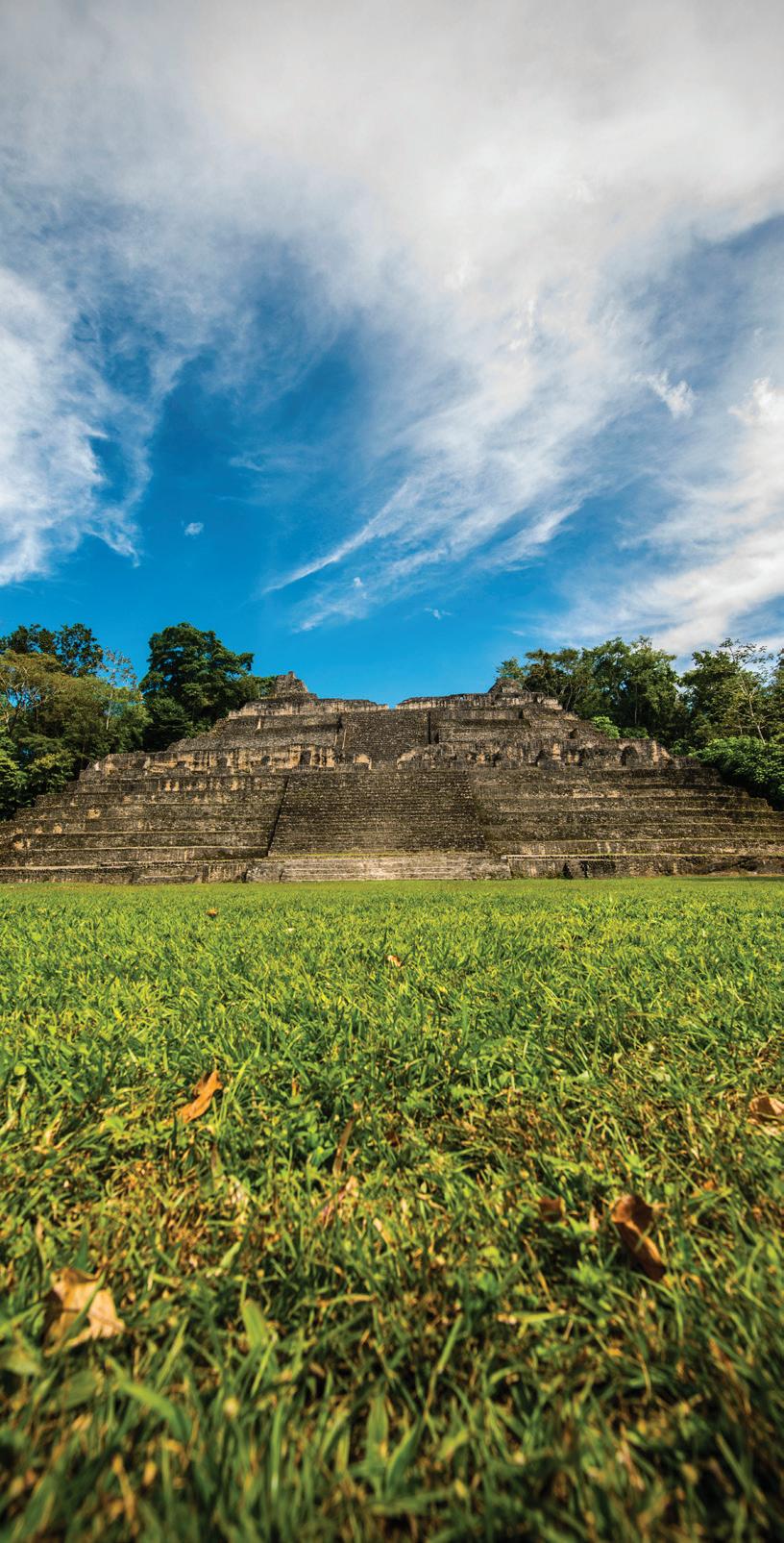
Belize isn't defined by one culture, but a unique blend of influences from all over the world. It’s this blend that gives the people of Belize the distinct ability to make anyone feel welcome. While you may be far from it when you visit, we’ll make you feel right at home. From cuisine to language to dancing, explore the cultures and traditions that make Belize so unique.
Maya: Maya culture is still alive and well in Belize. Today, you can tour authentic sites left by this great culture and, in many cases, be guided through these sites by a direct descendant―a modern-day Maya. In many cities, you can also find Maya cuisine and festivals celebrating this ancient civilization.
Whether you want to explore for an afternoon, a day or a week, the ancient Maya sites are well worth it. It’s not uncommon to come across ancient pieces of pottery or hear that a distant hill is actually a temple.
Enjoy ancient Maya cities, snorkel with luminescent fishes, or visit the renowned Belize Zoo! Travel by private vehicle or bus to see the astonishing views of the evergreen mountains and fields. Catch the boat to feel the breeze of the crystal blue Caribbean Sea when heading to your next destination.
Creole: From the language to the food, the Creole (or “Kriol”) culture always leaves you wanting more. Its origins date back to the late 1700s when British settlers and African slaves gave birth to this new Creole population and they remain one of the staple cultures of Belize.
Popular Creole dishes are universally enjoyed throughout Belize and include Rice and Beans, Beans and Rice (yes, they are two different dishes), Stew Chicken and Salad, and “Boil Up”.
Mestizo: A culture of the past that is still present today. Mestizo is a vibrant culture whose heritage originated from the Maya and Spanish. Today, the majority of Mestizo descendants populate districts in Northern Belize.
With the blending of these cultures came a fusion of traditions, practices and foods, unique to Belize. Take a trip to the North to immerse yourself in this foodie-haven and celebrate the many festivities held annually to celebrate Mestizo culture.
Garifuna: This Belizean culture is known not only for their vibrant colors and delicious food, they’re the creators of a popular hypnotic drumbeat music, Punta. The rhythm of the drums will let you hear, feel and move to the Garifuna culture in Southern Belize.
With festivals throughout the year, it’s impossible not to experience the warm and vibrant Garifuna culture during your visit to Belize.
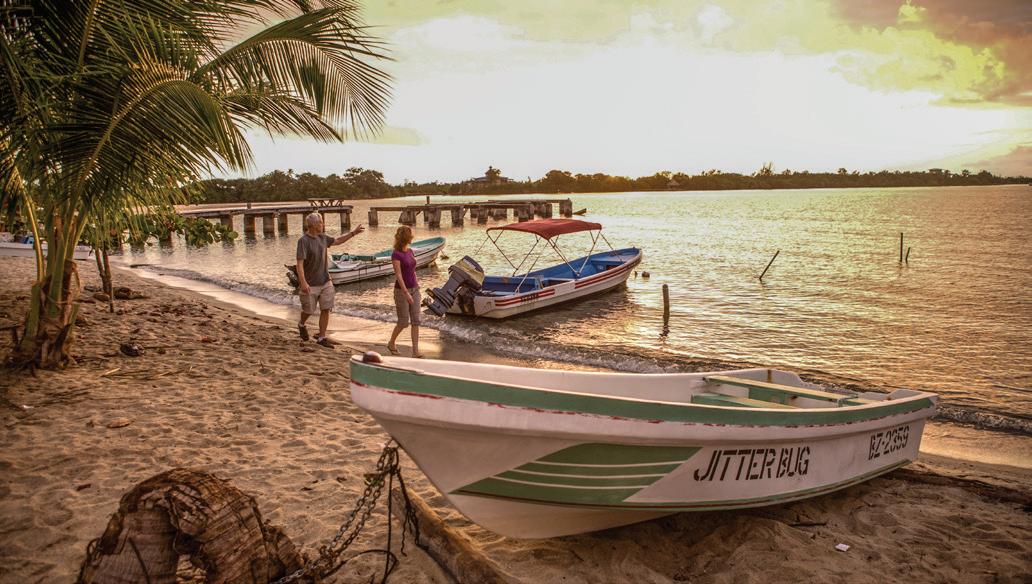

Belize holds responsible tourism at the core of its value systems, developing projects that encourage travellers to engage with the country’s rainforests, reefs, and unique culture in a truly sustainable and responsible manner. In an effort to protect endangered species such as the jaguar, Belize is a critical partner of the Maya Forest Corridor, protecting landscapes from Belize’s Maya Mountains, through the tri-national Maya forest of Belize, Mexico, and Guatemala – the most extensive continuous stretch of jungle in Central America. Check out https://www.travelbelize.org/sustainability/ for an easyto-use directory for visitors to Belize to be able to search for responsible tourism organizations within the country when planning their visit.
Whatever level of hiker you consider yourself, there is a trail to match what you’re looking for. Take a day tour or spend several days camping—either one provides you with the chance to encounter exotic tropical plants and birds, or to see wildlife, including howler monkeys, crocodile, or the tracks of the elusive jaguar and tapir (just hope they’re only the tracks).
From serene beaches to thrilling adventures, Belize is the ultimate paradise for everyone. Whether you're seeking excitement and adventure or pure relaxation, it's time to book your summer vacation to a place where it's always happy hour and summer never ends!
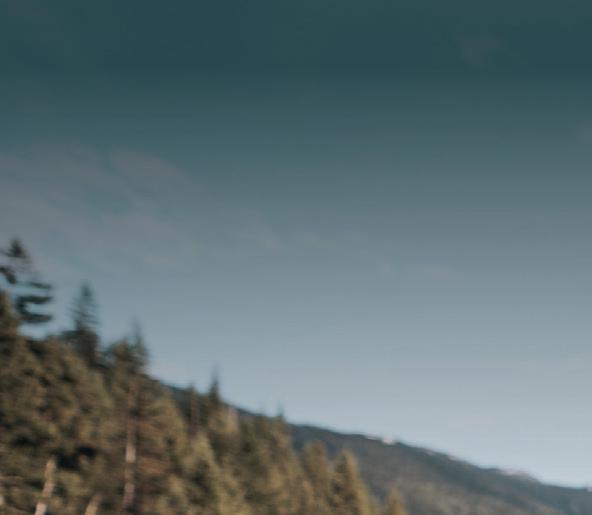


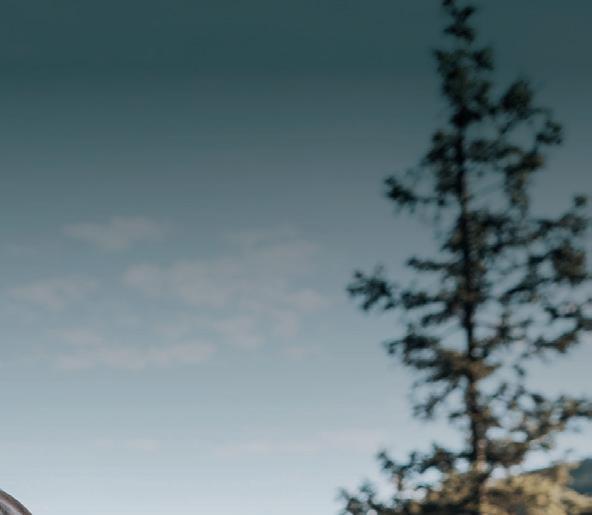

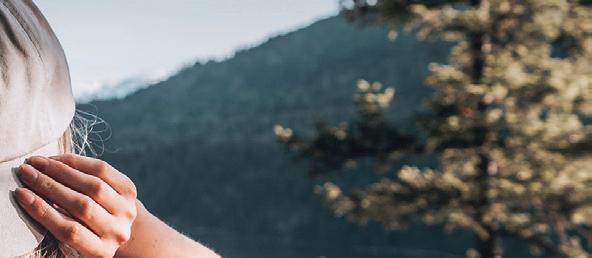
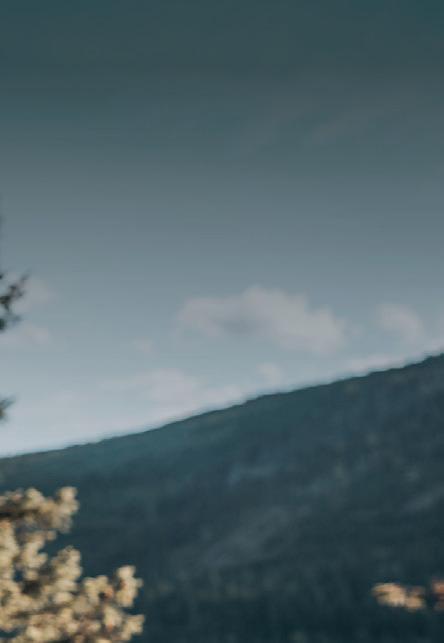





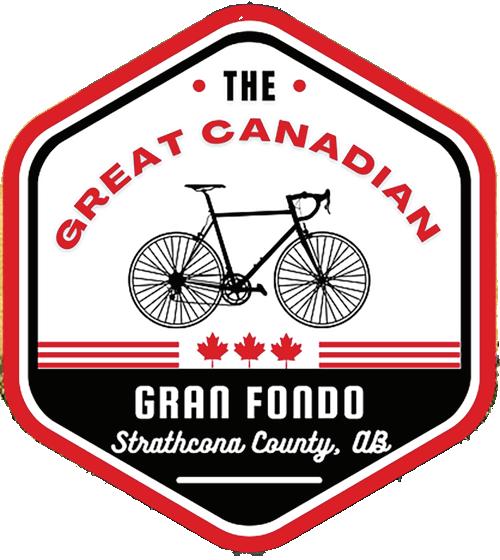
A cycling adventure on August 11
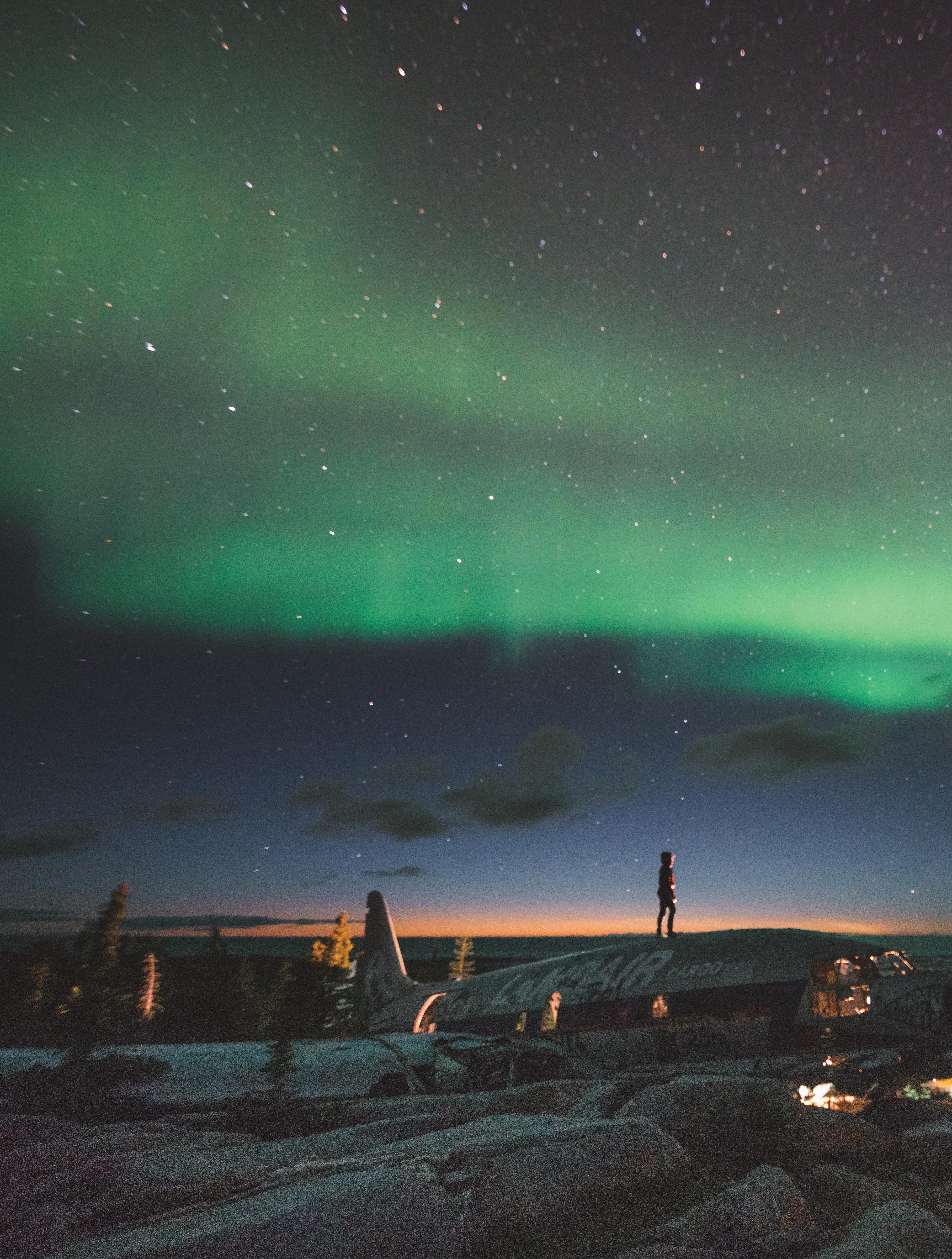
From hiking and watersports to suspension bridges and a goat beach (not joking), these are the active destination spots to put on your summer bucket list
BY CHELSEA CLARKE

Hike and climb your way up the cliffs above Mt. Norquay Ski Resort on Banff's only Via Ferrata (Italian for iron ladder), navigating routes with the help of a fixed anchoring system of cables, ladders, and a suspension bridge. Next, bring your kayak, paddleboard, or raft to float the Bow, where you can float down a glacier-fed clear blue river in the heart of Calgary. You’ll see the province’s beautiful skyline, and probably a beaver or two! •

Revelstoke is home to two national parks, Mount Revelstoke and Glacier, both offering incredible alpine scenery and unforgettable hikes Next, hit Frisby Ridge, an iconic, alpine mountain-biking adventure boasting panoramic mountain views, vibrant wildflowers, and a thrilling ascent through majestic, mountain hemlock sub-alpine forests and expansive alpine meadows. Don’t forget to head over to Victoria to hit Jocelyn Hill, a 10 km loop beloved by locals for its extraordinary views of Finlayson Arm.
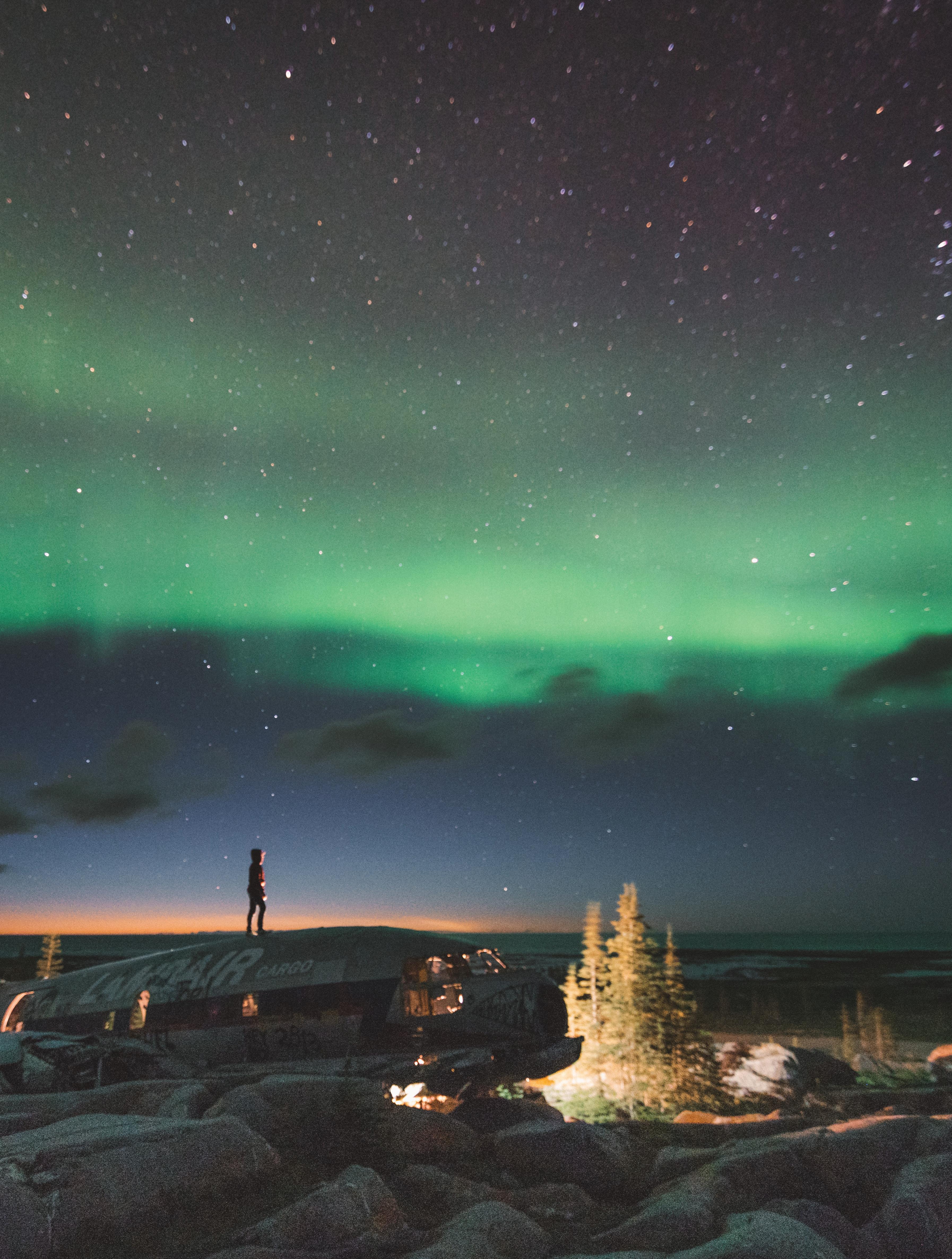
Hike your way across the sweeping views atop the escarpment of Riding Mountain National Park and the lush wilds of the boreal forest of Whiteshell Provincial Park. Before you leave, visit Churchill to take in the Aurora Borealis, one of the most breathtaking phenomena of the natural world. Peak times to view this beauty are between 8 p.m. and 2 a.m. in the late summer. •
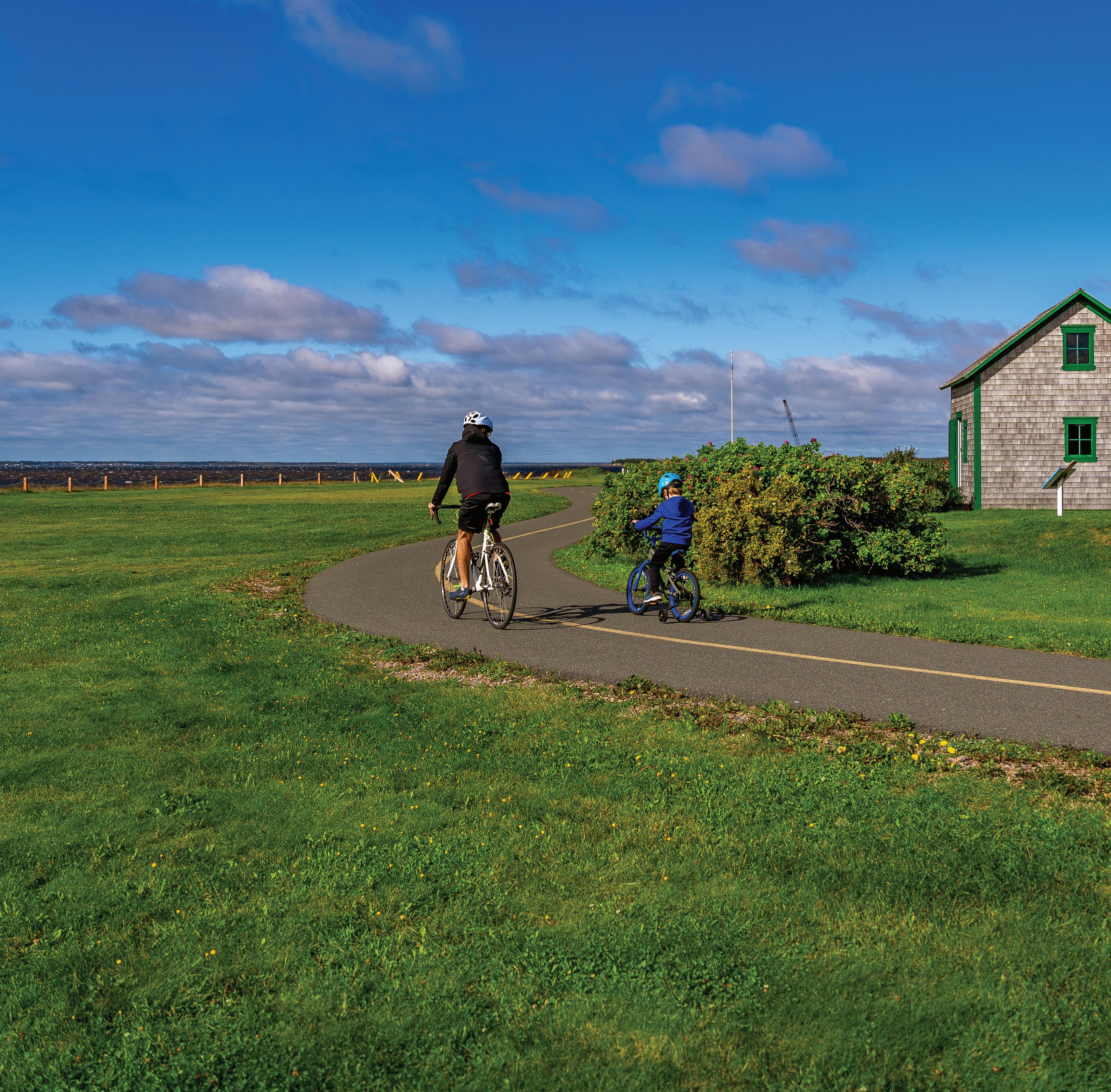
The Acadian Peninsula Veloroute is 379 miles of happiness for cyclists to take in stunning views on the seaside trail while travelling through several French communities. A must in this province is a hike through Walton Glen Gorge, or the “Grand Canyon” of New Brunswick, located in Fundy Trail Provincial Park. The natural wonder is 1000 feet across, 525 feet deep, and 550 million years old, created by a series of volcanic eruptions.
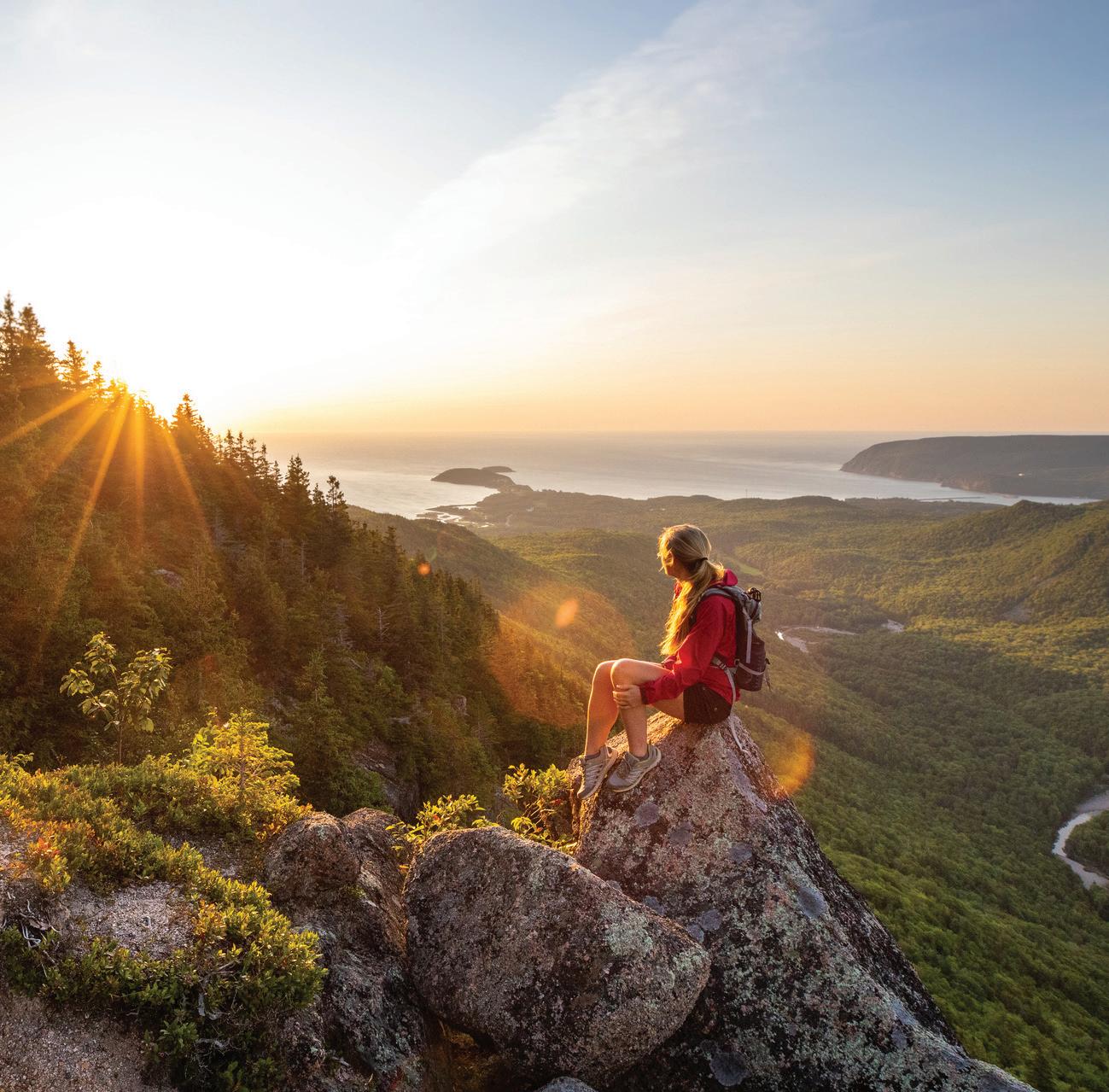
Discover the world-famous Cabot Trail that weaves through 950 square kilometres of highlands and coastal wilderness in northern Cape Breton. Offering 26 hiking trails ranging from easy strolls to challenging climbs, the trail attracts families and adventurers alike. Next, feel the rush of tidal bore rafting on 8-20-foot waves in a whitewater Zodiac boat as you experience the surging power of some of the world’s highest tides that turn the Shubenacadie River into a water rollercoaster. •
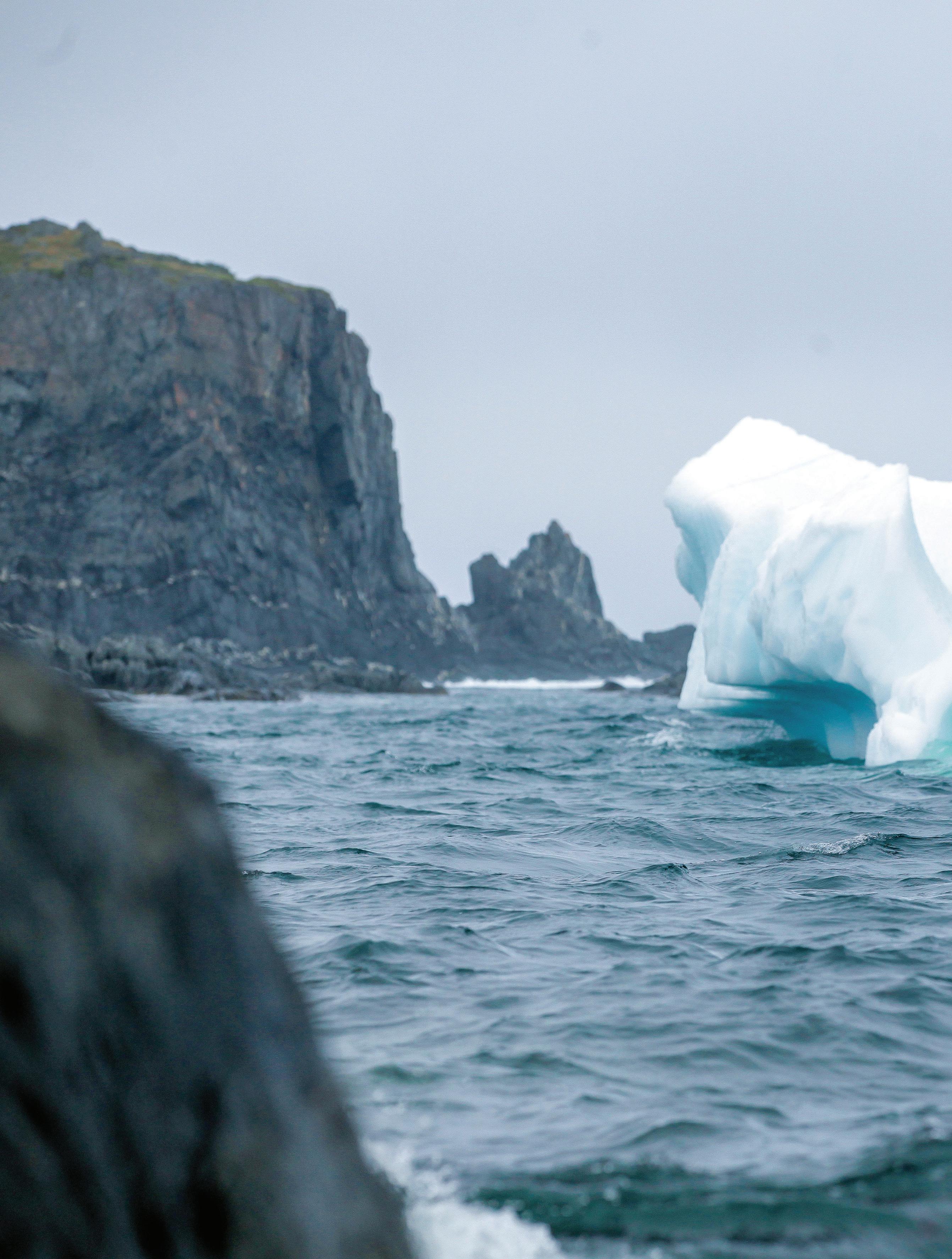
You’ve got to see the icebergs in NFLD. During spring and summer, these 10,000-year-old giants are visible from many points along the northern and eastern coasts, coming in all shapes, sizes, and colours like snow white and deep aquamarine. Plan a day in the western region to hit Gros Morne National Park, which offers more than 100 kilometres of hiking trails and a unique geological history dating back 1.25 billion years. •

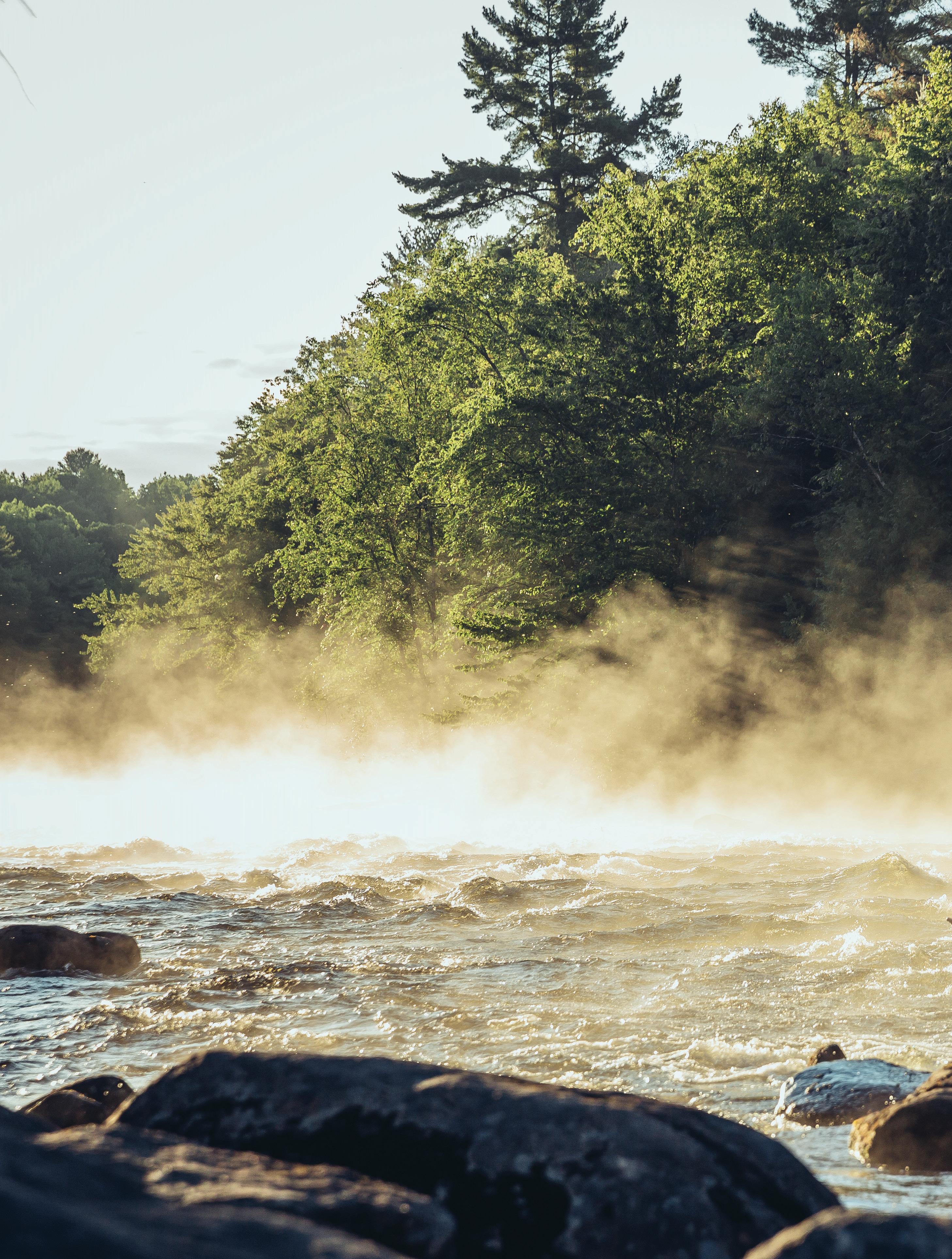
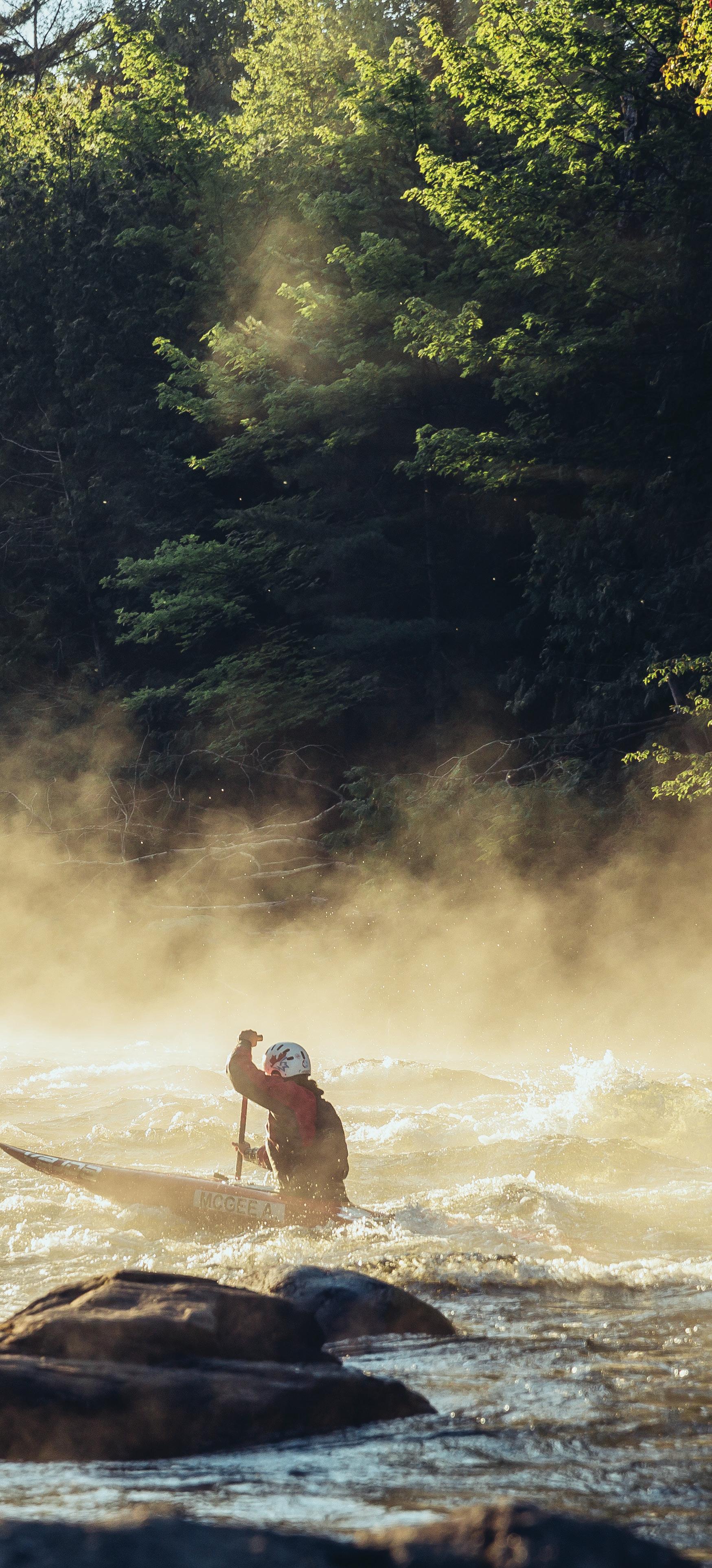
Known for its stunning wilderness, Algonquin Park offers vast opportunities for hiking, canoeing, kayaking, and wildlife viewing. Next, get your camera ready in Bruce Peninsula National Park, which features the Grotto, a muchInstagrammed natural pool and scenic caves, along with rugged cliffs and the famous Bruce Trail for hiking. Hit the mighty Ottawa River for whitewater paddling that ranges from familyfriendly to full-on Class V rapids. •
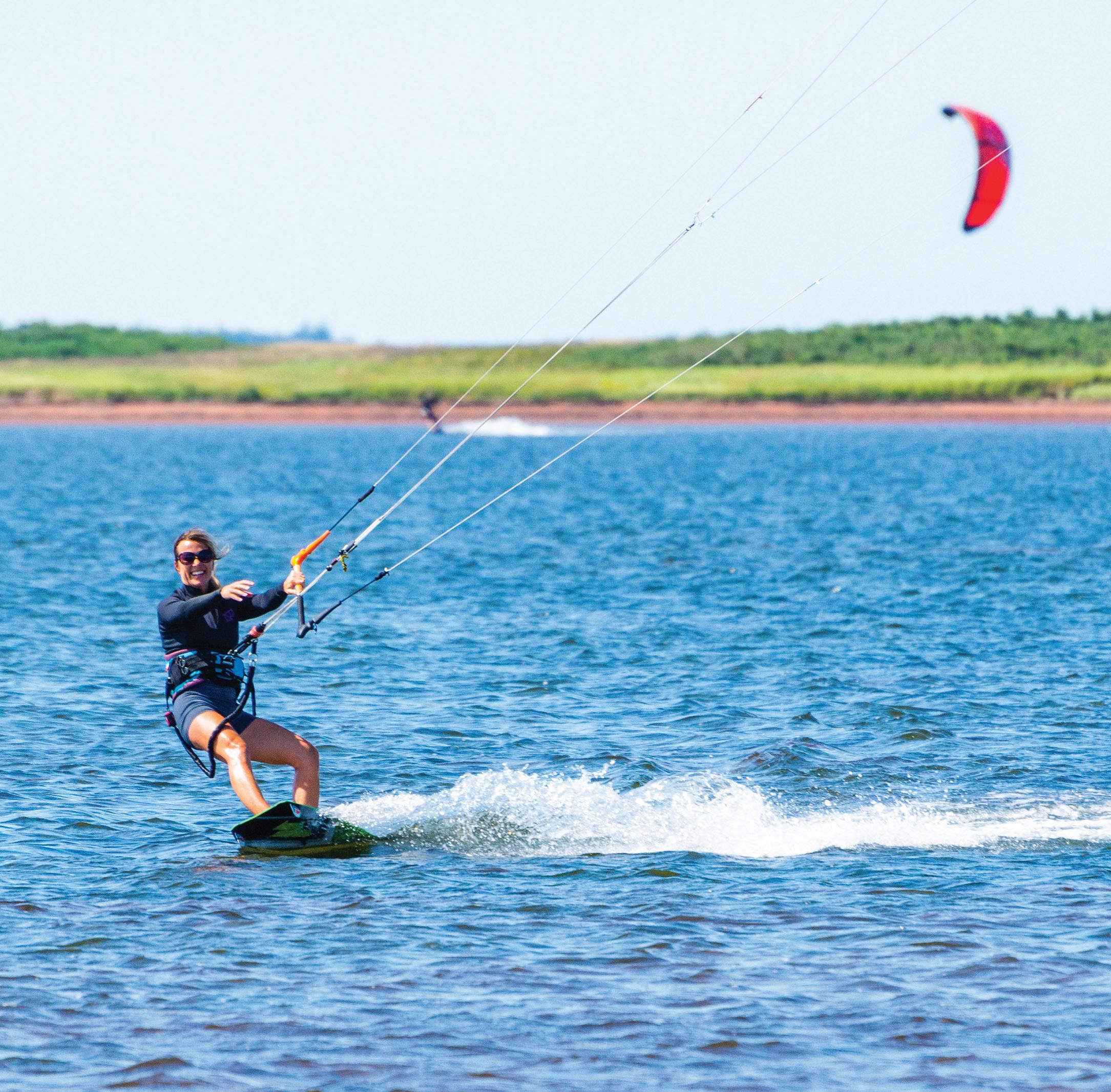
Experience the thrill of kiteboarding on PEI at Kite Point, which is known as a world-class kiting destination because of its shallow waters and ideal wind conditions. And for families, or even kids at heart, interact with goats on the natural beach located on PEI’s quiet southern shore. These friendly inhabitants manage vegetation and support ecological balance, and who knows, they may even want to hop a ride on your paddleboard!
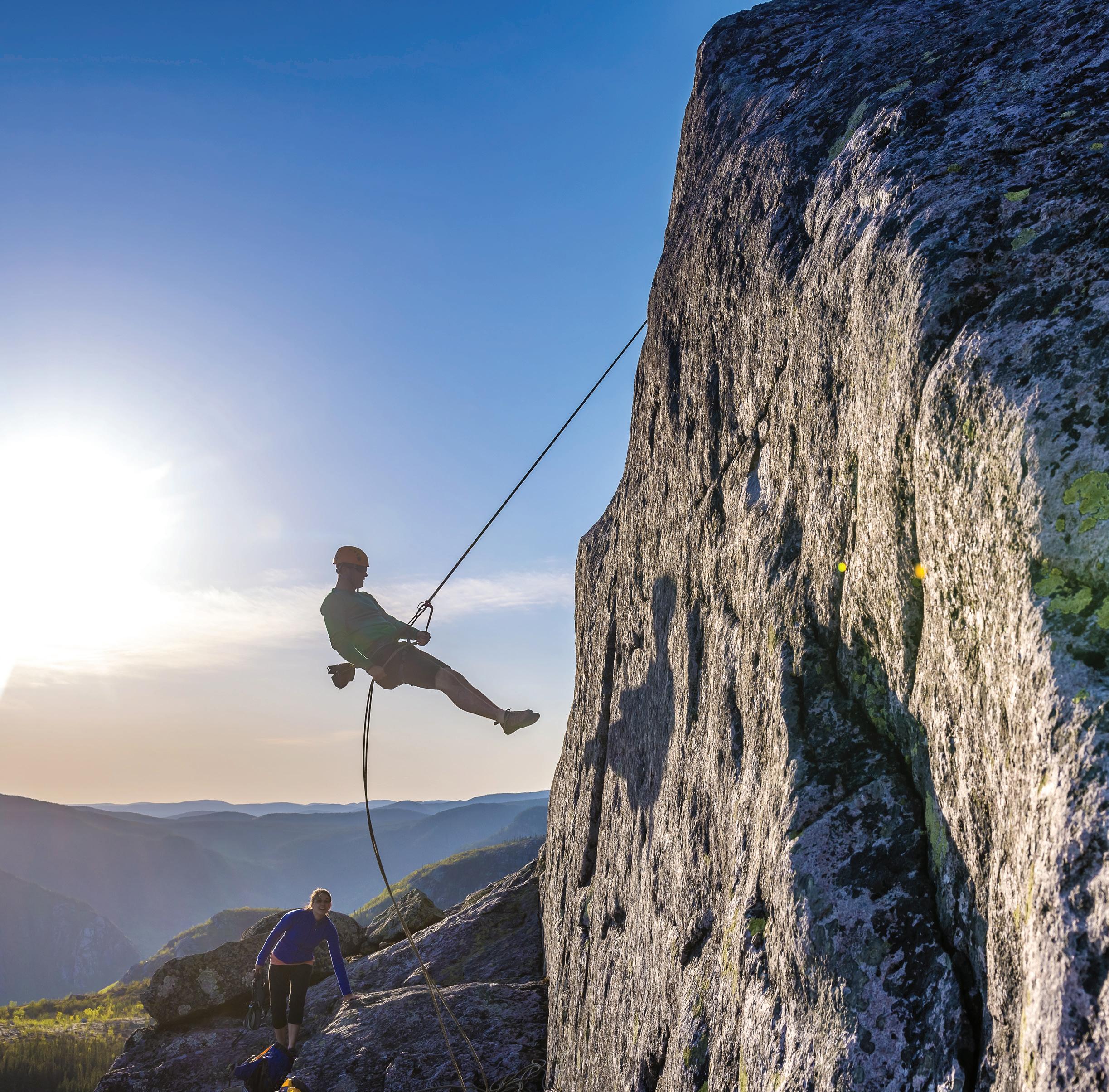
Quebec’s wide-open spaces feature more than 250 rock climbing sites in 13 regions across the province. Visit Parc national des Grands-Jardins in Charlevoix for varying difficulties of climbs, but don’t leave without traversing the Mont du Lac Cygnes, which features routes made up of beams and bridges developed into the surrounding rock face. The area is also known for watersports, so pack your kayak, paddleboard, or canoe and head to Lake Tremblant, which boasts crystal-clear waters and the Laurentian Mountains as a backdrop. •
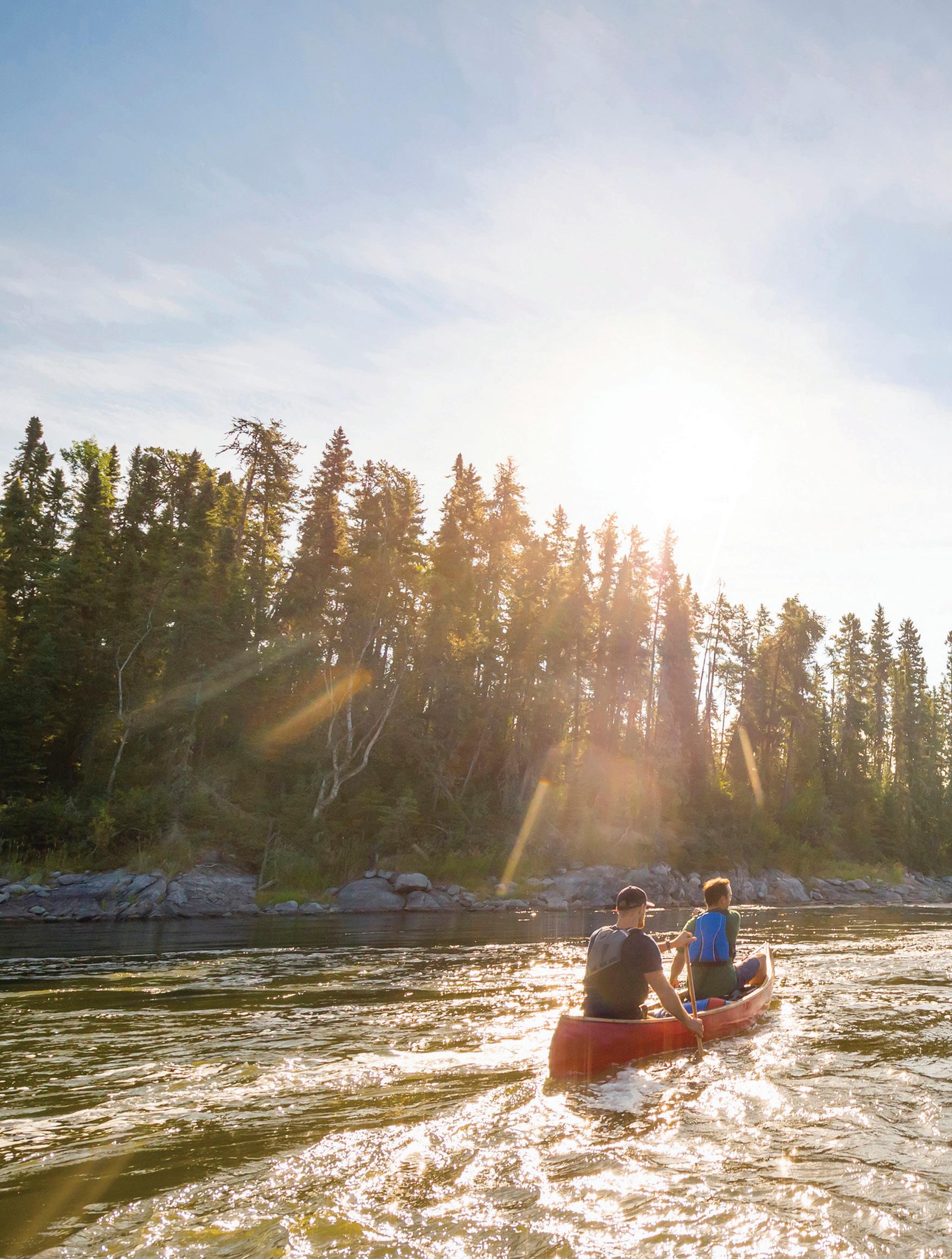
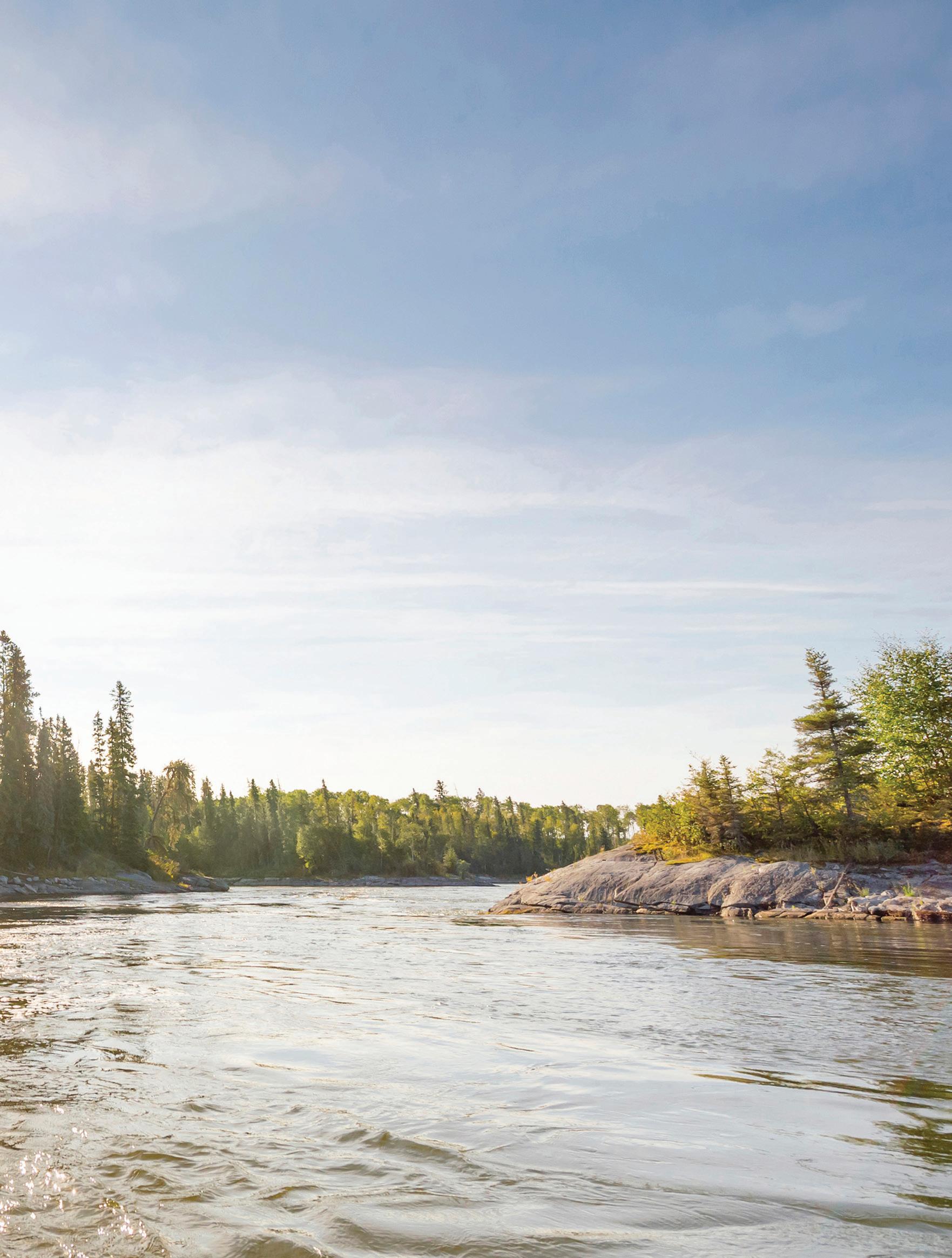
Paddleboard, kayak, or canoe the Churchill River, surrounded by pristine waters and untouched wilderness. The waterway was historically used as a voyageur highway that connected the prairie provinces, and was a staple for Indigenous travel and trade centuries before the arrival of explorers and voyagers. Located in Missinipe, this off-the-beaten-path experience is best to visit in the summer months of July or August. •
This province features endless opportunities for watersports, from canoeing your way to the Arctic Ocean, to whitewater rafting on the Nahanni River, or even paddleboarding through Yellowknife’s houseboat community.
Great Slave Lake is a must-see for any watersports enthusiasts, where you can set out to explore cliffs from hidden areas or simply enjoy the calm waves. •
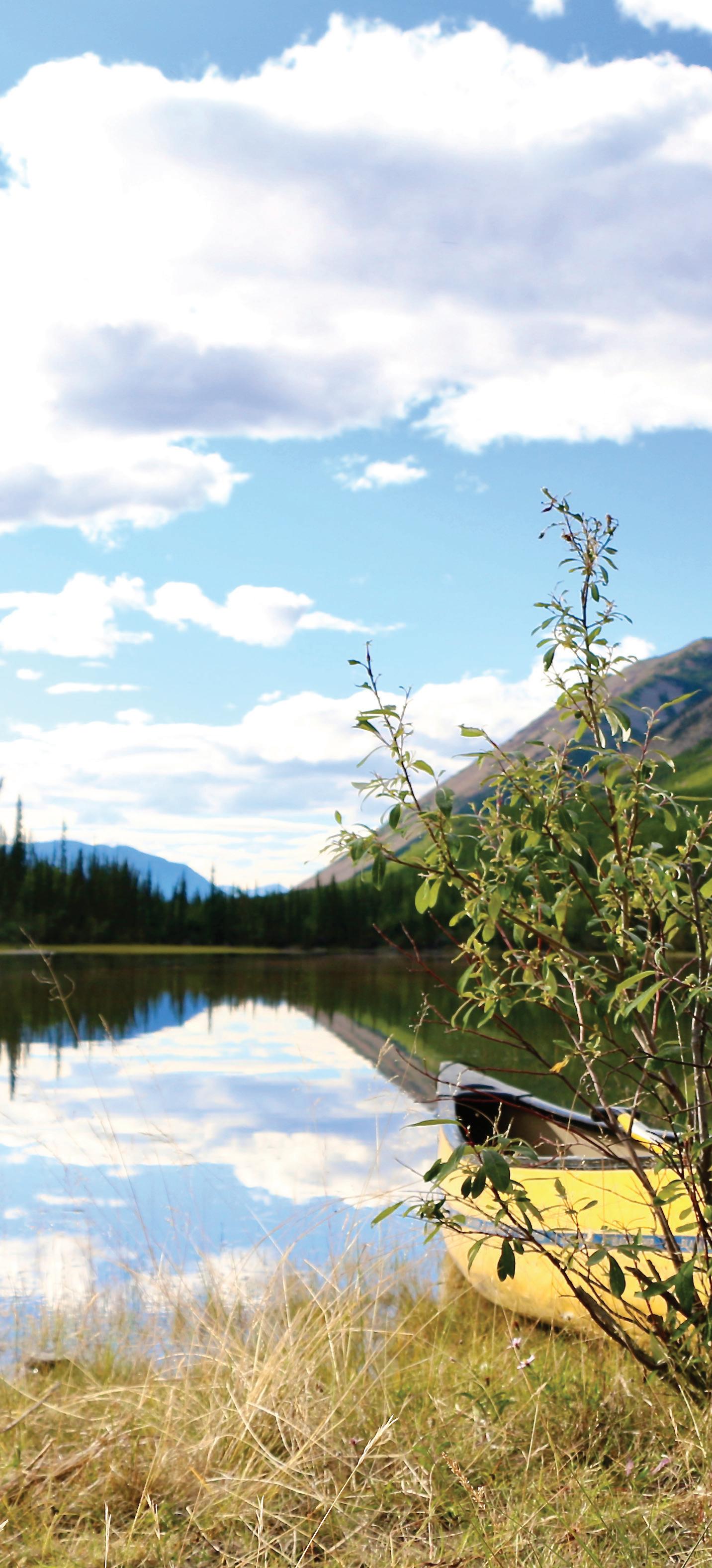

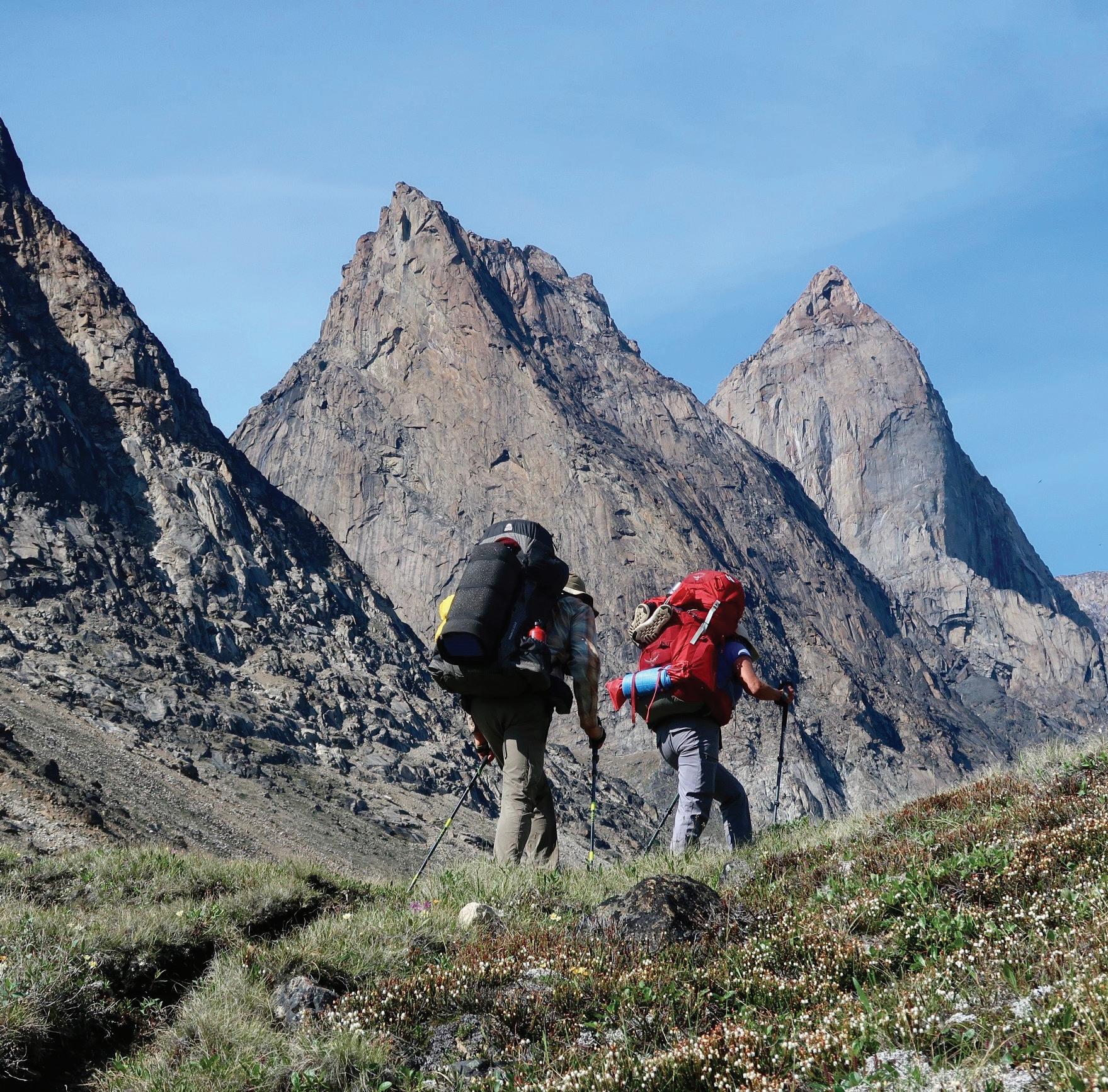
On Nunavut’s Baffin Island, the Akshavuk Pass is a challenging 12day expedition that traverses Auyuittuq National Park (“land that never melts” in Inuktitut) through a traditional corridor between two Inuit communities. Surrounded by the Penny Ice Cap, this adventure rewards you with stunning Arctic mountain views, including Mount Thor and Mount Asgard. Book your visit in July or August for the best views and conditions.

The historic village of Carcross, scenically nestled between Bennett and Nares Lakes, is fast becoming an international mountain biking hotspot. With its flowy single track and alpine trails just begging to be ridden, the mountain will thrill riders whether you’re a total novice or have been shredding the trails for years.
Cool finds to make your next travel adventures more enjoyable! Embarking on adventure travel requires more than just enthusiasm and a sense of wonder. To elevate your experience, IMPACT has curated a selection of essential items you might not have thought of!
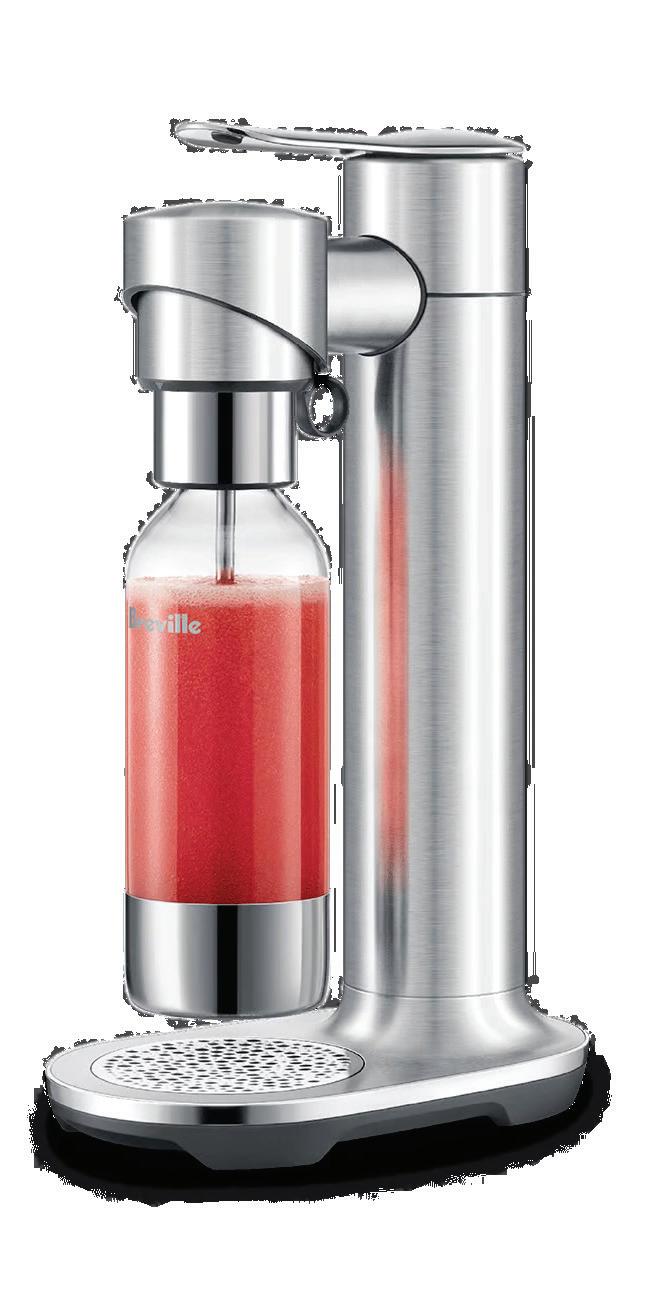
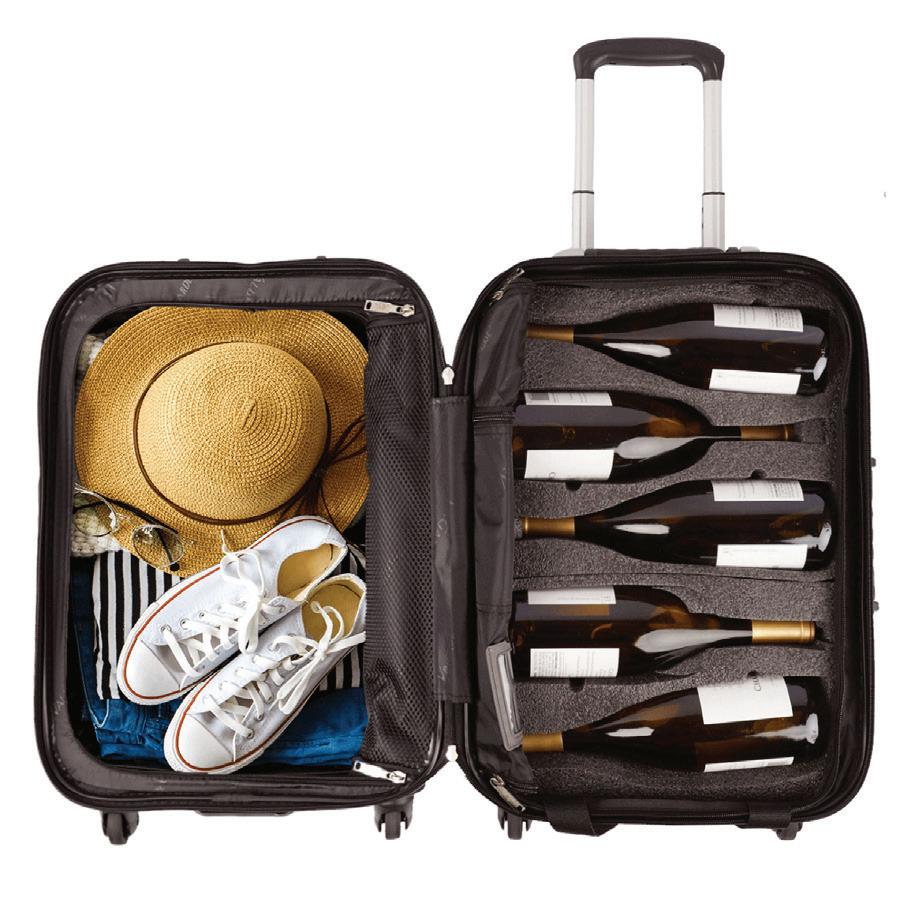
FlyWithWine PROTECT YOUR WINE
This innovative suitcase is designed with wine on your mind! Whether you’re going away for a long weekend or coming back from a winery, you’ll love knowing that your favorite bottles of wine are along for the ride — and safe from breakage. The VinGardeValise by FlyWithWine is a line of tough suitcases designed with dense foam inserts to cradle and protect wine bottles.
$399.99 CAD I WWW.FLYWITHWINE.COM FLY_WITH_WINE
Beat the heat with some bubbly wherever you go! With easy operation without the need for power or batteries, change the way you drink your favourite beverages. Carbonate juice, tea, cocktails, wine, water and even re-fizz sodas!
$349.99 CAD I WWW.BREVILLE.CA BREVILLECANADA

This is the most compact cooler in the YETI lineup. It’s small, but a mighty version of the classis Roadie Family and still packs all your favourite essentials, cans, and wine bottles.
Don’t let the size fool you! This portable cooler is made with RockSolid™ Strength meaning it’s armoured to the core and virtually indestructible. The same insulation and thick walls that keep the cooler cold, can also be used to keep the heat meaning you can use it for hot or cold items.
$300 CAD I WWW.YETI.COM
Discover the convenience of The Foldie, a foldable, spacious, and airline-friendly travel bag. Lightweight yet durable, it unfolds to meet all your packing needs, featuring a leak-proof wet pocket among its nine smart compartments. Available in 13 colors, with versatile straps and dual water bottle holders, it's ideal for any adventure. Simplify your travel with The Foldie. For a limited time, enjoy an exclusive buy one, get one free deal!
From $69.95 CAD I WWW.THE-FOLDIE.COM THE.FOLDIE.OFFICIAL
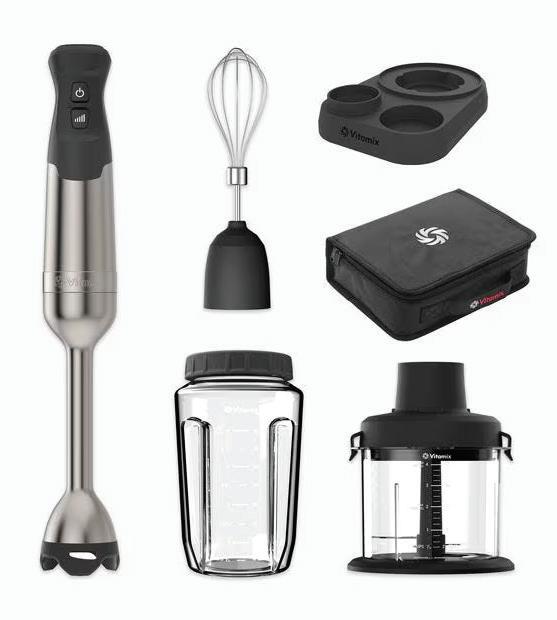

Take advantage of enjoying summer’s fresh fruit and veggies on your next trip with this small but powerful blender. Enjoy the convenience of blending all your favourite recipes in your favourite container with a 7.62 cm wide (or larger) opening – perfect for a 1-quart wide-mouth Mason jar. The bundle comes with a mini-chopper attachment, whisk attachment, immersion station, blending jar and storage case.
$369.95 CAD I WWW.VITAMIX.COM VITAMIXCA
BY CALVIN ZARYSKI COURTESY BARBADOS OPEN WATER SWIM FESTIVAL
ZARYSKICALVIN CALVIN.ZARYSKI
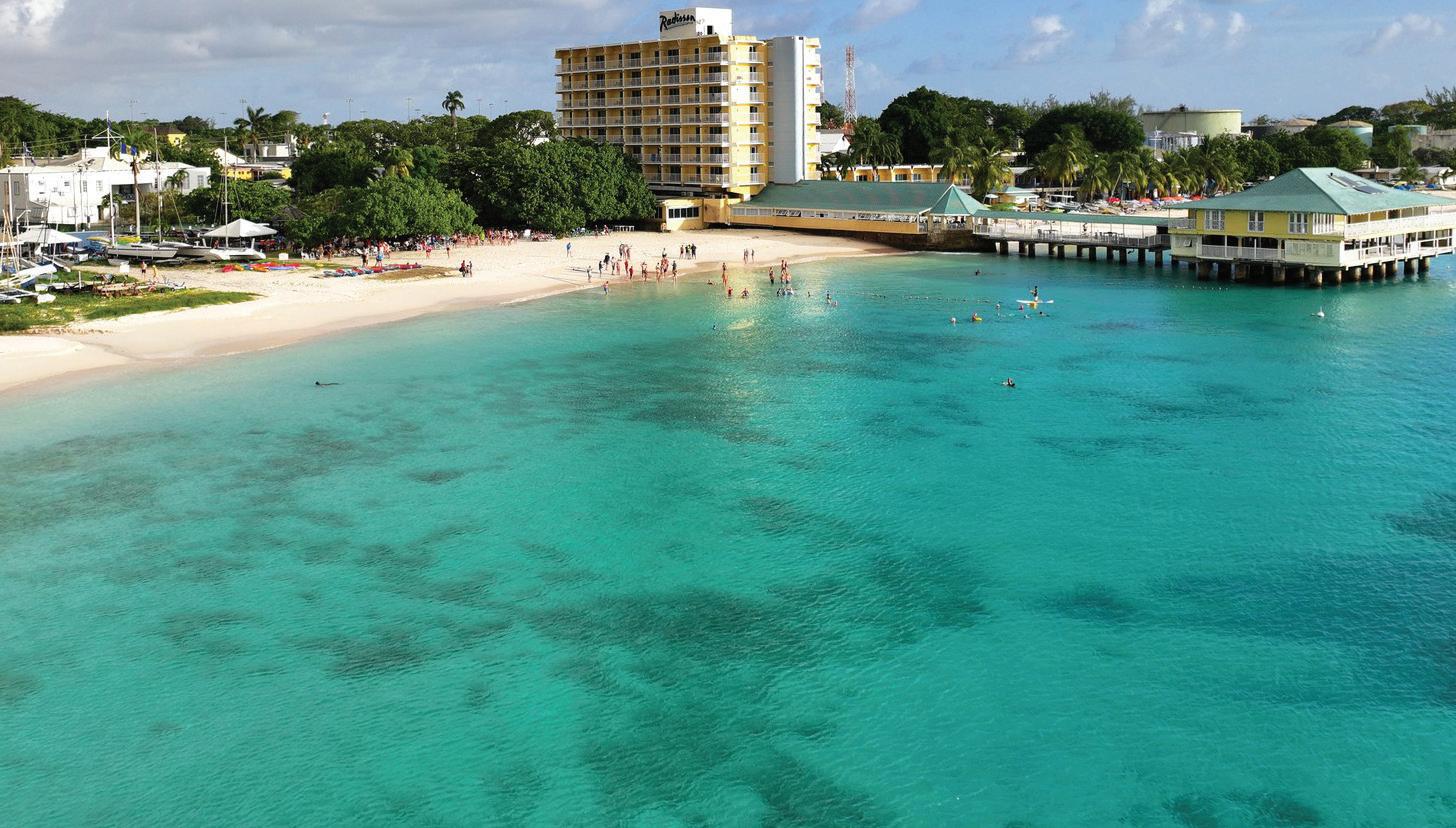
After a three-year pause, 2023 marked the resurrection of the Barbados Open Water Swim Festival this past November. Just as the weather cools in Canada, the event allows swimmers of all abilities to experience this unique island firsthand displaying one of its incredible assets, the warm calm waters for the Caribbean Sea. Not just a two-day swim race, but Zary Evelyn, the race director and founder, creates opportunities to swim at four different beaches during the five-day festival featuring some of the most spectacular beaches populated by some of the friendliest people on earth. The swim competition is for all levels, including a 1.5 km ‘Just for Fun’ event along with a competitive race on Saturday which had over 350 swimmers. Sunday offered a Swim the Bay 3.33 km, 5 km and 10 km race hosted at the Barbados Yacht Club on the calm south shoreline, an ideal location for the swim festival. I decided to swim the 1.5 km race on Saturday then surprised myself placing third in my age group in the 5 km swim on Sunday. The fun doesn’t end with just an amazing swim over shipwrecks and among the turtles, but concluding each swim day was a spectacular social barbecue and two-for-one happy hour featuring local rum creations. I met countless Canadians from Eastern Canada, a sprinkle of Western Canadians and even a few athletes from San Diego and Western USA. The event was high energy in warm, safe waters with ample safety support even during the practise swims. And the island hospitality encouraged plenty of vacation celebration with a sprinkle of historic and geographical uniqueness.
Most accommodations are situated along the coastlines of this 45-kilometre-long, 22-kilometre-wide Island. I stayed at the Canadian-owned Southern Palms Beach Club & Resort Hotel on the south side. The property has 500 metres of soft-sand beach perfect for those early morning walks or jogs before an in-house breakfast buffet. Accommodation can also include a meal package
records from Calgary, AB.
but the fresh muffins and tea at 4 p.m.is free for all guests. This location is special for water enthusiasts because of a small section of shoreline that’s perfect for learning how to surf or bodysurf, while further down the beach the water is calmer—ideal for smaller children and water bathing.
Of course, the food was a highlight with fresh fish in abundance. The use of spices and local garnishes created dishes that were always unique and delicious. The cocktails before and after meals featured their hallmark industry-quality rum. There seemed to be no limits in drink creativity. Barbados is a foodie’s paradise. Some of the amazing restaurants include Cocktail Kitchen, which was walkable from our hotel and was in the heart of the best night life on the Island. My favourite restaurant was Champers, located right on the seashore with a diverse selection to meet every dietary need and preference from main courses to amazing desserts.
Staying a week on this most-southern island in the Caribbean just isn’t enough. The many tours offered are highly recommended, educating visitors on the island’s history. Tourism, sugar cane and rum are the main industries which translate into a safe, friendly visit with lots of great night life and amazing desserts. My favourite tours were the Harrison Caves, which included the Monkey Zipline and the Gully Challenge Obstacle course. Near Harrison Caves, a must see is The Hunt Gardens, which features over 84 species of plants and flowers. Labelled as the most enchanting place on earth, this small footprint is a snapshot of Mother Nature’s most colourful vegetation. The Mount Gay Rum factory (EST 1703) is the second oldest producing factory of rum in the world. This two-hour tour covers all aspects of making rum using the naturally distilled water and locally grown sugar cane and one-of-a kind local yeast. The tour also provides rum tasting and education on how to evaluate and describe the characteristics of a world class rum, which is useful when impressing your friends while sipping
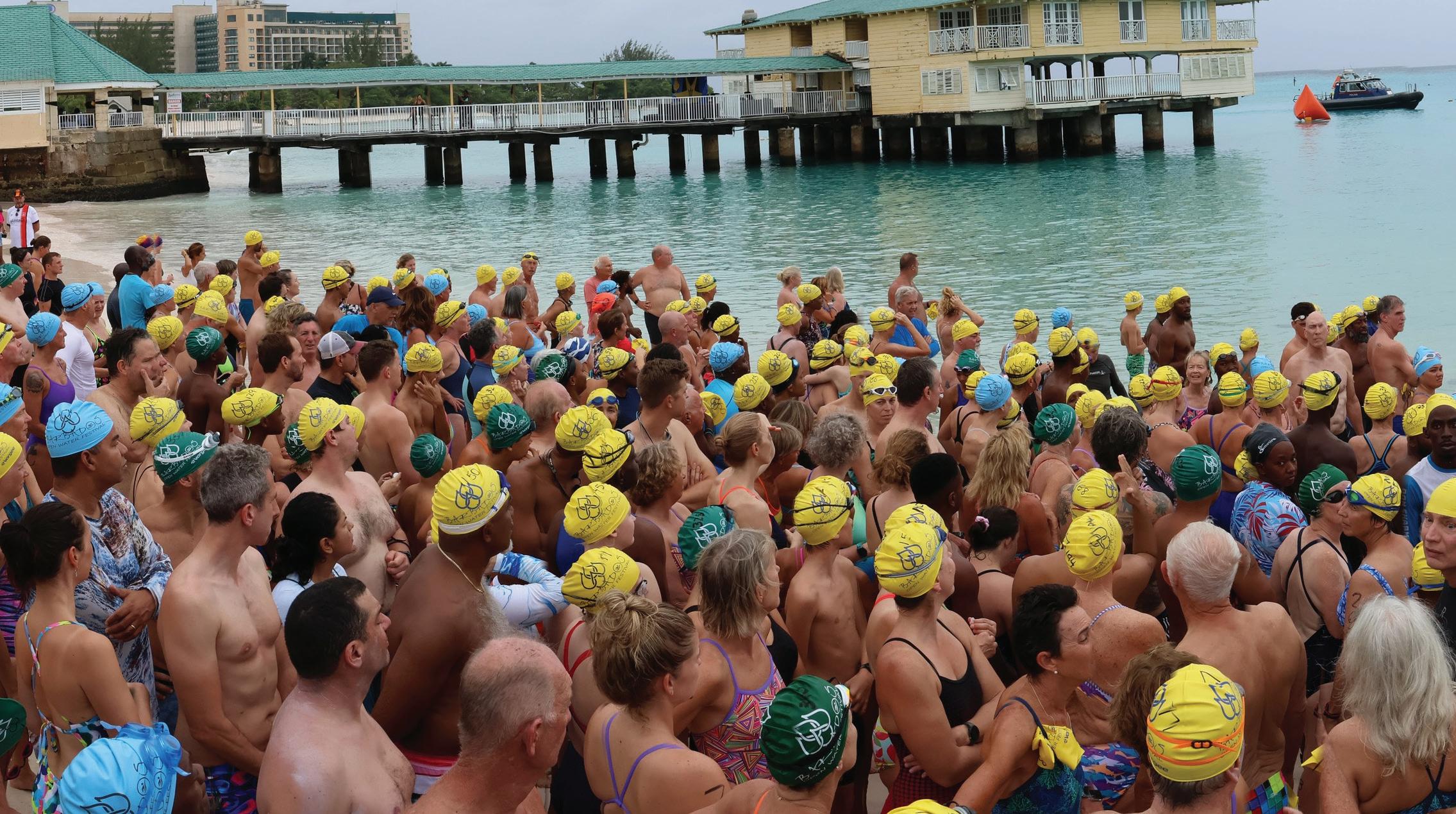
the most popular XO Triple Cask Blend variety. Best to purchase a few bottles at the gift shop to bring home. Make sure to wear proper footwear (not sandals) for the tour!
If you would like to see and learn about the entire island in a day, Jungle Tours will guide you around the perimeter of the island for a six-hour trip, stopping at the major tourist attractions. This rugged adventure first heads northeast to the cooler Atlantic coast where some of the best Caribbean surfing can be found. Although not a tour stop, but worthy of a visit, the Zemi Cafe features one of the highest points on the island from which to view the rugged Atlantic Ocean while enjoying some local cuisine. The tour heads inland again, stopping at some of the most historic locations the island has to offer. And finally turns south after a quick drive down Rihanna Drive, past the famous Barbadian singer, songwriter and actress’s childhood home. The tour guide was incredibly knowledgeable and friendly for this half-day tour.
One of the most popular Friday night destinations for great market food and entertainment is the Oistins Bay Gardens Entertainment Stage. I was fortunate to witness some local Michael Jackson impersonators and street performers. The food was fresh and delicious from Pat’s Place, a local vendor, and the atmosphere brings out the festive party animal. The locals love to entertain and promote their culture through the arts and cuisine. Make sure to visit Oistins Bay Gardens on the weekends.
If you are looking for a romantic evening lunch or dinner on the seashore look no further than La Cabane. Local delicacies and the lapping of gentle waves make this location memorable. Their fish tacos and caramel banana dessert were spectacular. In the daytime the beach was pristine and calm and earned my vote for the nicest place to spend a beach afternoon with safe swimming (lifeguards nearby).
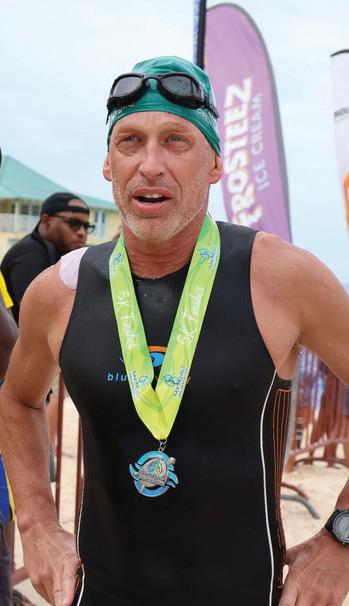
With so much that Barbados offers, it’s easy to plan an island adventure followed by amazing food each day. The swim festival schedule accommodates the tourist and sun worshipper in everyone as well as providing the opportunity to participate in a world-class event. In 2024 the swim festival is scheduled for November 6-10. Both WestJet and Air Canada fly to Bridgetown typically connecting through Toronto. Again, the festival cannot be more perfectly planned for Canadians looking to test themselves in open-water swimming and get a last dash of sun and hot weather!

Visit: www.barbadosopenwaterfestival.com
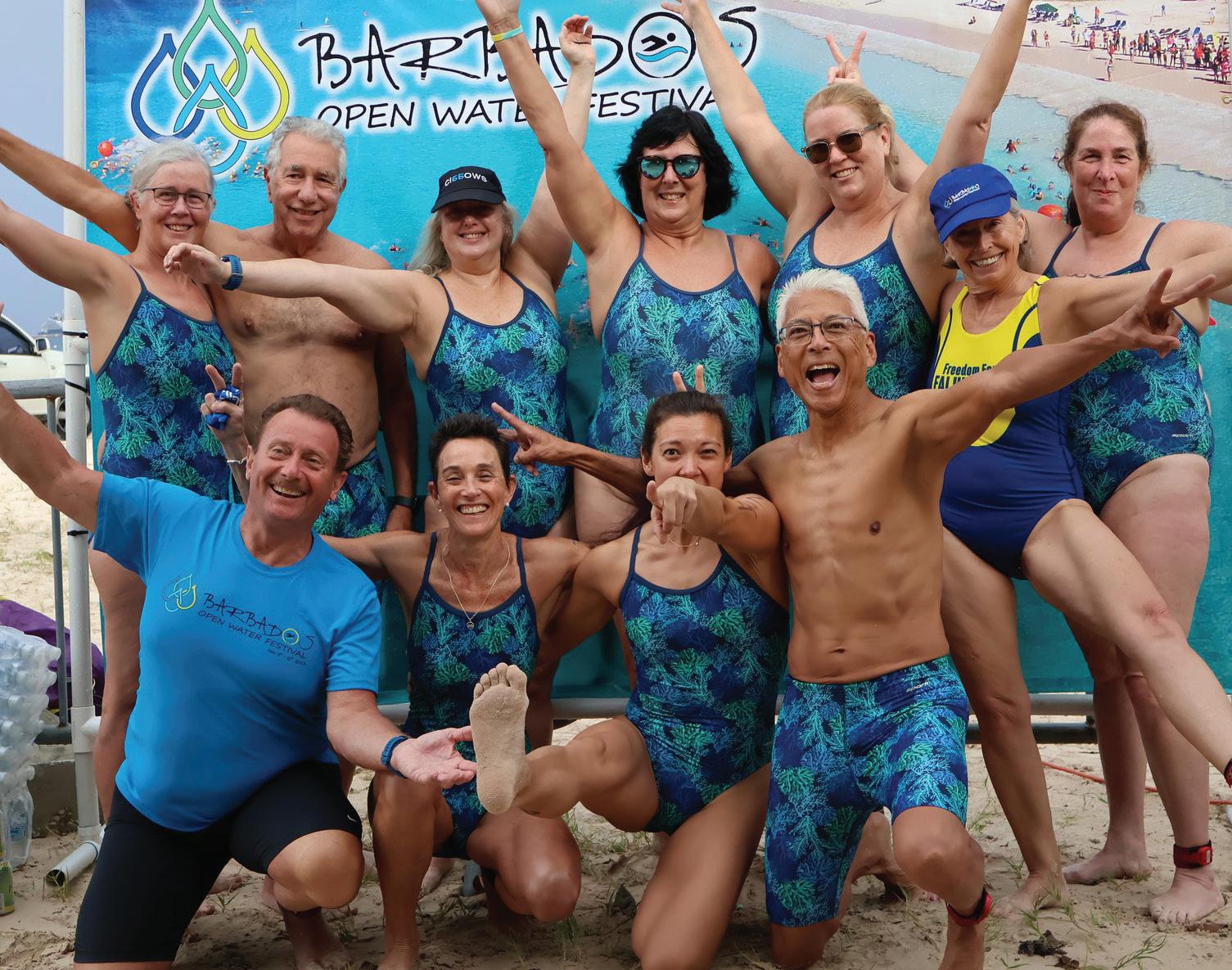

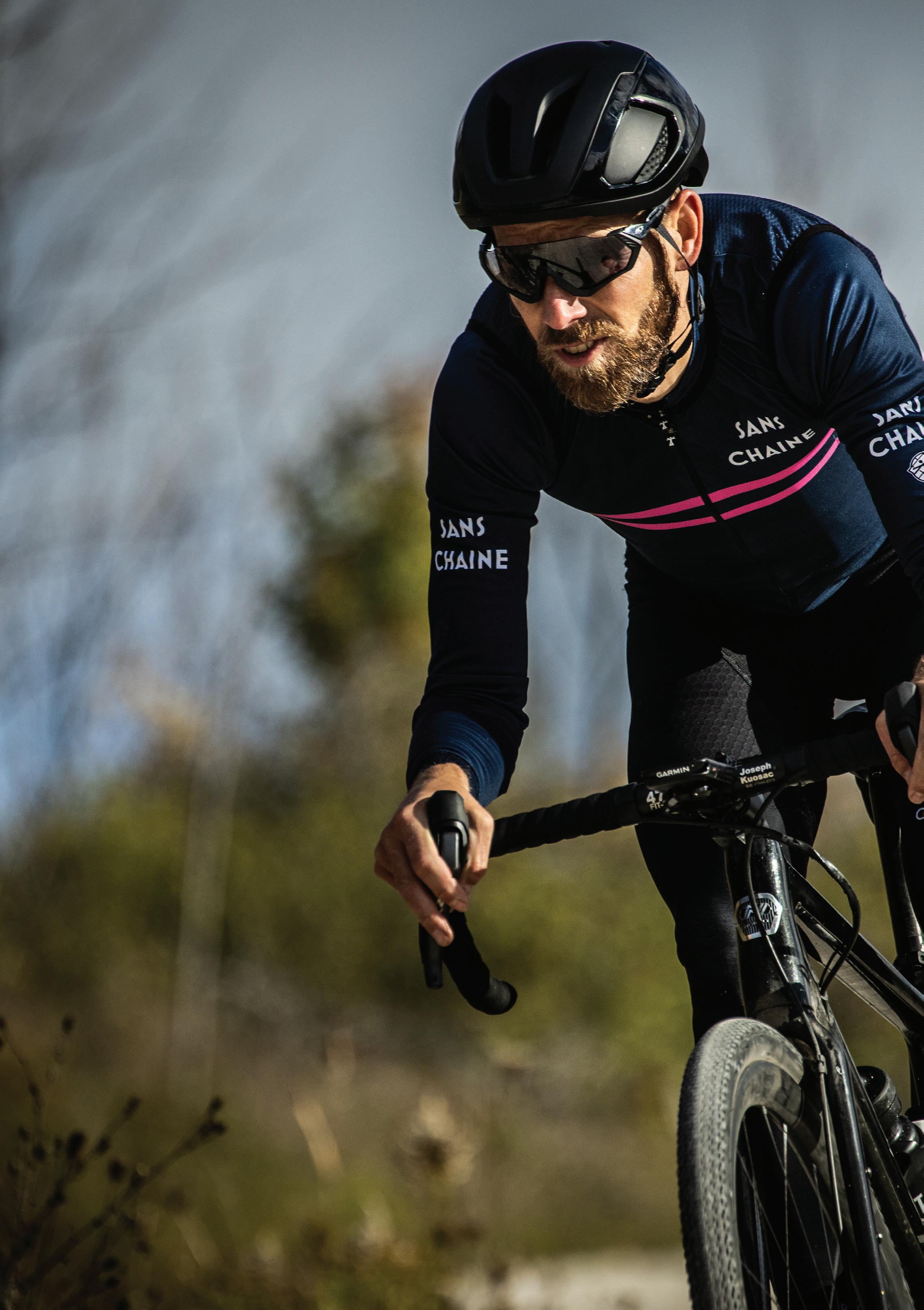
Gravel riding gives you the power to create a path no one has forged—yet. From equipment to gearing, use this guide to rock and roll.
BY ANDREW RANDELL CHRISMONETTEPHOTOGRAPHY
A Toronto, ON-based coach who aims to maximize his clients’ fitness, while keeping the riding a pleasure and positive influence in their lives. SANSCHAINECYCLING


ravel riding is experiencing a real moment in the world of cycling. It is opening the door to new experiences and creating a space in which more riders can participate and enjoy themselves. But what exactly is gravel riding?
There is no clear definition of what a gravel ride is. This is part of what makes it so great. Gravel riding encompasses a wide variety of terrain and conditions. Some would call groomed rail trails gravel riding. While others would say that it should include riding that one would more likely associate with mountain biking (not North Shore jumps, but definitely some single track).
An overarching theme is the idea of exploration and getting off the beaten track. Outside of the groomed rail trail, most gravel riding feels more natural and organic than a road ride. Gravel roads are less travelled and tend to follow the natural contours of the land. And best of all, the gravel bike allows you to string together “mixed terrain” rides. Think paved road, double track, single track, gravel road, rail trail—anything and everything. Riding mixed terrain, you can create routes that
lower tire pressures. On the road, the mantra used to be that hard tires are fast tires. Recent science is telling us that lower pressure is in fact faster when the surface we are riding on isn’t perfectly smooth. A lower tire pressure also allows the tire to do its job when things get dirty, providing more grip. This is something that mountain bikers have known for a long time. As a gravel rider, experiment with lowering that tire pressure. Let yourself get used to how a squishier tire feels, and you may find that you can’t ride that harder pressure anymore. The reduction could be as little as 5-10psi, which your tire gauge isn’t accurate enough to read. A digital tire gauge may become your new best friend.
Of course, we can’t forget about gearing when talking about gravel riding. The exploration side of gravel riding does require a wide gear range on your bike—a big enough gear to roll smoothly on the road or smooth gravel, and easy enough to get up some pretty steep terrain. Try riding a double chainring up front and an 11-34 setup on the rear for a wide gear range, allowing you to ride a single bike and use it on the road and gravel.
Equipment choice will make the most of your gravel riding and exploration. You’ll want wider tires than you think, 40C and maybe even more, to give you some confidence in the bike’s handling and stability over rougher terrain. And make sure with that tire width there is room for some mud clearance against the frame. Do you need big knobs like on a mountain bike? Probably not. Some of the newer gravel tires with a smooth centre tread and small knobs on the side roll really well. They feel fast on the road and handle the dirt just fine.
One area where gravel riding is having a big impact across disciplines, particularly into road riding, is the idea of using some
As you dig into the world of gravel riding keep an open mind. This is a discipline with no clear definition. If you are a roadie, don’t think you’ll tackle your first gravel ride and just rock it. There might be some technical single track and deep sand sections out there on the route. Mountain bikers, with their technical abilities, have an advantage as they jump into gravel riding. For all of you roadies out there, be sure to take some time to learn and practice some technical skills. Proper weight distribution, cornering, and bumping over roots while letting the bike get loose are all skills to work on. Ride within your limits as your skills develop and you’ll keep it fun.
If you aren’t all about going fast on the most aerodynamic bike, then gravel bikes and gravel riding are for you. With a good gravel bike, you can unlock a whole new world of riding.
On August 11th, 2024, the expansive landscapes of Strathcona County will set the stage for an exhilarating cycling adventure— the Great Canadian Gran Fondo (formerly L’Etape Canada).
As the largest Fondo in the Prairies, this event promises not only a test of endurance but also a celebration of the region’s stunning natural beauty and vibrant community spirit.
Cyclists from across the globe will converge on this picturesque part of Alberta, ready to embark on one of three challenging routes: 135km, 95km, and 50km. Each route offers a unique experience, tailored to different levels of expertise and endurance, ensuring that every participant finds their perfect ride.
The 135km route, a true test of stamina and determination, winds through a diverse terrain of rolling hills and serene countryside. Starting from the heart of Sherwood Park, riders will navigate through lush farmlands, dense woodlands, and quaint rural communities. The course, designed to push even the most seasoned cyclists to their limits, offers breathtaking rural roads that make the effort worthwhile. Along the way, strategically placed rest stops sponsored by Mattamy homes will provide much-needed respite, allowing riders to refuel with local delicacies and refresh before continuing their journey.
For those seeking a slightly less grueling challenge, the 95km route offers a balanced mix of endurance and enjoyment. This course is perfect for cyclists who are looking to push themselves without committing to the full 135km. Riders will experience the same picturesque landscapes and welcoming communities, with a slightly shorter distance that still ensures a fulfilling day of cycling.
The 50km route, while the shortest, is by no means the least rewarding. Designed for novice cyclists, families, or those simply looking to enjoy a leisurely ride, this course meanders through some of the most scenic parts of Strathcona County. Participants will have ample opportunity to soak in the beauty of the region, making frequent stops to capture memories and enjoy the camaraderie of fellow cyclists.
The Great Canadian Gran Fondo is more than just a race; it’s a community event that brings together cyclists of all ages and backgrounds. The atmosphere is electric, with local residents coming out in droves to cheer on participants. The sense of community is palpable as volunteers man the rest stops, local businesses provide support, and families line the routes, offering encouragement and refreshments.
One of the highlights of the day will be the finish line festival, held at JH Picard High School. Here, cyclists and spectators alike can enjoy music, food provide by The Italian Centre Shop, and a marketplace showcasing the best of Strathcona County’s artisans and vendors. The festival provides a perfect opportunity for participants to unwind, share stories of their ride, and celebrate their achievements.
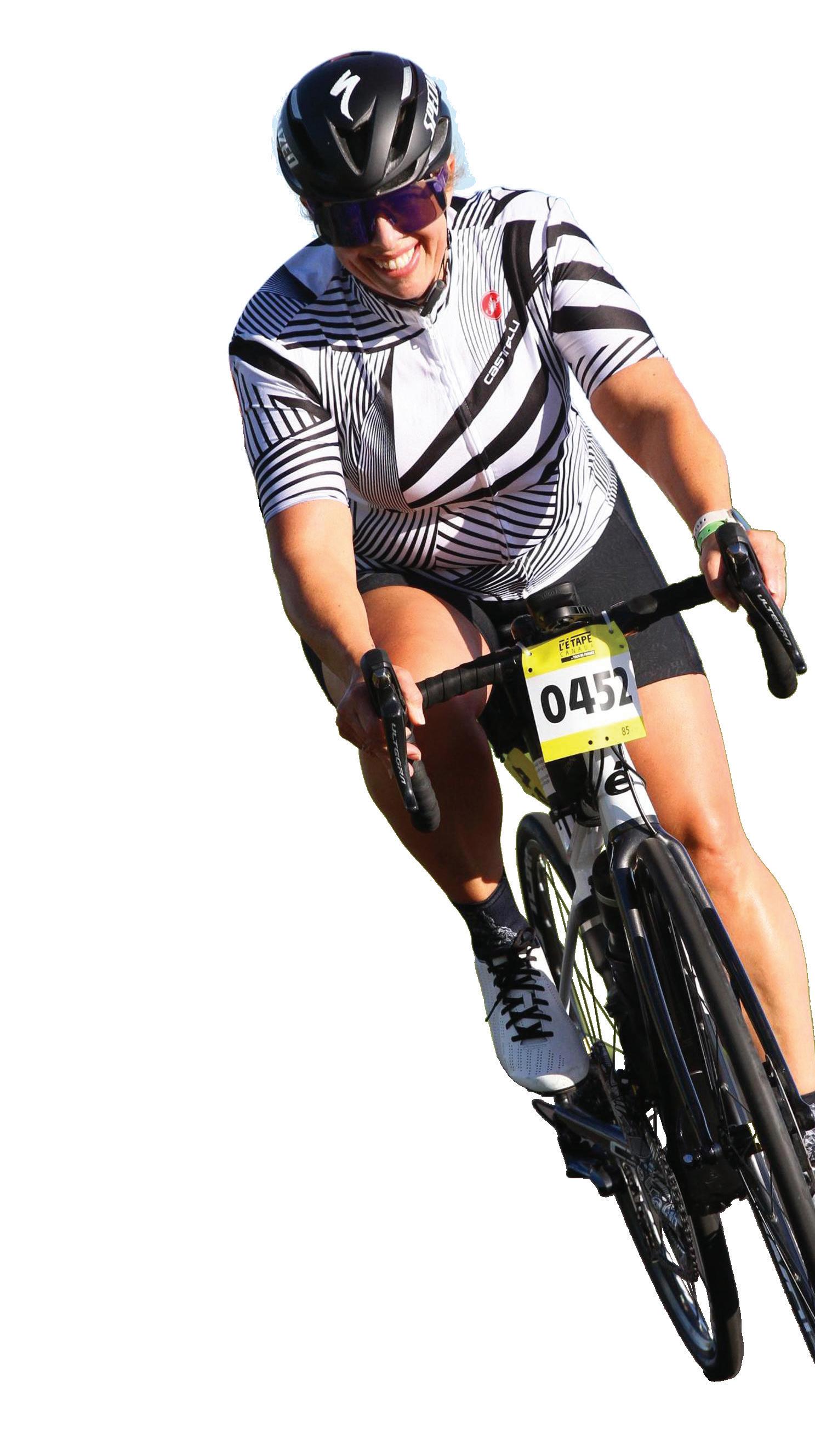
As August 11th approaches, excitement builds for what promises to be an unforgettable day of cycling and celebration. Whether tackling the formidable 135km route, the balanced 95km, or the leisurely 50km, participants in the Great Canadian Gran Fondo will create lasting memories against the backdrop of Strathcona County’s stunning landscapes. This event, the largest of its kind in the Prairies, is a testament to the power of community, the joy of cycling, and the beauty of the Canadian heartland.
Join us for the Great Canadian Gran Fondo and become part of a tradition that celebrates the spirit of adventure, the thrill of the ride, and the warmth of community. See you at the starting line!




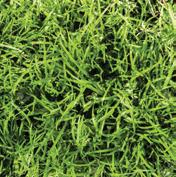
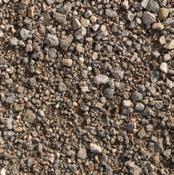


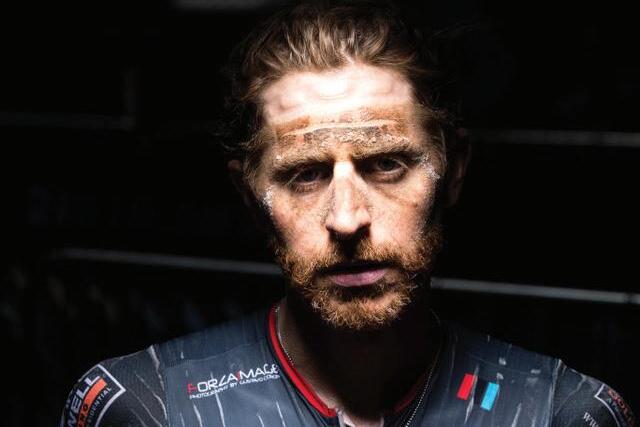

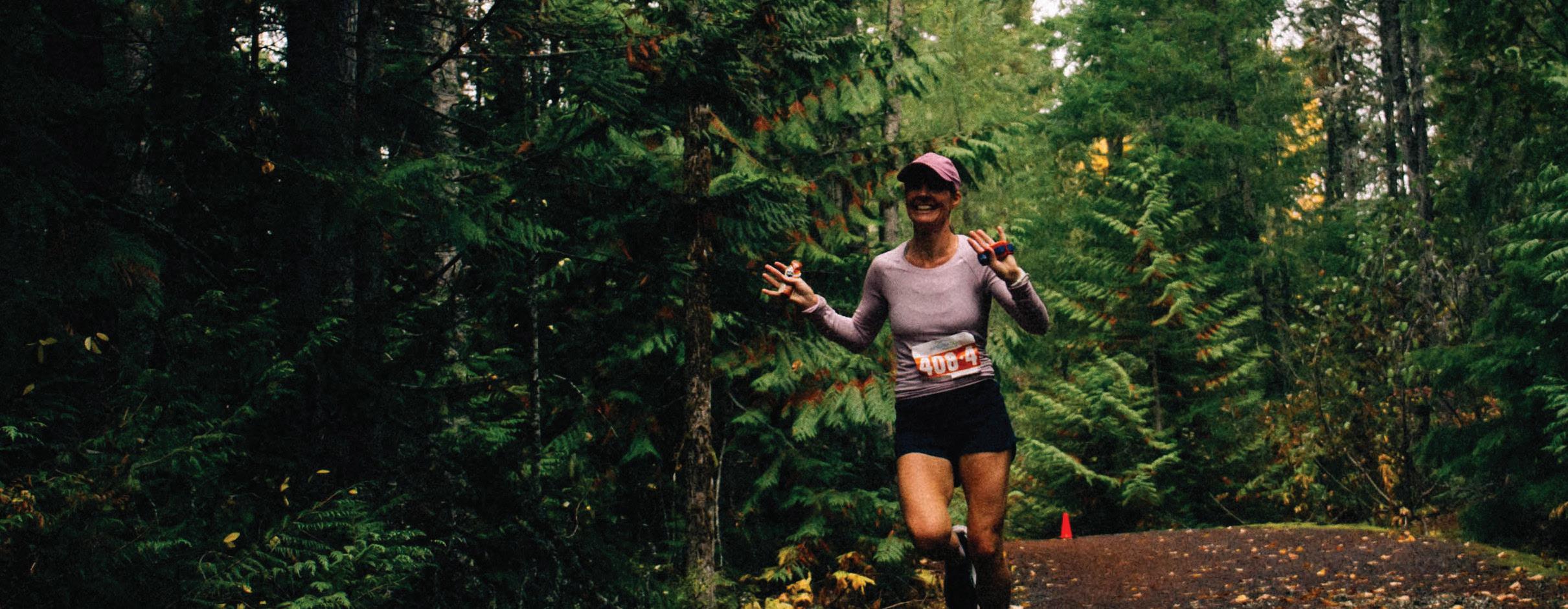

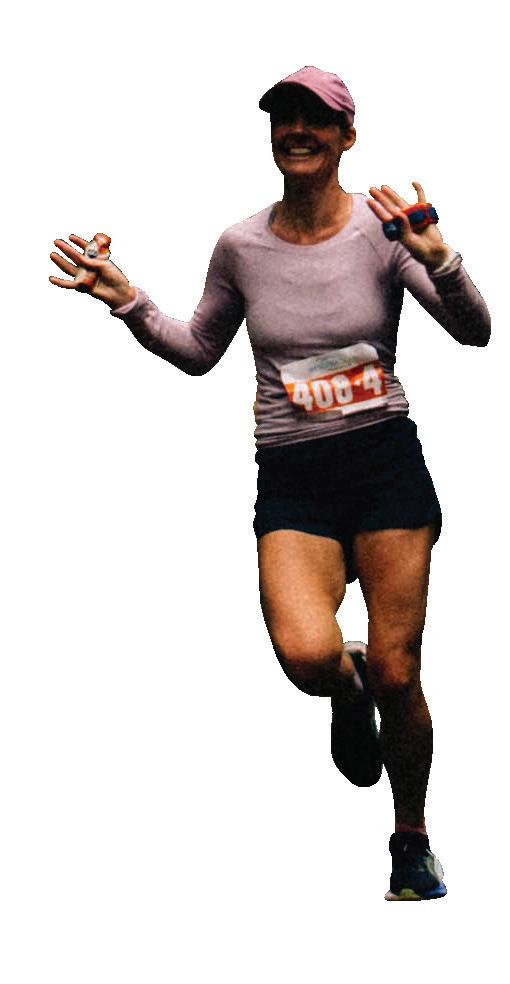

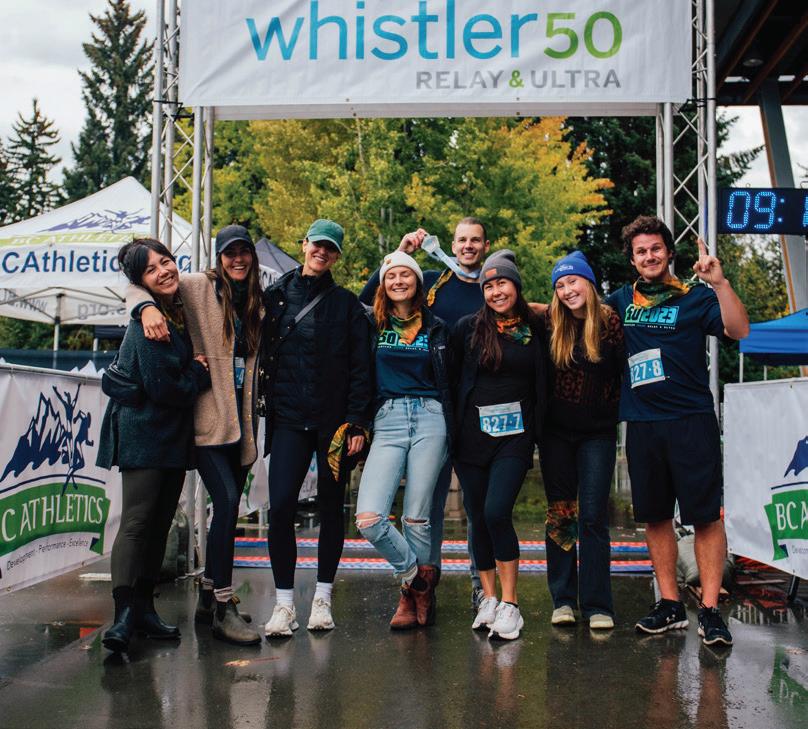
Keep nature pristine with these tips to not only reduce garbage, but eliminate it
BY LOTTIE LAKEN
A Gibsons, B.C.-based writer and outdoors enthusiast, dedicated to sharing stories that inspire others to enjoy wild spaces in a safe and sustainable way. LOTTIELAKEN
You aim to reduce waste in your life where you can, and your outdoor adventures, whether you’re camping or hiking, should be no different. After all, if you love spending time in pristine wilderness, why would you want to ruin it by generating trash? Zero-waste camping and hiking makes practical sense. You must pack out what you pack in. But if you’ve got a ton of garbage and you have to carry it around until you find a trash bin, you may be less inclined to wait for that opportunity. But with a little foresight and planning, you can limit the amount of garbage you bring in in the first place, producing less waste in the long run and causing less inconvenience. Plus, making an effort to zero-waste your hiking and camping trips will make a positive impact on the planet, and keep the wilderness just as pristine for generations to come.
Store-bought food almost inevitably comes wrapped in some kind of plastic. Snack wrappers, cling film, and dehydrated meal pouches are the main culprits. To avoid this, make your own food and store it in reusable receptables. Beeswax wraps, silicone resealable bags, and old plastic bags are great options. Avoid using paper bags that can tear or promote moisture. Maybe it’s not as quick and easy as grabbing a camp meal from your local shop, but it’s better for the planet’s health (and yours too).
When buying food for your trips, you can avoid a lot of plastic by buying from dispensaries and the bulk section of supermarkets. Again, this does take a little bit more effort, but it’s worth it. Take your own containers, be it old bags or nut milk bags.
If you’re heading out for more than a day, check whether the water sources are safe to drink from. If not, boil water before consumption or get a water filter. This creates less waste than using water purification tablets. Stainless-steel bottles are great for the environment because they last a lifetime and don’t leach plastics. However, they’re heavy and don’t usually have much capacity. Collapsible or soft-sided reservoirs may be more convenient for active outings.
When going to the toilet in the backcountry, you should dig a cathole, do your business into it, and then cover it back up. If you must use toilet paper, use non-perfumed toilet paper and bury it in the cathole, or pack it out. Or, to really make it zero-waste, use natural toilet paper: Moss works particularly well.
If you’re in the backcountry, then how clean do you really need to be? You can most likely wait until you get home to shower. And don’t be fooled by biodegradable wet wipes, which take a very long time to break down. If possible, have a dunk in the ocean or a lake, river, or stream (assuming swimming is allowed). You can use a small amount of biodegradable soap, although any grey water must be disposed of at least 200 metres from alpine lakes and streams. If you use soap sparingly, then a small bottle can last years, after which it can be refilled at a dispensary.

For other hygiene, opt for a bamboo toothbrush, and decant dispensary toothpaste and deodorant into travel-sized containers for convenience. For feminine hygiene, try a Diva Cup or similar reusable product, ensuring you never have to throw away tampons or sanitary pads again.
When it comes to gear, the best philosophy is to buy once and buy well. If you get quality goods, then they’re much more likely to last. Also be sure to look after your products. Dry out your gear and store it properly. These practices promote longevity.
Opt for items that are reusable. Rather than a single-use plastic spoon, take a spork or stainless-steel cutlery, and don’t be afraid to grab these items straight from your home cutlery drawer. Remember that outdoor gear doesn’t need to be fancy—you might find long-lasting items from your local thrift shop.
While most of us love encountering a furry friend on the trails, we likely don’t love witnessing abandoned poop bags on the trails. Additionally, while many pet waste products claim to be biodegradable, this process takes many years. If your dog poops, either bag it up and pack it out with you, or dig a hole and bury it, like you would with human waste.
Even if you stick to the above advice, one thing will undo all your good work: Driving to the trailhead. For most of us, this will be the biggest source of carbon emissions when camping or heading out for a hike. Instead, if you’re able, cycle to trailheads that are within a reasonable distance. You’ll be amazed at what you can reach without a vehicle. If this is a step too far, consider public transport or car-sharing instead.
This article was edited for length and republished with permission from herwildway.com.
BY KIRSTYN BROWN
An Ontario-based freelance journalist and editor, specializing in health and fitness. KIRSTYN_BROWN

Being in the great outdoors provides so many benefits for your mind and body. But what if you could leverage the power of science-backed information to give your health even more of a boost while you’re soaking up the best that Mother Nature has to offer? Based on research and the latest studies, here’s how you can take the already amazing benefits of being in nature and amplify them to a whole new level.
If you tend to toss and turn at night, then soaking up some sun during the day could be the ticket to better slumber.
That’s because light, especially natural daylight, is the biggest factor in setting your body’s sleep-wake cycle, otherwise known as circadian rhythm. This 24-hour internal clock is driven by an area in the brain called the suprachiasmatic nucleus (SCN), which responds to light and darkness to regulate wakefulness, hunger, and even body temperature. Sunlight shifts your internal clock, telling your body when it’s time to get up, and in turn, when it’s time to go to bed.
“Morning sunlight acts like the ultimate wake-up call for your circadian rhythm,” explains sleep expert Kelly Murray. “The SCN uses light to figure out what time of day it is. When your eyes catch those morning rays, it sends a signal to the brain to decrease melatonin production (sleepy hormone) and increase cortisol levels (alert hormone). This helps set the tone for your body's daily cycle, keeping you awake during the day.”
Grab those sun rays ASAP by going for a morning walk. “Try to spend a minimum of 10 minutes, ideally 30 minutes, outside within an hour of waking up,” suggests Murray. “This is prime time for resetting your internal clock.” Then, aim to get out for 10-minute doses of sun exposure — what Murray calls “sun snacks” — throughout the day, such as mid-day and early evening. Cloudy skies? Get out the door anyway — you’ll still get a bigger dose of natural light (up to 10 times more) than you would inside. “Natural light, even when filtered through clouds, contains a full spectrum of wavelengths that our bodies need to regulate the circadian rhythm,” says Murray.



Ever notice you feel happier after hanging out in the park or spending time by the ocean? You can thank Mother Nature. A growing body of research has shown that spending time in nature delivers a ton of mental health benefits, from boosting your mood to reducing stress and anxiety.
For instance, a 2020 study in Frontiers in Psychology found that just 10 to 50 minutes in a natural setting reduced stress and improved well-being in college students, while another 2020 study out of Japan revealed that “forest bathing” had therapeutic benefits, particularly in those suffering from chronic stress.
And while it’s certainly not a cure-all, frequent doses of green space may also help with depression. A 2015 study by Stanford University found that when participants walked for 90 minutes in either an urban area or a natural setting, those who strolled through nature had greater decreased activity in the area of the brain associated with depression.
Take your workouts from the gym to a lush park or wooded area for a double dose of mental health benefits. According to a 2024 study by King’s College London, in which data was collected from 2000 participants, areas with a lot of natural features like trees, waterways, flowers, and wildlife provided greater mental well-being than those with fewer natural features. So grab your resistance bands and light weights, or just use your bodyweight, and hit up an area with plenty of trees—the more biodiverse, the better.
If you’re used to grinding it out on the treadmill, this is your sign to go hiking instead. The uneven terrain of hiking trails engages more muscles than a flat surface, making you work harder and thus, burning more calories (up to twice
“With normal walking you're limited in the variations of your gait cycle, so if you're walking on a treadmill for a certain amount of time, you're going to have a similar pattern throughout,” says Daniel Warwick, MSc, who specializes in biomechanics, rehab, and performance. “[When hiking] your body must adapt and absorb force in different positions. You're going up different gradients. You might be moving side to side. So overall, biomechanically, you're getting a lot more bang for your buck over just walking straight.”
Find a hiking trail with some challenging inclines. You’ll torch even more calories and get a more effective lower body workout to boot, since hills require more muscle recruitment from the quads, hamstrings, and glutes.
“Going uphill and downhill, we're absorbing more force and producing more force when we step, which takes more recruitment of muscles,” says Warwick. “The more muscle recruitment, the more need for the heart to pump blood around the body. And when the heart rate is elevated, we burn more calories nearly across the board.”
Our society moves at the speed of light. Here’s how to slow down, reconnect, and experience pleasure in every day.
BY JORDIN WIGGINS VICKI BARTEL
A naturopathic doctor, author, pleasure and intimacy coach in Toronto, ON and the CEO of the Pleasure Collective, a coaching community for high-achieving women who want more pleasure in their lives, in and out of the bedroom.
DRJORDINWIGGINS
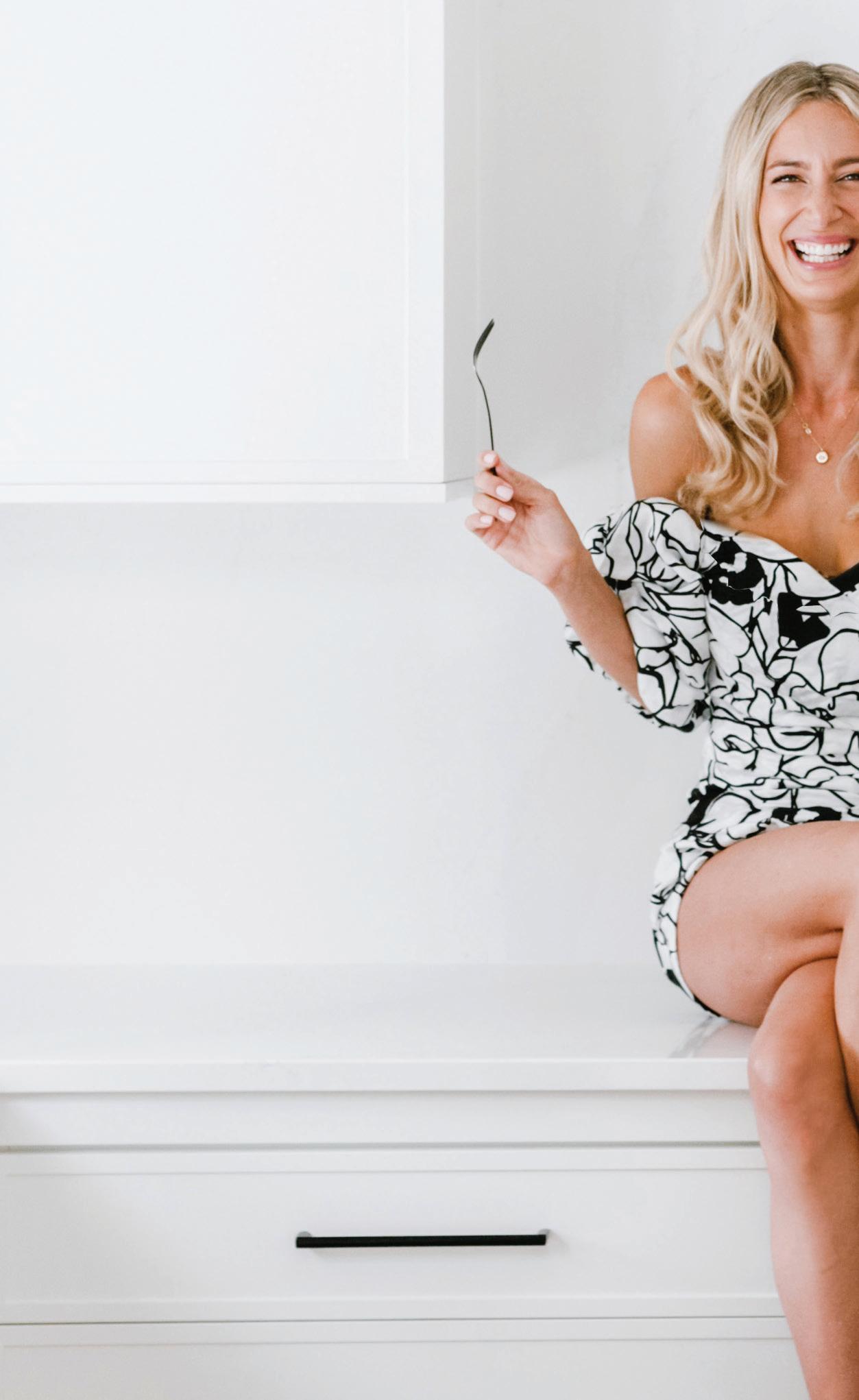


ou might associate the word “pleasure” with sex—how to have more passion, what to do to give your sex drive a boost, or how to spice things up. And these things can be true. But pleasure reaches so much further than just sex. Pleasure can also be found in indulging in reading a good book, enjoying a delicious meal, or spending time with a friend. With this definition, you may be surprised to hear that a lack of pleasure is a large threat on
Anhedonia is a medical term referring to the inability to feel pleasure, and it is becoming more and more common among individuals, leaving them feeling exhausted, burnt out, depressed, and more joyless than ever. And it’s no wonder when you consider that today, we’re often racing around faster than ever before, numbing ourselves with social media, and losing important connections to loved ones because we’re preoccupied with other factors that are constantly pulling
Unfortunately, even once you identify that you’re experiencing anhedonia, simply being aware of the problem isn’t enough to fix it. This is because as high-achievers, most of us have spent our lives in sympathetic nervous dysregulation (commonly referred to as fight-or-flight) and our bodies have learned to be comfortable there. When our nervous systems are in sympathetic overdrive,
But what we can do is resensitize our mind and body to feel more pleasure—in every area of our lives. By training ourselves to feel again, and in turn experience pleasure, you can expect to be able to finally relax on vacation, be present enough to enjoy success in your achievements, feel confident accepting compliments, and even separate from numbing behaviours you’ve found
thinking about your to-do list at all hours of the day, or feeling the need to speed up when you’re experiencing stress. We stay busy to avoid feeling things. We sit on the couch and “relax” but instead of truly being present, we watch Netflix, eat, or drink that glass of wine we “need” after work. Going slow forces us to get acquainted with our feelings. Intentionally slowing down the way you walk, cook meals, or even kiss your partner will provide the pace needed to let your feelings come to the surface.
Removing excess stimulation is a great idea for high achievers, because we are always plugged in, so our attention is constantly at the ready. Even when we’re driving, we’re listening to a podcast or making a work call. Unplugging means having time during your day where you would normally engage in scrolling or online shopping, and instead, you disconnect. You can start small–unplug and sit with your feelings for five minutes. Try to relax and do nothing. No phone, no numbing activities. Allow yourself to feel what comes up.
Implement a regular practice where you move your body in a way that feels good—this is key. This doesn’t just mean going to a workout class or forcing yourself to go on a walk. It’s about moving your body in a pleasurable way. It’s about checking in with yourself and asking, “How does my body need to be moved right now?” This could look different every day. Maybe it’s a good stretching routine or putting on a song you love and moving to it. It may feel uncomfortable, but it’s not about doing it right—the goal is to do what your body needs.
Here are a few simple yet effective ways to become more vulnerable, present, and aware of your feelings in your daily life and start resensitizing your body for more pleasure.
You might think that because you meditate or go to yoga that you’re slowing down, but that hour probably isn’t enough to calm your nervous system as much as you might think. Some signs you need to practice slowing down include constantly multitasking,
Where in your body are you tense right now? It could be your neck, jaw, or pelvic floor. Strong emotions are stored in the body and can cause pain or tightness, and part of relaxing enough to experience pleasure involves releasing tension. This could be through interventions like massage and deep breathing. You can perform self-massage by finding a point of tension, applying gentle pressure, and feeling it release as you exhale. You may want to work with a professional, a pelvic floor physiotherapist, chiropractor, osteopath, TCM practitioner, etc., that is aware of these concepts and how the mind and body work together.
This article has been edited for length and republished with permission from thepleasurecollective.com
With high-tech devices dedicated to promoting relaxation and recovery, long days spent at the spa might be a thing of the past
BY DANIEL JAMES COURTESY OF VORTEX WELLNESS STUDIO
The CEO & co-founder of Vortex, a high-tech wellness studio in Collingwood, ON that integrates technology and mindfulness. VORTEXWELLNESS

Technology has affected every aspect of our lives, so it's no surprise that it has made its way into self-care and wellness. An increasingly popular trend, high-tech selfcare is revolutionizing how we approach health and well-being, offering innovative solutions that flip the script on traditional practices. Plus, it could be argued that selfcare was long overdue for a reimagining anyway—who’s got the time for long days spent at the spa?
Rather than relying on traditional hands-on therapies for enhanced performance and recovery, many athletes are now opting for the quicker, more efficient results of high-tech services that promote similar outcomes. But this type of wellness isn’t just for athletes—busy professionals or those juggling multiple roles and responsibilities are turning to high-tech wellness treatments for quick
and effective stress relief.
But what exactly is high-tech self-care, and is this trend one that’s here to stay?
High-tech self-care involves using advanced technologies to support and improve personal health and wellness. This includes a range of devices and modalities designed to optimize physical, mental, emotional, and even spiritual well-being. From infrared saunas to vibroacoustic instruments and neuroacoustic software, high-tech self-care merges science with mindfulness to create powerful and transformative experiences.
The benefits of high-tech wellness services are multifaceted, catering to both physical and mental health. Physically, these sessions can help reduce inflammation, improve circulation, enhance overall health, and accelerate
recovery from exercise or injury. They offer a convenient and effective way to support overall physical health without drugs, invasive procedures, or lengthy recovery times—many times, at a fraction of the cost and time associated with traditional procedures.
Mentally, this brand of wellness can significantly reduce stress, improve sleep quality, boost mood, and enhance mental clarity. Modalities like neuroacoustic and vibroacoustic therapy are particularly effective in promoting relaxation and mental rejuvenation, providing relief from the pressures of daily life.
Several factors are driving the popularity of high-tech self-care. The fast-paced nature of modern life leaves many people seeking efficient and effective ways to manage stress,

enhance energy, and maintain overall health. High-tech wellness offers rapid results that fit into busy lives, making them highly appealing. With sessions lasting anywhere from 10-60 minutes, treatments are designed to leave you feeling good fast—excellent news if the only time you’ve got to dedicate to yourself is your lunch hour. With ongoing research being conducted, high-tech wellness services come in a range of options that address various aspects of health and wellbeing. Some popular methods, such as infrared saunas that use full-spectrum light to promote detoxification, reduce inflammation, and relax muscles, have made their way into the mainstream already (some people have even installed infrared devices into their homes!), while others are still gaining popularity. Red light therapy is a growing trend
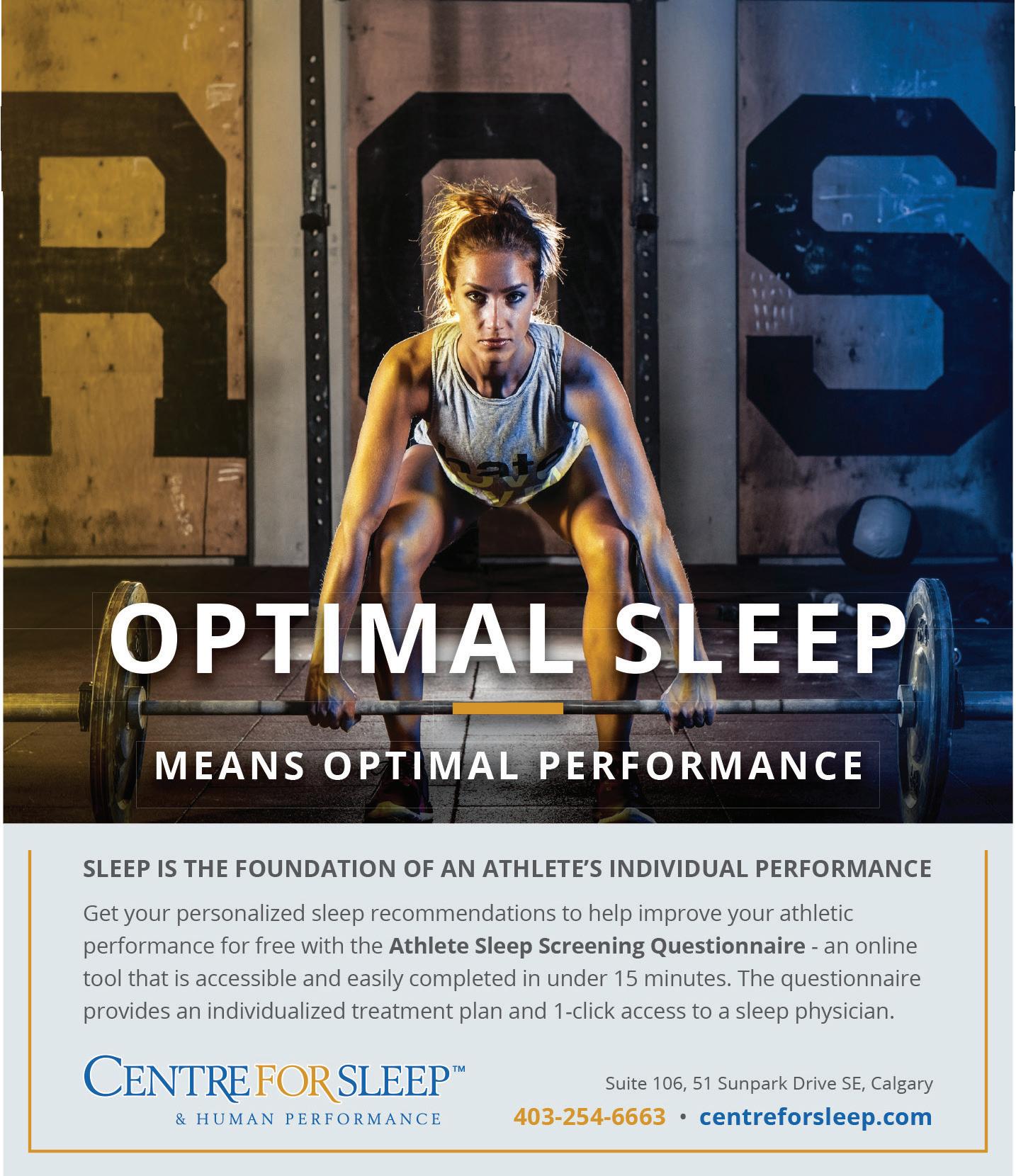
that uses specific wavelengths of light to stimulate cellular energy production that improves both skin health and your mood. Using sounds, neuroacoustic therapy software effectively guides the brain into deep relaxation, helping to manage stress, enhance performance, and support mental clarity. These sessions also provide the benefits of several hours of sleep in a short session.
Vibroacoustic therapy employs sound vibrations that gently tune the body into an optimal state, recalibrating the nervous system and promoting overall well-being. And for any athlete who’s reliant on traditional therapies for maintenance and recovery, compression therapy offers these benefits in a fraction of the time. Using dynamic air compression, this type of therapy improves circulation, breaks up lactic acid, speeds up recovery, and enhances lymphatic drainage, drastically
reducing muscle soreness and fatigue. Another new therapy, EES, is used to promote energy enhancement, and can provide stress relief and improve sleep through scalar wave technology. Additionally, salt therapy, which involves a salt generator that produces microparticles of salt, promotes expansion of lung capacity and improves respiratory health.
Looking ahead, the future of self-care is undoubtedly trending toward a more hightech, holistic approach. We can expect continued innovation in this field, with new technologies emerging to offer even more effective and accessible experiences. As awareness of high-tech wellness grows, this style of self-care will become more integrated into our everyday lives, making it a fundamental aspect of surviving and thriving in the world.
BY MIKE T. NELSON
A Vadnais Heights, MN-based research fanatic who specializes in metabolic flexibility and heart rate variability, as well as an online trainer, adjunct professor, associate professor, and creator of the Flex Diet Certification. He has a PhD in Exercise Physiology and an MS in Mechanical Engineering (biomechanics). DRMIKETNELSON
You’ve been told time and again that sleep duration is the holy grail of a good night’s rest. Too little, and you’re a zombie; too much, and you’re a sloth. But what if you learned that there’s a new player in town? As it turns out, sleep regularity may be just as—if not more important—than sleep duration.
Recent research conducted on a cohort of more than 60,000 participants has turned our understanding of sleep on its head. This study aimed to investigate the importance of sleep regularity in relation to overall health outcomes using data from the UK Biobank, a large-scale health dataset. Sleep regularity refers to the consistency of sleep patterns, including bedtime, wake-up time, sleep duration, naps, and awakenings during sleep.
Those who maintained consistent sleep schedules saw substantial reductions in the risks of all-cause mortality, cancer mortality, and cardiometabolic mortality. Those with higher scores for sleep regularity experienced a 20-48 per cent lower risk of all-cause mortality, a 16-39 per cent lower risk of cancer mortality, and a 22-57 per cent lower risk of cardiometabolic mortality. The study also noted that individuals with more regular sleep patterns tended to have lower risks of obesity, diabetes, hypertension, and depressed mood. So why is that? Consistent sleep regularity, where you maintain steady sleep-wake schedules, is crucial for overall health and well-being. Unlike sleep duration, which focuses solely on the amount of sleep obtained, sleep regularity emphasizes the importance of maintaining consistent bedtime and wake-up times every day, including weekends. This regularity helps regulate the body's internal clock, known as the circadian rhythm, which governs various physiological processes including sleep-wake cycles, hormone secretion, and metabolism. By adhering to consistent sleep schedules, you can
enhance the quality of your sleep, improve cognitive function, stabilize mood, support metabolic health, and promote overall longevity.
Small changes in your daily circus can lead to monumental improvements in your sleep regularity and, according to this study’s findings, maybe even a longer life.
Establishing a consistent sleep schedule, with fixed bedtime and wake-up times, is crucial for regulating your body's internal clock. This consistency helps synchronize your sleep-wake cycle, making it easier to fall asleep and wake up naturally. Even on weekends or during busy periods, maintaining this routine reinforces your body's circadian rhythm. For example, if you typically go to bed at 11 p.m. and wake up at 7 a.m. on weekdays, aim to maintain this schedule within an hour or so on weekends. This consistency trains your body to expect sleep at specific times, enhancing overall sleep quality.
Exposure to blue light emitted from screens (phones, tablets, computers) suppresses the production of melatonin, a hormone that regulates sleep. To promote better sleep, reduce screen time at least an hour before bedtime. Instead, opt for relaxing activities like reading a book, practicing gentle yoga stretches, or meditating. These activities help signal to your body that it's time to wind down and prepare for sleep. For instance, dimming the lights and reading a printed book rather than staring at a bright screen can significantly improve your ability to fall asleep quickly.
Creating a bedtime ritual helps signal to your mind and body that it's time to transition from wakefulness to sleep. This ritual could include activities such as taking a warm bath, listening to calming music, or practicing deep breathing exercises. Engaging in consistent bedtime rituals helps reduce stress and anxiety, which are common barriers to falling asleep.
Avoid consuming caffeine and heavy meals close to bedtime. Caffeine is a stimulant that can interfere with your ability to fall asleep and reduce sleep quality. Instead, opt for herbal tea or warm milk if you need a nighttime beverage. Additionally, avoid large meals or spicy foods late in the evening, as these can cause indigestion and discomfort that may disrupt sleep.
Regular physical activity promotes better sleep quality, but timing is key. Engage in moderate exercise earlier in the day, preferably at least a few hours before bedtime. Vigorous exercise releases endorphins and raises body temperature, which can make it harder to fall asleep if done too close to bedtime.
Exposure to natural light during the day helps regulate your circadian rhythm and promote better sleep at night. Spend time outdoors or near windows during daylight hours, especially in the morning. This exposure to natural light helps signal to your body that it's daytime, which supports alertness and mental focus. Conversely, reduce exposure to bright artificial light, especially in the evening, as it can suppress melatonin production and make it harder to fall asleep.
Excerpts of this article have been republished with permission from miketnelson.com.
Dopamine has been touted as a source of feeling joy, motivation, and energy. But what does science have to say about the effect this molecule has on your brain?
BY AUSTIN PERLMUTTER, MD
A board-certified internal medicine physician, New York Times bestselling author, published researcher, health investor, and international educator. He lives outside Seattle, WA. DRAUSTINPERLMUTTER
There’s no shortage of blogs, podcasts, and self-help books on the importance of dopamine for the brain. In fact, many portray dopamine as the secret to better motivation, sharper thinking, and lasting happiness. So how much of this is based in science? What is the real role of dopamine in the brain, and is dopamine really the key to better brain function?
Dopamine is best known as a neurotransmitter—a tiny chemical molecule that carries signals throughout the brain. Outside the brain, it’s involved in blood pressure, digestion, kidney function, and more. Within the brain, dopamine is synthesized from an amino acid called tyrosine. Dopamine is produced in three parts of the brain, the substantia nigra, the ventral tegmental area (VTA), and the hypothalamus. Dopamine neurons located in the VTA interface with parts of our brain that regulate emotions and higher-level cognition. It is involved in aspects of brain function including behaviour, cognition, movement, motivation, sleep, memory, learning, punishment, and reward.
Dopamine has garnered widespread attention in popular culture, influencing our understanding of pleasure, motivation, and addiction. However, amid the hype, misconceptions and myths about dopamine run rampant, blurring the line between scientific truth and fiction. By unraveling the complex role of dopamine in the brain, guided by scientific research and evidence, here, we aim to dispel common misconceptions, explore its multifaceted functions, and shed light on how dopamine truly influences our behaviour, mood, and overall well-being.
One of the most popular myths about dopamine concerns the idea that dopamine is either a good or a bad thing in our brains and bodies. The reality is that dopamine is a key molecule across a host of pathways, but too much or too little are both unhelpful.
To this end, the idea that we should seek to massively boost dopamine levels or drop them dramatically is quite impractical and poorly backed by science. The research is clear: More dopamine doesn't equal more happiness.
Perhaps the most popular myth about dopamine relates to its reputation as the “pleasure molecule.” This misconception stems from older research that showed dopamine neurons activating in the context of reward, leading to the belief that dopamine was the reason we felt pleasure after engaging in a behaviour that may be risky or addictive. More recent research shows that dopamine has less to do with the experience of pleasure and more to do with anticipation and craving something. The technical term for dopamine’s role in reward circuits is “reward prediction error.” In essence, dopamine helps teach our brains when something is better or worse than predicted, so we can make better choices next time around.
Dopamine “hacking” or “fasting” have become popular concepts in wellness and productivity blogs. The basic idea is that we can easily harness our brain’s dopamine systems to make ourselves more successful, more focused, and generally better humans. Often, the concept is presented simply: By withdrawing from pleasurable activities and doing unpleasant things, like taking cold showers, we can “reset” our brain’s dopamine, and in doing so lower stress and addictive tendencies, and generally improve our brain function. The issue is that there’s really no science to back the claim. The inventor of the “dopamine fast,” psychologist Dr. Cameron Sepah, has even indicated that the concept has less to do with actual brain dopamine, and more to do with a catchy framework for tackling unhealthy and impulsive behaviours.
This article was edited for length and republished with permission from austinperlmutter.com.

While it’s less clear to what extent our actions directly impact brain dopamine levels, we know we can positively impact the brain processes that are often discussed alongside dopamine. To this end, actions that can help enhance mood, focus, energy, and general brain well-being include:
• Prioritize regular, high-quality sleep.
• When possible, get around 30 minutes of exposure to early morning sunlight.
• Use habit-change science to form healthier patterns of behaviour.
• Eat a diet rich in a diversity of nutritionally dense foods (and avoid highly processed food).
• Pursue regular physical activity.
• There is some data supporting the higher consumption of the amino acid tyrosine (which the body uses to make dopamine) for better brain function. Tyrosine is found in higher concentration in beans, nuts, and soy.
• Create checks and balances for time spent in unhealthy behaviour loops (e.g., social media scrolling, online shopping, online gambling).
• Seek mental and cognitive health support from a qualified professional if needed.
A look at top local doctors and medical industry professionals who are passionate and dedicated to improving the health and lives of others by giving extraordinary care. Your passport to better health begins here.



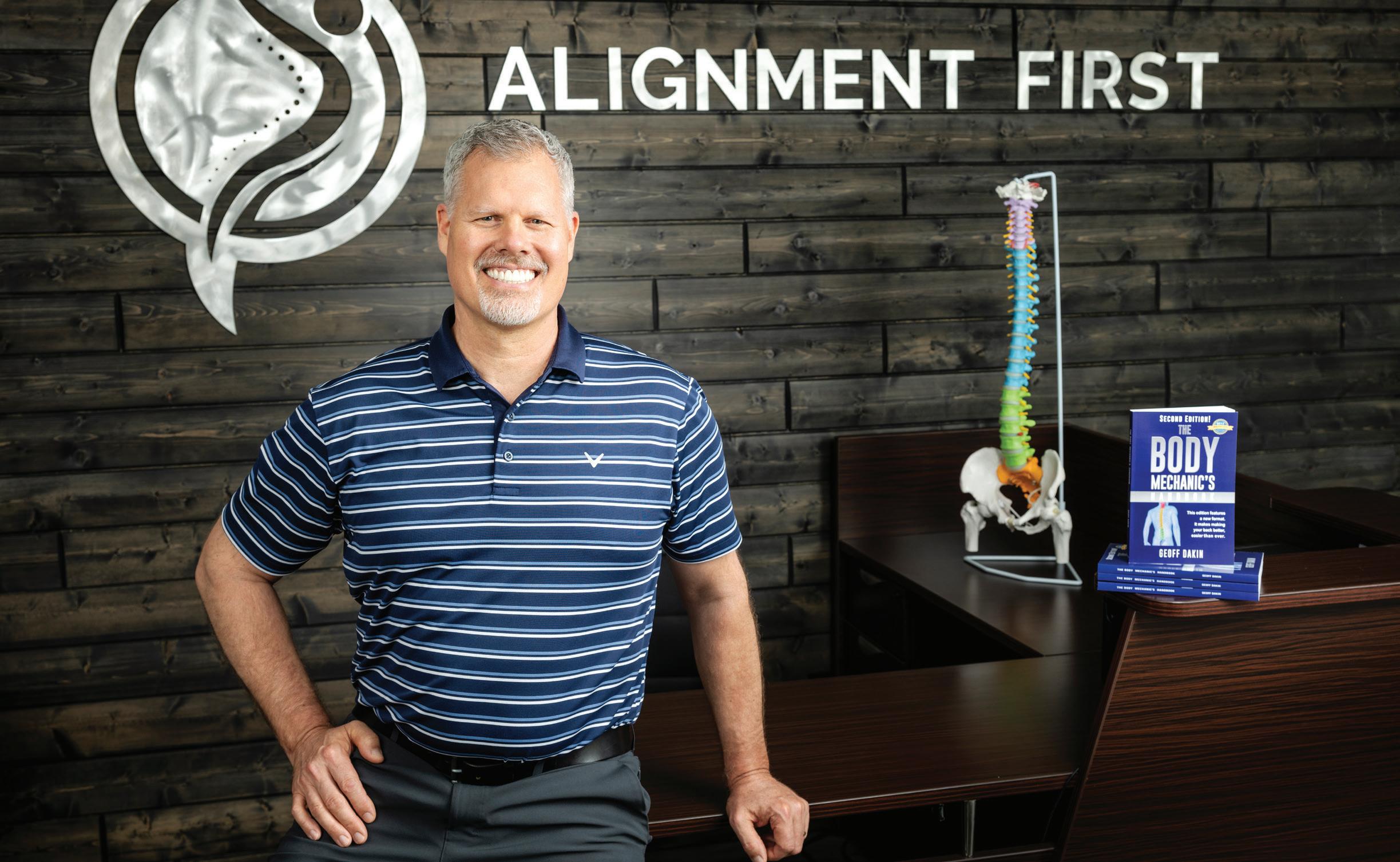
Alignment First, a successful backpain clinic could trace its roots to Geoff Dakin’s extensive study of acute injury and chronic pain, his athletic training - including time working for the Vancouver Canucks, but Dakin believes helping his father was the real stimulus for the Alignment First Protocol (AFP).
“My dad was very athletic, but he struggled with chronic, recurring low-back pain most of his adult life,” says Dakin, a Registered Massage Therapist and owner of Alignment First. “The therapy techniques, and the remedial exercises I had been taught in school, weren’t helping him. It wasn’t until I started experimenting with corrective exercise systems that I started to see lasting change.
The Alignment First Protocol treats the root of pain not the symptoms. It is designed to reduce nervous system load and mechanical irritation with a series of ten specific corrective exercise progressions.
When a patient begins at Alignment First, the clinic uses 3D Motion Capture Technology to give an overview of the positional relationships between the major joints.
“People are often startled to see how malaligned they are,” says Dakin. During the initial Discovery Session they determine if the client and the Alignment First Protocol are a good fit. “We can only do so much on the treatment table - to have lasting success we need to leverage the benefits of a consistent, evolving practice of personally prescribed corrective exercises. The posture reeducation process is transformative!”
Dakin says many patients fall in love with their daily Alignment First Protocol practice and see their exercises as medicine they can’t do without. “Throughout the journey, we figure out what the minimum corrective exercise dose is for each patient so that we maximize the odds of the training being done, while minimizing the odds of boredom and burnout.”
119-8989 Macleod Trail SW Calgary, AB T2H OM2
403-719-9192
alignmentfirstinc alignmentfirst alignmentfirst.ca
After almost 35 years in rehab care, Dakin has seen all types and styles of therapy. “Although nobody will dispute that the cause of pain often originates distant from where it is felt, it is rare to see care delivered in a way that respects that,” says Dakin.
Dakin places huge emphasis on helping his existing clients maintain their successlikening maintenance care to semi-annual dental checkups, and his purpose in life is to help his clients live pain free. “It’s amazingly fulfilling to help people reclaim their lives.”
This comes full circle to understanding the body, and how to work with it, not against it: “Imagine your body as a finely tuned orchestra. Each muscle, bone and nerve is an instrument. If one section is out of tune (like your pelvis being crooked or having a functional leg length difference), the entire symphony can sound off. But, if you fine-tune each instrument (through diligent daily practice of the AFP), the result is harmonious and pain-free movement.”
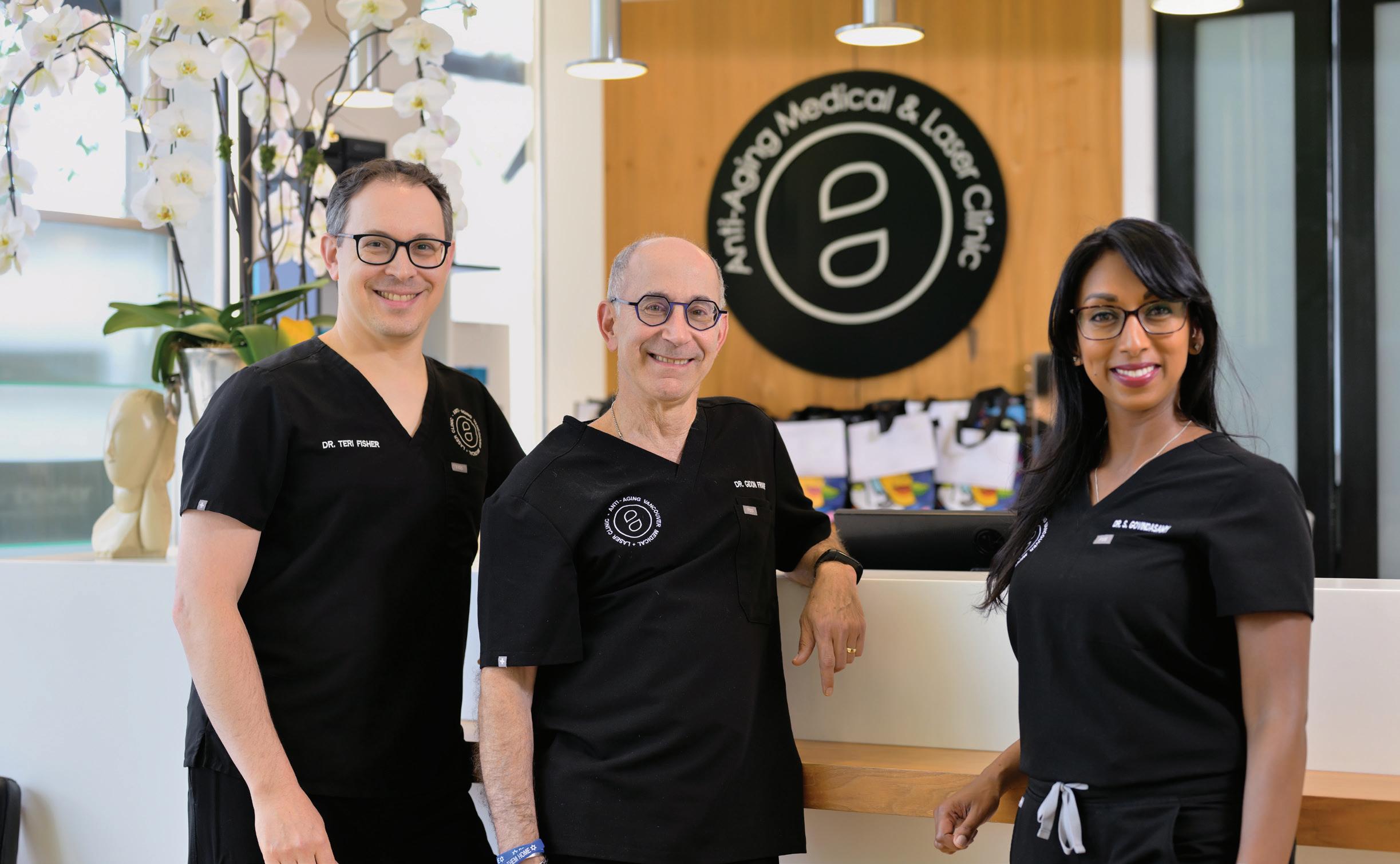
2200 West 4th Ave. Vancouver, BC V6K 1N8
604-261-9121
antiagingvan
AntiAgingVan www.antiagingvancouver.com
Located in the heart of Vancouver, the Anti-Aging Medical & Laser Clinic stands as a beacon of innovation in health and aesthetic medicine. Under the stewardship of Dr. Gidon Frame and his team, including Dr. Teri Fisher and Dr. Sarina Govindasamy, the clinic has expanded its repertoire of services to not only include traditional cosmetic enhancements such as fillers and Botox but also groundbreaking treatments in sexual health and comprehensive pain management.
At the Anti-Aging Medical & Laser Clinic, the approach to wellness is holistic, blending aesthetic improvements with medical interventions to enhance overall quality of life.
“Our goal is to provide a spectrum of integrated services that focus on natural, beautiful results,” says Dr. Gidon Frame, who has been at the forefront of cosmetic medicine in Vancouver.
The clinic’s dynamic team is adept at addressing skin restoration, cosmetic restoration for both facial and buttock
enhancements, and now, an exciting range of treatments geared towards sexual health.
“The introduction of sexual wellness services has opened new avenues for us to support our patients’ well-being,” Dr. Frame adds.
New to the clinic’s offerings are specialized treatments targeting erectile dysfunction (ED) and penile enlargement, as well as comprehensive solutions for female sexual wellness. These services use a combination of fillers, threads, and laser technologies to achieve desired outcomes. “We’re seeing tremendous interest in these new services. It’s about enhancing confidence and improving intimate health, which are key aspects of overall wellness,” explains Dr. Frame, whose expertise in aesthetic medicine enhances these delicate treatments.
Dr. Teri Fisher, a sports medicine specialist at the clinic, offers an integrated approach to pain management. “My focus is on alleviating discomfort and enhancing mobility through targeted injections of hyaluronic acid, platelet-
rich plasma, steroids, and prolotherapy, which are guided by the latest ultrasound technology,” he states. This method allows for precise treatments, improving outcomes for patients suffering from joint and muscle pain.
Dr. Sarina Govindasamy brings her expertise in general practice dermatology to the team. “By integrating dermatological services, we can address a wide range of skin concerns more comprehensively, ensuring all our patients receive the best possible care in one convenient location,” Dr. Sarina adds.
With a team that continues to push the boundaries of both cosmetic and medical treatments, they offer a unique blend of services that cater to the diverse needs of their clientele. “Each day, we strive to ensure that our patients not only look their best but feel their best,” concludes Dr. Frame. This dual approach not only enhances physical appearance but also boosts overall health and vitality, marking a new chapter in holistic wellness in Vancouver.
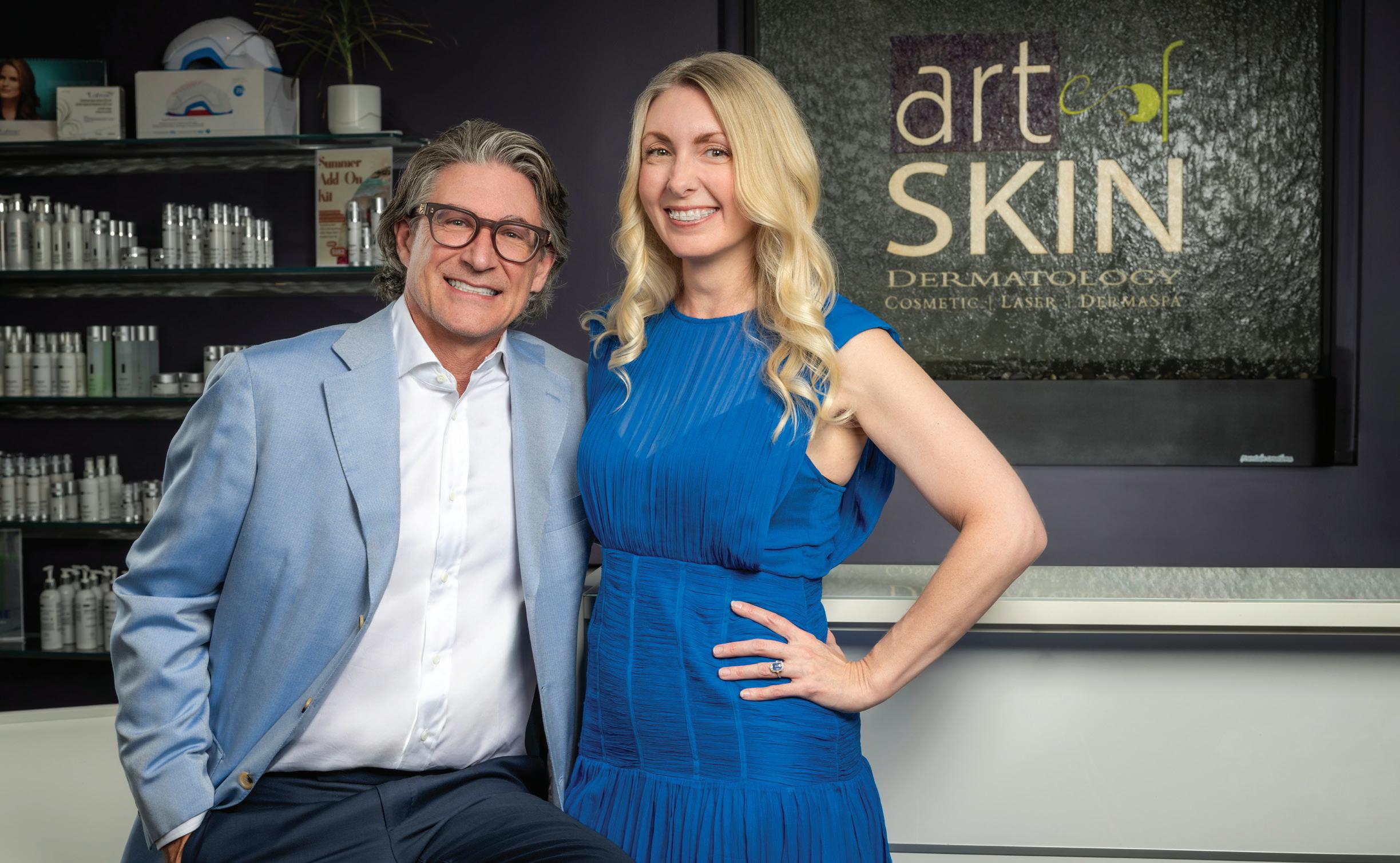
professional, comprehensive and highly individualized dermatologic
Art of SKIN Dermatology, nestled in the beautiful Rocky Mountains of Canmore, Alberta, sees more than 10,000 patients each year. Patients travel from British Columbia, Alberta and beyond for the renowned treatments from Dr. Paul Lubitz, a leader in the field of dermatology, along with his specialized team.
The clinic offers both medical and cosmetic treatments, under the care of Dr.Lubitz, one of Alberta’s most esteemed dermatologists who has been practicing for over 25 years, regularly attending and presenting at national and global meetings to stay on the cutting edge of developments in the world of dermatology and aesthetic medicine.
“Art of SKIN Dermatology addresses all the needs of our patients including medical dermatology, surgery, as well as their cosmetic concerns, women’s health concerns and vein disease. Our patients receive a wholistic, experienced and complete approach to all
their skin health needs,” says Dr. Lubitz.
For medical skincare issues, Art of SKIN Dermatology offers year-round skin exams to diagnose and treat skin cancer and pre-cancers, patient education on dry skin condition, sun awareness, medical treatments and much more. Dr. Lubitz developed the FIFTH ELEMENT skincare product line specifically for the harsh Canadian environment.
The clinic offers a full range of cosmetic procedures, including laser treatments, fillers, microneedling, non-surgical fat reduction, liposuction and fat transfer as well as an extensive range of professional skin care products. Dr. Lubitz has recently partnered with INMODE, the aesthetic company at the forefront of esthetic technology development who has brought multiple state-of-the-art technologies to Art of SKIN Dermatology that are non-invasive, safe, effective and with little to no down time. Walking into the clinic, with the majestic
#204, 1240 Railway Ave. Canmore, AB T1W 1P4
403-675-0018
artofskin
DoctorLubitz Shop.artofskin.ca artofskin.ca
views of the mountains, is often the first moment of transformation for patients. The clinic setting and flow of patient rooms has been strategically and carefully designed so that patients feel comfortable, and well taken care of. You are seen quickly and efficiently, and procedure rooms and operating rooms boast wide windows, and are bathed in natural light. “There is a saying in Canmore that there are no bad views,” adds Dr. Lubitz, with a smile. “At Art of SKIN Dermatology we have mountains all around us.”
And patients’ lives are forever changed: Dr Lubitz has successfully diagnosed and removed dangerous skin cancer, skin ulcers, diagnosed lymphoma, treated debilitating acne, and helped clients smile and thrive again. Why trust your skin care health to anyone other than a Board-Certified Dermatologist with over 25 years of experience? Come to Canmore to receive the skill, experience and expertise you deserve, while taking in the splendor of the Rocky Mountains.
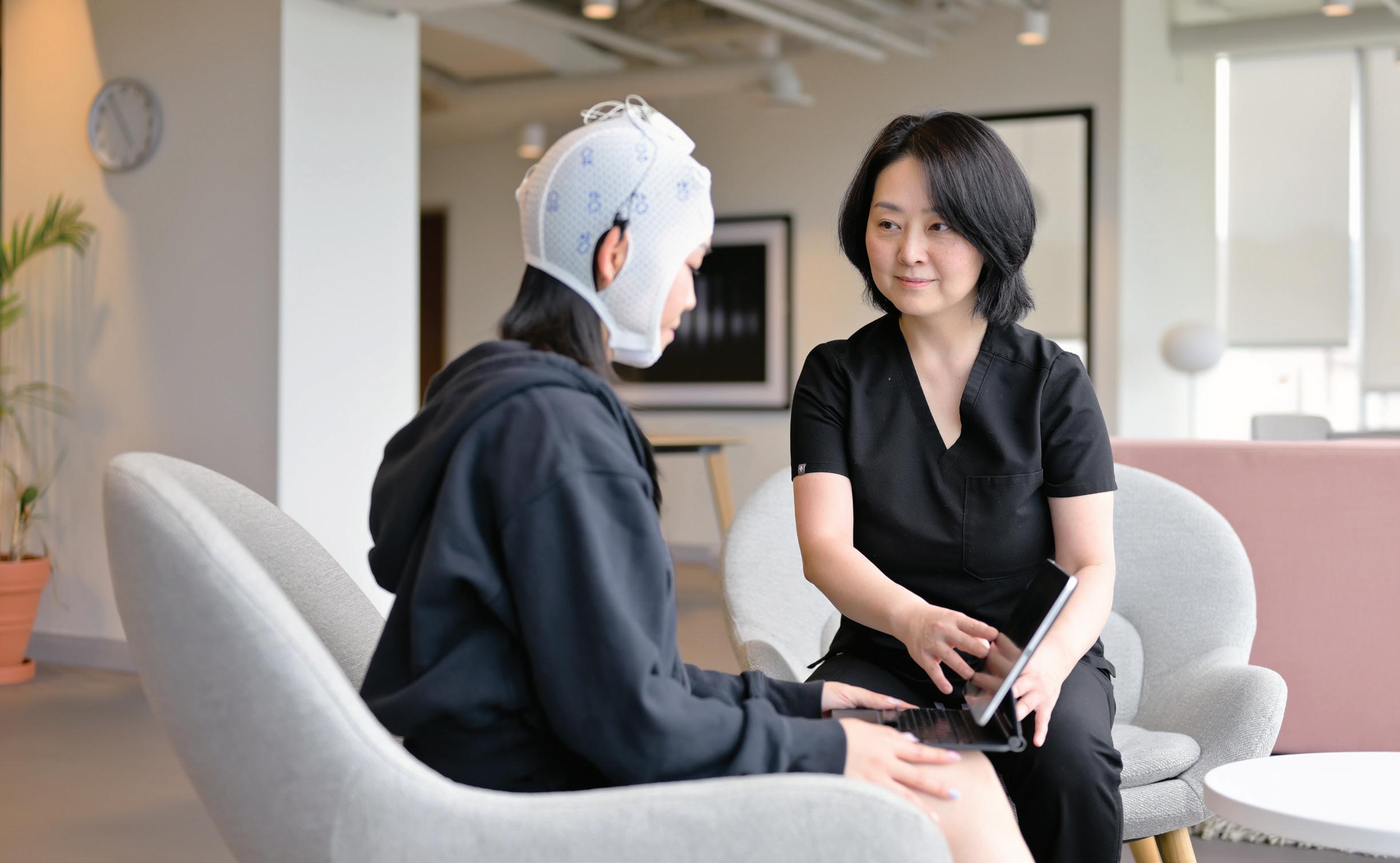
Langley Office 240, 8661 201 St., Langley, Twp, BC V2Y 0G9
Vancouver Office 615-525 West 8th Ave. Vancouver, BC V5Z 1C6
604-716-4530
breakthroughadhd BreakthroughADHDcenter www.breakthroughadhd.com
Imagine you are the parent of a child with ADHD. You have spent thousands of dollars and countless hours trying out different medications, diets, therapies and your child is still suffering. Years into the journey with doctors, counsellors, nutritionists - no one can tell you what’s behind your child’s symptoms, and how to tailor the treatment for your child.
This is the passionate work Dr. Sammy Oh and her team at Breakthrough ADHD Centre, in Vancouver, British Columbia, do daily. The Breakthrough ADHD Technique uses evidence-based assessments to identify and address the root causes behind children’s symptoms and helps families reclaim their lives, through personalised intervention plans with quantifiable goals based on these assessments.
“ADHD symptoms are brain-based. They
Sammy Oh, Ph.D., DNM, CBS.
are different from feelings or moods,” explains Dr. Sammy Oh, Doctor of Natural Medicine and Biofeedback Specialist who leads the team of experts. “We get to the ‘hardware’ aspects of ADHD - the neurophysiological or biological aspects of the symptoms.”
Children with ADHD will often suffer from secondary wounds - such as learned helplessness. “They expect mistakes, failures and overall negative feedback from life,” says Dr. Oh. “Then, avoidance and procrastination start kicking in. To empower children, it is really important to address the hardwarewith ADHD neurocognitive intervention.”
The Breakthrough Technique is different from the traditional, one-size fits all approach that doesn’t get to the heart of a child’s symptoms. It includes a brain-function optimization plan with quantifiable goals tailored to cognitive, physical, emotional and
behavioural needs, using ADHD psychometrics screening tests, and high-tech, cutting edge assessments to identify the root causes of ADHD before developing a plan of action.
This intervention starts with a multifaceted method often used by NASA and professional athletes for peak performance. The method includes natural medicine, neurovisual cognitive training, executive function training, functional nutrition, biofeedback and neurofeedback and is based on 35 years of research and nearly two decades of practice.The Breakthrough ADHD Centre helps clients with ADHD quickly improve their behaviours, sleep, focus and moodssometimes within days.
“Every parent wants to feel confident that their children are receiving effective interventions, and that they can focus on tasks, soar academically, get along well with others, and feel more content and calm,” says Dr. Oh.

Luminescence is a healing space like no other, with deep roots in friendship and the power of community to support your healing journey.
The space opened in Calgary in 2023, at a time when people were searching for ways to heal and reconnect with themselves.
“We all found our vices when we were forced in our houses,” says co-founder Cindy Drummond. “We indulged in too much TV, fear, alcohol, chips, and now it’s time to make our health a priority.”
Drummond had led women’s only healing retreats prior to the pandemic and had a profound ability to gather people together in healing spaces; her lifelong friend and Luminescence co-founder Jacqueline had spent years with chronic health issues, and was introduced to the Energy Enhancement EESystem. They knew that they had to start a wellness centre that encapsulated many
forms of healing but centred around this remarkable technology that uses Scalar waves to heal at the cellular level.
The EESystem generates multiple bio-active life-enhancing energy fields, including Scalar waves which allow cell regeneration, improve immune function, provide relief from pain, detoxify the body, elevate moods and assist in balancing the brain hemispheres to increase energy levels. Sessions can last anywhere from two hours to an overnight stay; clients have come in with chronic pain, which often decreases after a few sessions.
“Unhealthy cells are prone to disease,” explains Drummond. “The technology we use creates a field where the body is able to heal itself. We believe in the power of our energetic beings—if our hearts stop, we use a defibrillator; if our phones die, we recharge them. Similarly, our bodies, with
LUMINESCENCE HEALING INC.
#20 – 8180 Macleod Trail S. Calgary, AB T2G 5E8
403-807 LOVE (5683)
LUMINESCENCE_HEALING Luminescence Healing Inc. luminescencehealing.com
their cellular energy, can heal themselves.”
Luminescence is committed to making it affordable and accessible for healing, including monthly full-moon sound bath events and gratitude days where participants can pay by donation, as well as healing sound therapy, meditation and more.
Drummond shares her favourite client testimonial: “A man brought his adult son with Down Syndrome to Luminescence. The son was deeply grieving the sudden loss of his mother. After his session, he was dancing joyfully in our Vortex room—a sight his father hadn’t seen since his mother’s passing. This moment encapsulates the essence of what Luminescence is about: the fusion of Eastern and Western healing practices, creating a space where acute medicine meets profound community support.”
Join us at Luminescence, where healing is not just a goal but a shared journey.
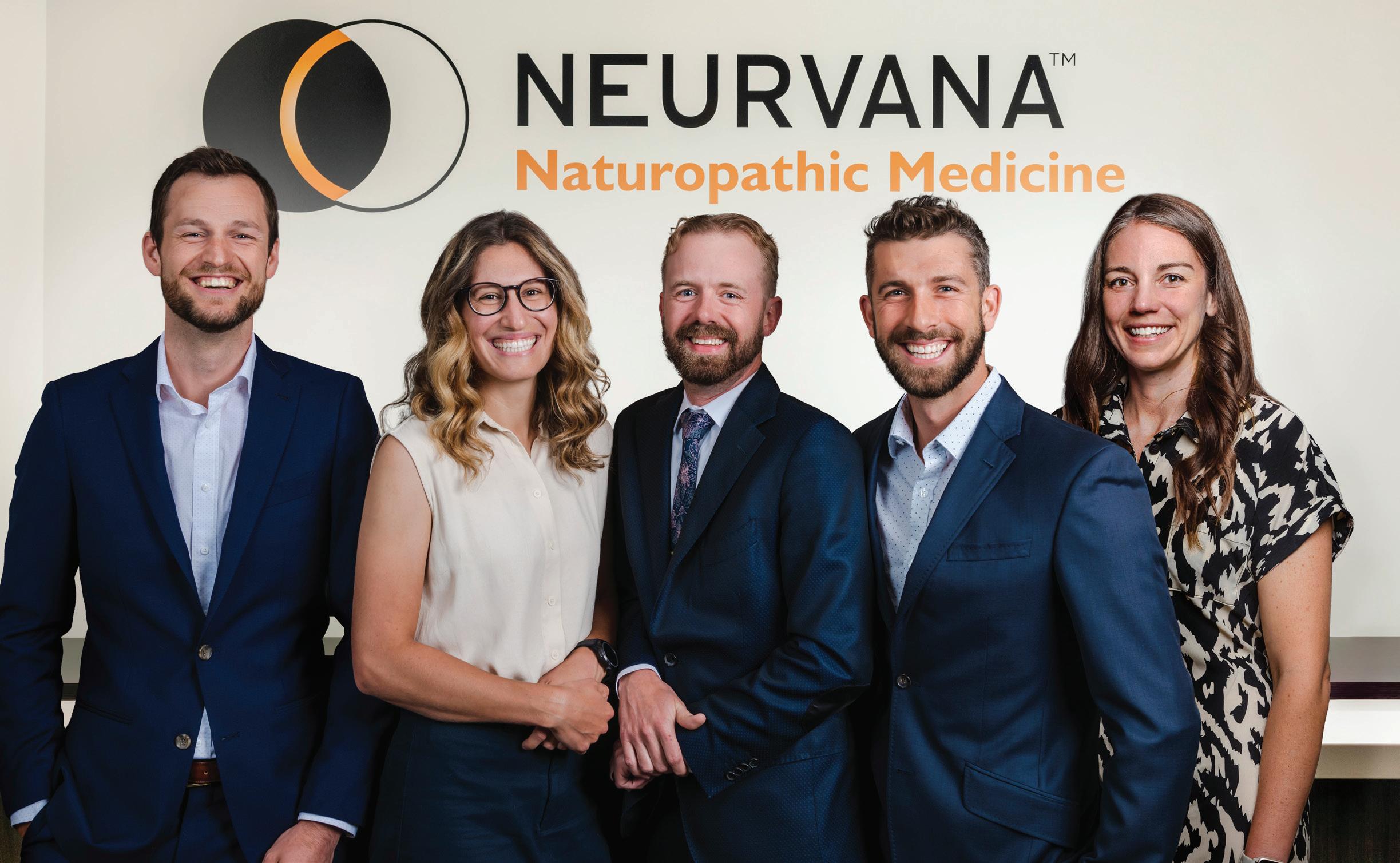
Healing cannot occur without awareness. This is a guiding principle for the team at Neurvana Naturopathic Medicine, an integrative medical clinic that helps people with chronic health conditions find lasting ways to have less pain, more freedom and reclaim their quality of life using integrative evidence-based solutions.
“We believe that disease and disorder are ultimately driven by a misalignment with our fundamental nature,” Dr. Amy Morrison, Naturopath and part of the team that includes naturopathic doctors, functional medical specialists and neurofeedback technicians.
“Naturopathic medicine is medicine that treats the pathologies that arise from this misalignment in the environmental, physical, emotional, intellectual, or spiritual level.”
In the last 10 years, improved access to more informative testing has transformed naturopathic medicine. Patients begin with
a discovery call to understand the presenting concerns; the initial intake is a 90-minute deep dive into health history, current symptoms and the best route forward with comprehensive testing to determine the specific treatment protocols which can include diet and lifestyle modifications, supplements, neurofeedback, IV therapy, and laser therapy.
“Neurofeedback is a technique that allows us to retrain disharmonic brainwave patterns that may be driving stress in the nervous system,” explains Dr. Morrison. “It trains the subconscious mind to shift its automatic rhythm back to a more harmonious state. This technique has shown huge positive impacts on many conditions, including anxiety, depression, ADHD, ODD, autism, chronic pain, fibromyalgia, post-concussion disorder and PTSD.”
The team also uses Quantitative EEG’s with patients—a functional neuroanalysis that
#330, 2020 4 St SW Calgary, AB T2S 1W3 587-997-4649
neurvanahealth NeurvanaHealth www.neurvanahealth.com
assesses brainwave activity and communication patterns within the brain. “Stress is the main cause of disease and disorder in our bodies,” Dr. Morrison adds. “The Quantitative EEG provides a brain map for us to distinguish the types of stress patients are dealing with— environmental, physical, emotional, metabolic, cognitive—so we can properly triage their care back to their own innate healing capacity.”
What drives the team at Neurvana Naturopathic Medicine is the fundamental concept that the body, mind and spirit all have built-in healing mechanisms, and evidence and results-based medicine and integrative technologies can better diagnose and address the issues, not simply cover up the symptoms. Neurvana Naturopathic Medicine helps clients look at their reality differently and realign with their true nature on every level, which can lead to a radical and robust healing response.

A private Calgary-based specialist clinic offering unrushed knee care without a public wait time
With skyrocketing wait times nationwide and an aging population, knee issues are now a greater societal burden than ever.
“Most people suffering from knee pain and dysfunction do not have to go under the knife to solve their issues,” says clinical director, Dr. Dale Macdonald. Bridging the gap between public and private health care, there are many options beyond surgery at The Knee Clinic. “We ascribe to three pillars in our approach to care here,” he explains.
The first pillar is to treat the actual problem. In 2024 it is insufficient and arguably irresponsible to guess or approximate when specialized clinical skill and access to advanced imaging modalities can allow a precise diagnosis.
Once a specific diagnosis is established and precise care has begun, the second pillar is to strengthen the area. The knee is a unique joint with competing responsibilities. It must be flexible and mobile, yet strong and stable, all at the same time. The physiotherapists at The Knee Clinic focus precisely on creating a more stable environment for the knee, while avoiding further injury.
The third and final pillar is to avoid or modify offending activities. This involves continual patient education throughout the clinical journey and isn’t limited to just the knee. It can include foot and ankle mechanics, lateral pelvic strength, appropriate footwear and dietary and lifestyle choices.
THE KNEE CLINIC
Suite 535, 10333 Southport Rd. SW Calgary, AB T2W 3X6
403-457-5633
kneeclinicyyc
kneeclinicyyc www.kneeclinic.ca
“With everything available in-house, from imaging to injections, bracing to surgical consultations, we make family doctors look good in the eyes of the patient by giving them access to unrushed specialist care with a minimal wait time.” Referral is not required, and a patient who reaches out can typically be seen in days rather than months and quickly begin to move confidently forward after a thorough assessment, diagnosis and development of a plan of management.
“Only a small percentage of bad knees need surgery, but in those cases, we can make arrangements either publicly or privately,” Macdonald says. ‘Stop Waiting; Stop Guessing’ concisely encapsulates the speed and peace of mind this unique clinic provides.
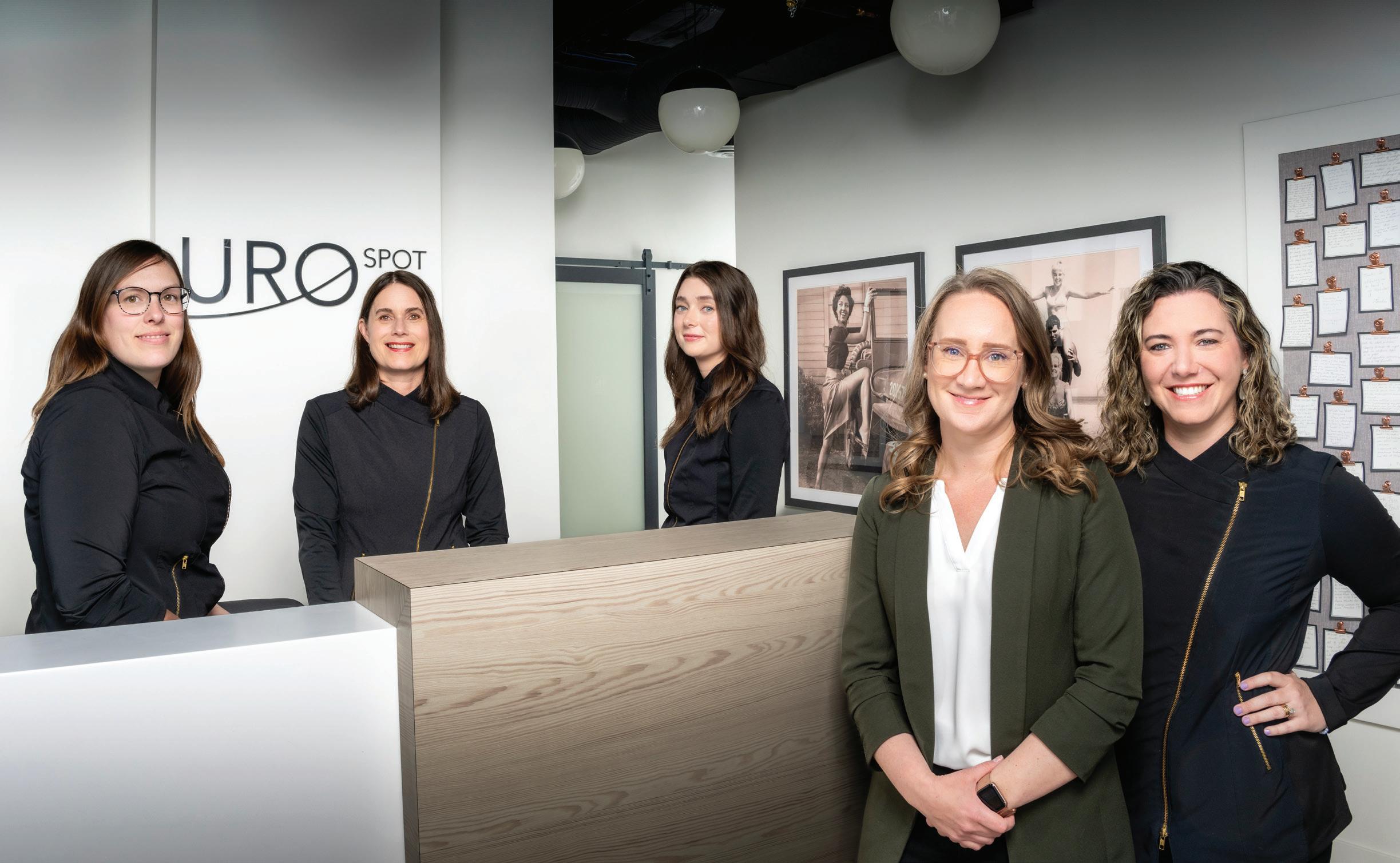
UROSPOT
Unit 120, 4620 Bow Trail SW Calgary, AB T3C 2G6
403-776-2572
theurospot theurospot urospot.com
Providing freedom and changing lives by building strong pelvic floors. This is the guiding mission of UROSPOT, a private clinic with locations in Ontario and Alberta, providing a comprehensive approach to restoring pelvic health for their clients.
The team at UROSPOT focus on providing world class education and health coaching to deliver optimal results, helping clients understand what is happening in their bodies, how nutrition, hydration, stress and exercise can play a part in their symptoms, and the small changes they can make to see better results, in addition to utilizing the revolutionary modern technology, lovingly called the “Kegel Throne” to restore the pelvic floor.
With pelvic floor issues, women are commonly affected in five ways: bladder leaks, urgency and frequency of urination, night waking, pelvic organ prolapse and sexual dysfunction. Men also are affected by most of these issues.
The UROSPOT “Restore Your Pelvic Floor” program begins with a complimentary consultation with a registered nurse, and then individualized treatment sessions using the Kegel Throne technology, and a comprehensive education program that empower clients. In addition, the team of modern and caring pelvic floor physiotherapists are available either in-person or virtually to help clients take control of their pelvic floor.
This unique technology is “like outsourcing your Kegels,” says Carrie Williams, Manager of Client Care. The treatment employs highintensity focused electromagnetic technology and electrostimulation of the pelvic floor muscles which has been proven to improve pelvic floor integrity.
During a 28-minute session, energy from the chair stimulates the pelvic floor muscles with the equivalent of doing 11,000 Kegels. A typical treatment plan is usually six sessions, where clients experience deep pelvic floor
transformation, which is pain-free and effortless. “We have had clients describe the treatment as life-changing, given freedom they didn’t have before. Often, they don’t realize how much of an impact urinary frequency, incontinence or the discomfort of prolapse is having on their lives until it is taken away. It is so rewarding when a client comes in beaming, sharing their positive results.”
The treatment is non-invasive; clients remain fully clothed, are positioned on the Kegel Throne correctly and a wave of electromagnetic energy is directed at their pelvic floor muscles. All of this is done as the client reads a book or watches streaming TV. UROSPOT’s individualized and comprehensive approach makes them the leaders in pelvic health. The Kegel Throne is approved by Health Canada, and the clinic has helped help more clients achieve lasting results on this technology than any other health care provider in Canada.
UROSPOT is proud to be a champion of pelvic floor restoration.

Healthy teeth are tied to a healthy life. Vincelli Orthodontics, with locations in Calgary and Canmore, is committed to providing the highest standard of care for patients, who range in age from 3 to 83!
“My main goal as an orthodontist is to strive for proper function of the teeth and the jaws. Once they are functioning properly, they also happen to look aesthetically pleasing,” says Dr. Robert Vincelli.
“For our younger patients, we focus on helping jaws grow in order to avoid more complicated and invasive procedures as they get older. In teens, we encourage jaw growth and getting teeth aligned and fitted properly. With our adult patients, we have aesthetic options for straightening teeth, such as clear, removable aligners and we work closely with dentists for long term dental health.”
Vincelli Orthodontists work with the gamut
of dental issues - from crossbites to overbites, crowding, shifts in the teeth which can lead to a whole host of health issues, including gum recession, dental wear, bone loss around the teeth and jaw pain. If ignored, these can lead to the eventual loss of teeth. “There is also emerging research showing the link between small jaws and sleep apnea. With children, we are able to catch these problems early, and as such have the opportunity to enhance growth of the jaw to prevent more complicated and detrimental health problems in the future,” says Dr. Vincelli.
Vincelli Orthodontics also diagnose and treat TMJ Disorder. The TMJ (temporomandibular joint) is a hinge connecting the jaw to the temporal bones of the skull, allowing the jaw to move up and down and side to side, facilitating speech and eating. When the jaw bones are balanced and healthy they support the proper movement
Aspen Landing
Suite 215, 333 Aspen Glen Landing SW Calgary, AB T3H 0N6
Market Mall
Suite 406, 4935 40 Ave. NW Calgary, AB T3A 2N1
Canmore
Suite 125, 70 Benchlands Trail Canmore, AB T1W 3G9
587-355-8772
vincelliortho
avsuperheroes www.vincelliortho.ca
- if the teeth and/or jaw become misaligned, TMJ Disorder can become a problem, causing jaw pain, ringing in years, and headachessignificantly impacting quality of life.
Vincelli Orthodontics can catch this early in children, teens and adults and provide exceptional treatment - which could involve splints, surgery or more. “This is a complicated disorder that involves pain and dysfunction of the muscles that control the lower jaw. With our treatment, we are able to relieve symptoms as well as properly diagnose issue with how the teeth are fitting,” says Dr. Vincelli.
Vincelli Orthodontics also offers a digital scanner, where patients can preview their virtual results before starting treatment. With three locations to serve patients, Vincelli Orthodontics is proud to help patients improve their dental health, and keep their smiles healthy.
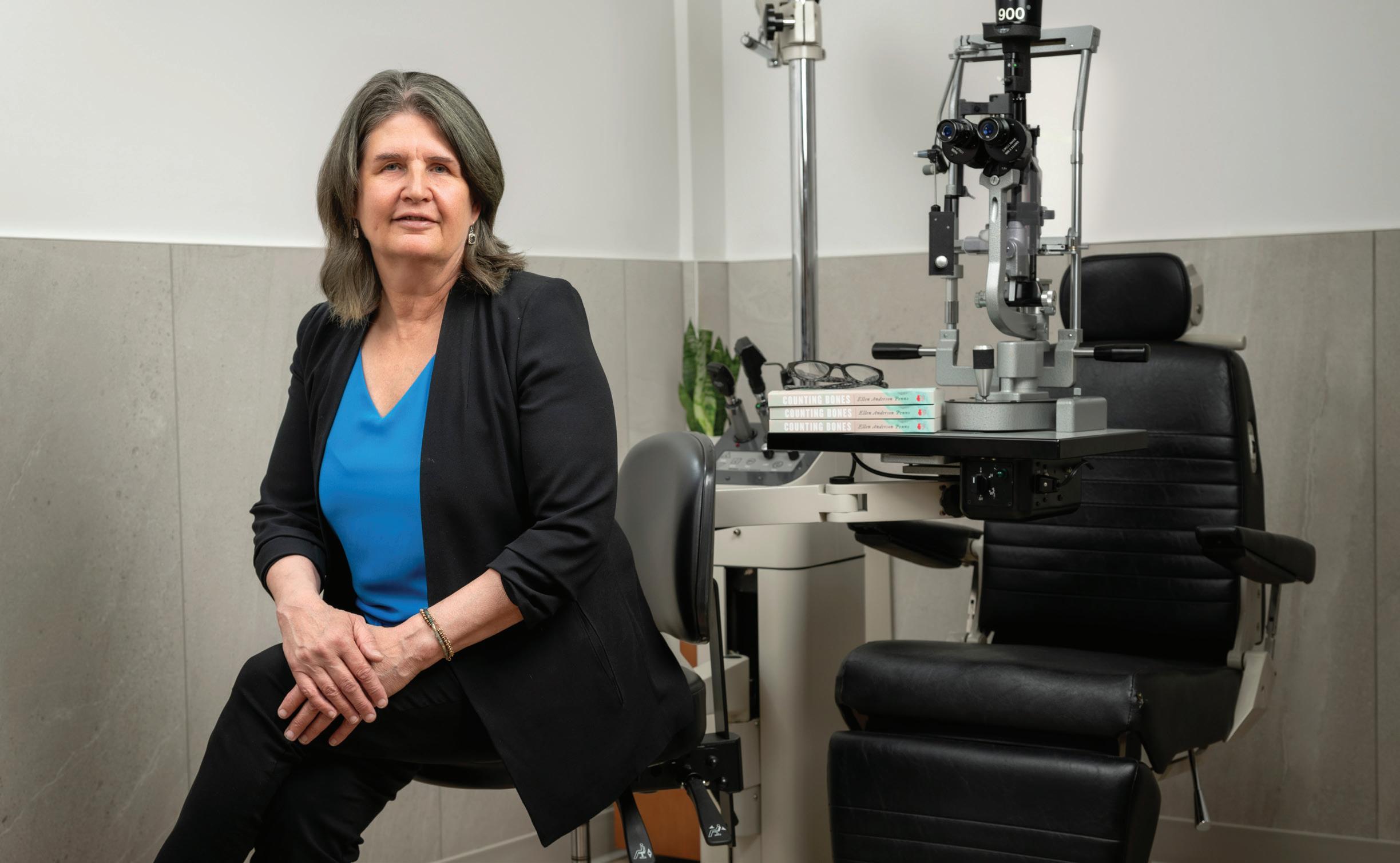
Focusing a lens on your story
Every patient at Western Laser Eye Associates has a health care story behind their visit and Dr. Ellen Anderson Penno and her team make sure patients are heard and the best solutions are made available — all in one clinic.
A Mayo Clinic trained MD and ophthalmologist, Dr. Anderson Penno has performed thousands of laser eye surgeries in the past 28 years. She’s also an author with four books on eye health and now, a new memoir. Counting Bones: Anatomy of Love Lost and Found is a touching story of grief and recovery for a woman who lost her first love in a tragic mountaineering accident just weeks before she started med school. Writing the book and the training it took to learn that skill opened Dr. Anderson Penno’s eyes to the world of narrative medicine.
“The concept of narrative medicine is to harness the power of listening carefully to patient stories to improve the quality of health care,” she says. “We try to connect with people about other things that may be going on in their lives that are affecting their health.”
Sometimes the answers to eye health issues lie in laser surgery, sometimes a pair of glasses is required. Total eye health is always considered to determine if other issues, such as diabetes, macular degeneration, glaucoma, allergies or the dry Alberta climate are having an impact on clear vision and overall eye health. Whatever the concern, there’s an all-star lineup ready to act. The Western Laser Eye team includes:
• Dr. Ugo Dodd: Ophthalmologist and surgeon
• Dr. Regan Nowlan: Head of optometry — diagnosis of ocular disease and dry eye.
6427 Bowness Rd. NW Calgary, AB T3B 0E6
Laser Vision Correction
403-547-9775
Western Laser Eye Associates www.westernlasereye.com
• Dr. Nana Boadi: Optometrist — eye muscle disorders, including pediatrics.
• Dr. Vaneet Kaloti: Optometrist — contact lens solutions for athletes.
A rising trend in eye health is the number of near-sighted young people coming to the clinic for care. Rising screen time on phones, computers and game consoles combines with less exposure to natural light and it’s having an impact on school age children’s eye health.
“We recommend spending at least two hours per day outdoors in natural light,” says Dr. Anderson Penno. “There is a catchy 20-2020 rule that says every 20 minutes, look away 20 feet from your screen and blink 20 times.”
And if eye health is your concern, you can feel confident in telling your story to the doctors at Western Laser Eye.
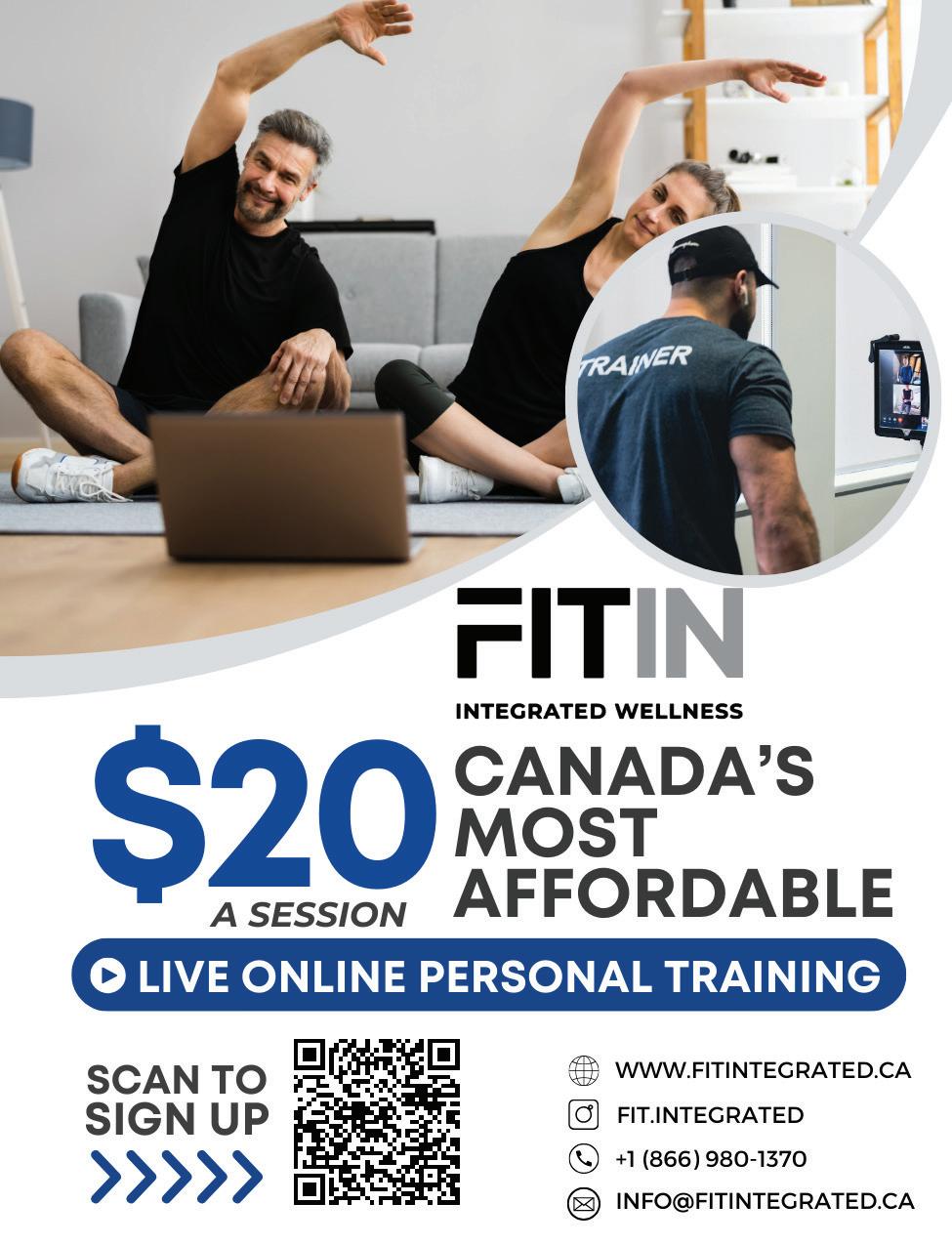
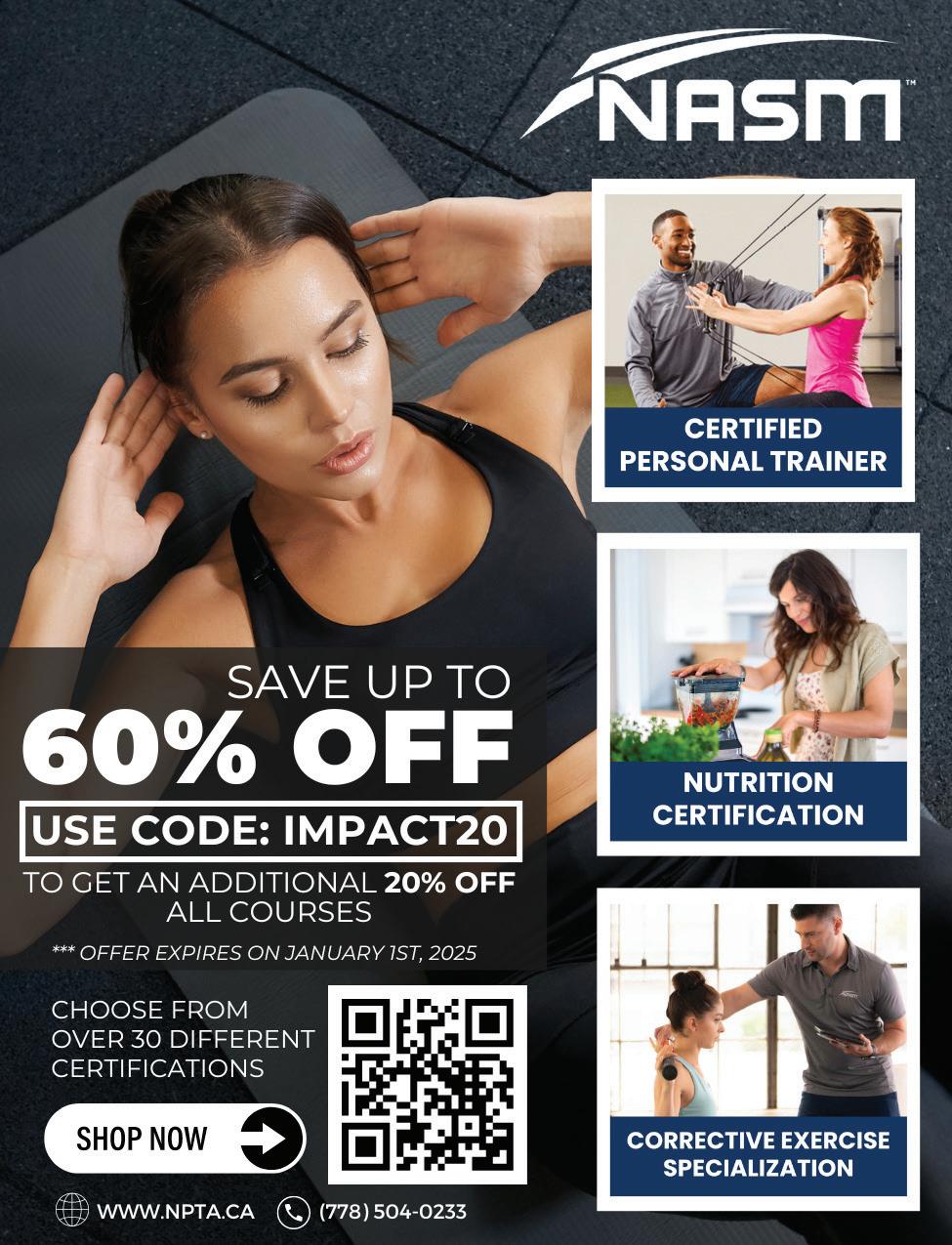

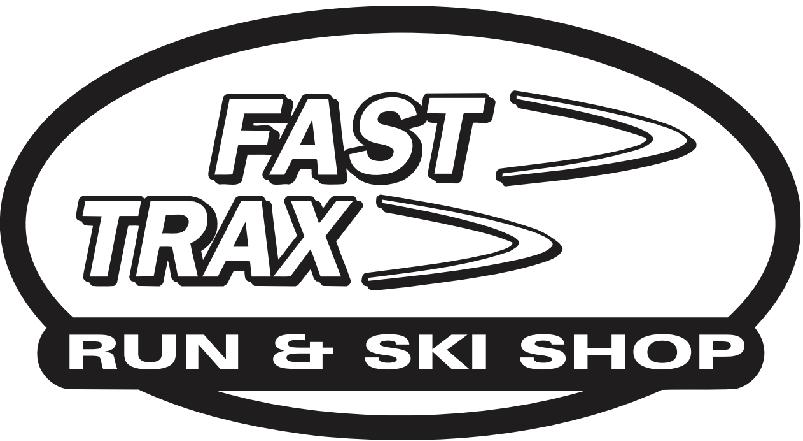
Uneven terrain mixed with unpredictable conditions can lead to injury on your hikes. But with these tips, falls can be avoided.
BY TERRY KANE
Based in Calgary, AB, one of Canada’s most experienced physiotherapists with over 35 years in orthopaedics and sports injuries. He has served as a physiotherapist for the Canadian Olympic Hockey Team, the Calgary Flames, and worked with over 500 Olympic, professional, and national level athletes.
TERRYKANE
Hiking is one of the most popular summer activities in Canada, offering multiple physical and mental health benefits. But despite the benefits of hiking, it is not without its risks: 50 per cent of all fatal and non-fatal hiking accidents are due to falls.
Whether at home or in the wilderness, a fall is commonly due to the inability to regain one’s balance fast enough to avoid hitting the floor or ground. Unfortunately, falls that occur on hiking trails not only impact the injured hiker, but also the remainder of the hiking party as they provide emergency medical care and/or transport the injured hiker to safety. In many cases, emergency services are unable to arrive in time to save the hiker.
As experienced hikers know well, ignoring the power and unpredictability of Mother Nature can turn the easiest hike into a disaster. The good news is falls are preventable. The key to fall prevention is the ability to anticipate situations where a hiker may not be able to regain his or her balance fast enough to avoid impact with a boulder or a tree. Here, we’ll explore fall and injury prevention strategies for hikers.
Prepare for the inevitable hunger, thirst, and potential fatigue that may arise during your hike. Pack high-calorie snacks to maintain energy levels and carry an ample supply of fluids to stay hydrated throughout the journey. Take regular breaks to rest and sit down, allowing yourself to recuperate and relieve strain on your feet.

50 per cent of all fatal and non-fatal hiking accidents are due to falls.
Pack a comprehensive mountaineering first-aid kit containing bandages, wound dressings, adhesive tape, antiseptic wipes, blister treatment, pain relievers, and any necessary personal medications. Additionally, include a reliable satellite phone or emergency communication device to ensure you can call for help if needed, even in areas with no cell coverage.
Be prepared for the possibility of slipping on wet rocks or tripping over tree roots while hiking. Wear sturdy hiking shoes or boots with good traction to minimize the risk of falls. Always keep your focus on the trail ahead, ensuring you have a clear view of each step. Keep both hands free to grab onto support if necessary, whether it's a rock, tree, or walking stick. Utilize a walking stick for added stability and assistance when navigating uneven terrain or steep inclines.
Prepare for potential knee pain and leg weakness, particularly during downhill sections of your hike. If you have a history of knee issues or instability, opt for trails with minimal elevation changes to reduce strain. It's essential to wait until any existing pain has subsided before heading out on another hike to prevent furthering your condition.
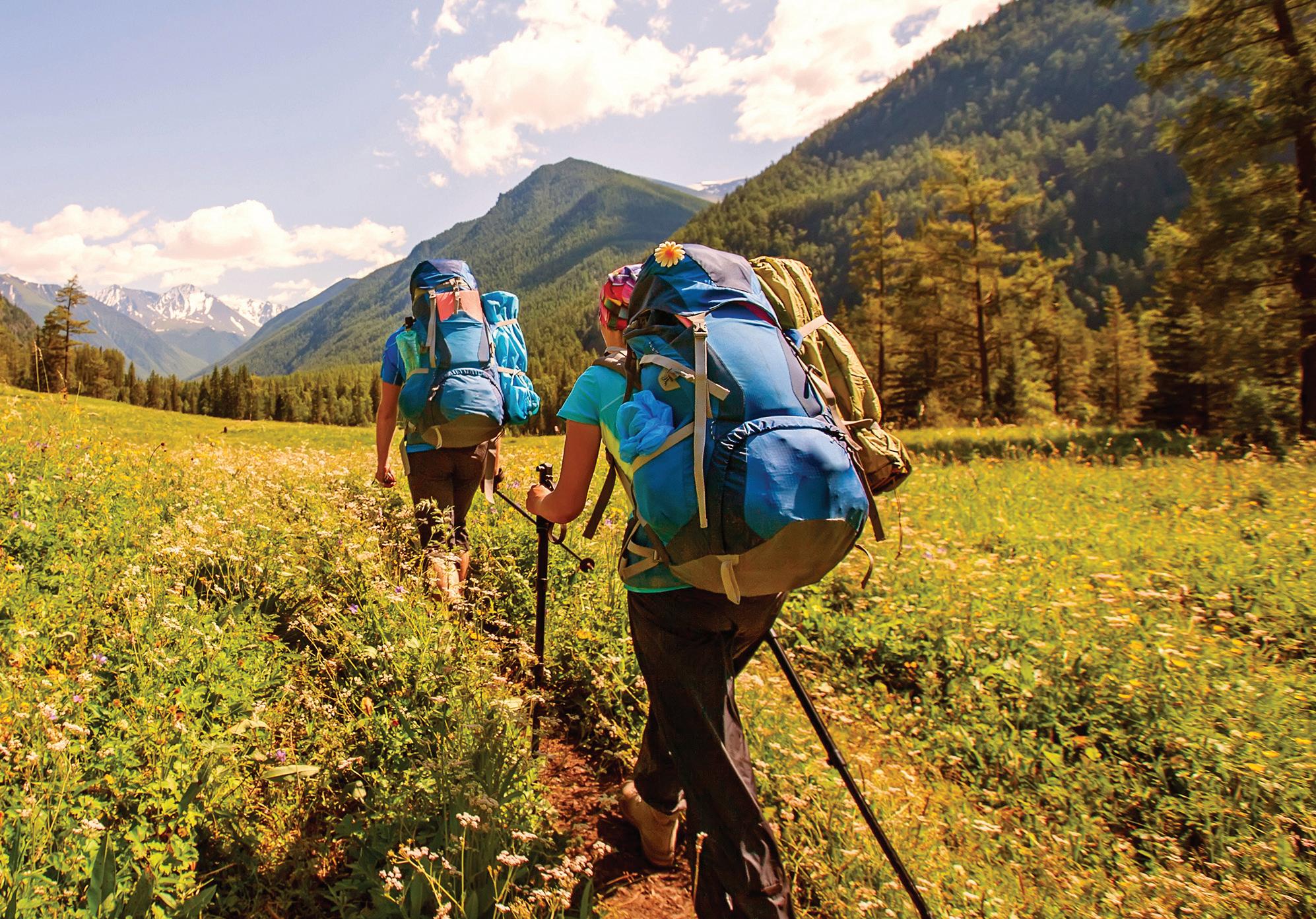
Recognize that every hiker is unique. It's important not to shame or criticize any hiker who may be slower, have a history of falls, or experience knee, hip, or balance issues. Instead, demonstrate compassion and support by walking alongside them and choosing a trail that is shorter with minimal elevation changes. This approach fosters inclusivity and ensures everyone can enjoy the hiking experience safely and comfortably.
Anticipate the possibility of losing daylight earlier than expected, which could lead to difficulties navigating in the dark or getting lost. Avoid lingering too long at the summit of your hike; allow yourself sufficient time to return to your starting point before sunset. Ensure you carry a headlamp in your pack along with spare batteries if your hike extends into the evening hours.
Beware running down a hiking trail. When running downhill we land each stride in a plantar flexed position, which is the most unstable position, and increases the risk of spraining your ankle and falling. If you trip on a root or rock, the likelihood is that you won't be able to protect your head in time and could suffer a serious head injury.
It's essential to anticipate sudden temperature fluctuations that can result in heat stroke or hypothermia, potentially affecting a hiker's ability to continue. Pack multiple layers of lightweight clothing to adjust to changing conditions, along with sun protection like hats and sunscreen, and carry an ample supply of non-alcoholic fluids to stay hydrated. Additionally, be vigilant about sudden and severe weather changes that may lead to slippery trails. Keep a constant watch on the horizon for signs of changing weather patterns and be ready to safely conclude the hike and return to your starting point before conditions worsen, ensuring everyone's safety.
It's common to experience heightened leg or joint discomfort for up to 72 hours following a hike. During this period, take caution when navigating stairs at home and use handrails for added support if necessary. If your pain persists or intensifies beyond this timeframe, consider seeking guidance from a physiotherapist or consulting your family physician for a thorough assessment and appropriate recommendations. This proactive approach can help address any lingering issues and support your recovery effectively.
Just because you’re experiencing low-back pain doesn’t necessarily mean it’s sciatica. Here’s how to tell the difference.
BY GEOFF DAKIN
A Calgary, AB-based Amazon bestselling author, former NHL therapist for the Vancouver Canucks, founder of Alignment First Inc., and developer of the Alignment First Protocol, a proprietary corrective exercise system. GEOFFDAKIN DAKIN_GEOFF
It’s not uncommon for patients experiencing low-back and leg pain to claim they’re dealing with sciatica. But there are some misconceptions about this affliction that deserve to be cleared up.
Sciatica is essentially pain that starts in the lower back or buttock area and radiates down the leg. The pain is usually behind the leg and can go all the way to the foot. Like most pain problems, there is a wide range of intensities, but people with sciatica often describe having intense pain, numbness, or a tingling sensation along the back of the leg.
The sciatic nerve is the largest peripheral nerve in the body. It exits the pelvis in the buttock area and runs down the back of the thigh. Just above the knee, it divides into several branches, with some extending down into the foot. Sciatica refers to a set of symptoms that arise when the nerve is irritated or compressed.
SYMPTOMS

When compressed or pinched, the sciatic nerve typically sends painful impulses down the back of the leg. Although it usually occurs on one side of the body, it is often quite painful and sometimes disabling. While some people experience one acute episode, more commonly others suffer from persistent or recurring attacks of sciatica.
There are several causes of sciatica, including pressure on one of the nerve roots which blend together to form the sciatic nerve. These nerve roots can be pressed on by a bulging or herniated disc or by unwanted bony formations at the spine. Another common cause is when the piriformis muscle in the buttock tightens excessively. This is called piriformis syndrome. The sciatic nerve and the piriformis muscle exit from the inside to the outside of the pelvis through the same notch, so they are very related. Approximately 10-20 percent of people have the sciatic nerve passing through—not beside—the piriformis. If you are one of the "lucky" ones to have this anatomical characteristic, you are certainly more prone to this version of sciatica than the average person. The discs in the spine act as shock absorbers and provide space for the nerves to exit the spine. However, the nerve roots exiting the spine can be pressed on by either bulging or herniated discs. If there is sufficient

compression of the disc, it is simply squeezed outward from between the vertebrae, like the gooey center of an OREO cookie. Sometimes the discs are damaged during acute injury or deteriorate due to decades of dysfunctional pressures. A herniation occurs when the outer wall of the disc gives way and allows the jelly-like interior material to leak out. This disc material can come in contact with a nerve root that is part of the source of the sciatic nerve and cause pain.
To diagnose sciatica, a primary care provider (medical doctor, chiropractor, or physical therapist) can obtain a medical history and perform a physical exam. A neurological assessment can be conducted to determine the location of the primary lesion. In some cases, a CT scan or MRI may be necessary to pinpoint the exact cause and source of the symptoms. For complex cases, a neurologist may perform a nerve conduction study to evaluate nerve function, assess the severity of nerve damage, and precisely identify and differentiate the location of the affected nerve.
Most physicians will initially recommend conservative treatments for sciatica. Although a few days of rest and prescription pain pills will sometimes decrease the acute nature of the symptoms, it almost never results in lasting relief. If conservative care doesn't
result in a solution, your physician is likely to want to talk about steroid injections, laser ablation, or surgery, all of which come with their own list of cautions, from being unreliable methods of sustainable relief to lacking enough thorough research.
One of the most effective, lasting, and non-invasive solutions for sciatica is posture re-education. By addressing the underlying biomechanical issues and misalignments, you can significantly reduce or even eliminate sciatic pain. Studies have shown that corrective exercises focusing on posture improvement lead to substantial pain relief and functional improvement in patients with sciatica. Another study highlighted the effectiveness of specific corrective exercises for postural improvement in alleviating sciatic symptoms.
Get an expert assessment to identify the source of your sciatica. Once you understand the nature of your sciatica, the path to a solution becomes more obvious. Nobody can solve a problem they don’t understand. Sciatica should not be a source of worry; it can be solved by releasing the dysfunctional stresses that are the root cause of the problem. Get smart, then get healthy.
This article has been edited for length and republished with permission from alignmentfirst.ca.
There’s no guidebook for hitting the road post-baby—but there are a series of milestones to hit and symptoms to be aware of to know if you’re ready to lace up once again
BY BRITTANY MORAN
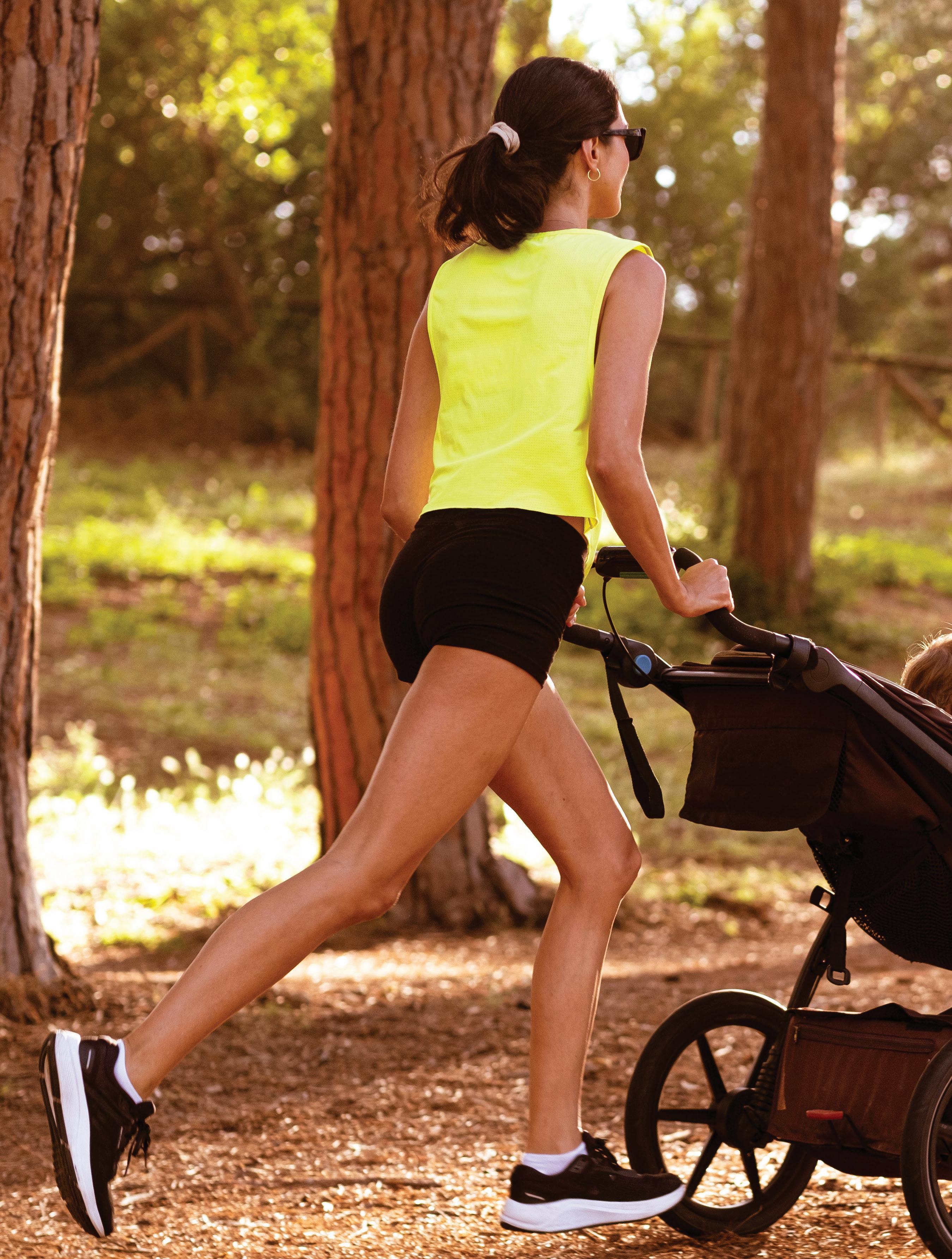


eturning to running postpartum can be daunting and, quite frankly, scary. There may be minimal guidance around how to safely get started, and your medical team could very well tell you that you’re good to go at your six-week appointment—without actually doing a proper assessment.
The first thing to remember is that just because you are medically discharged at six weeks does not necessarily mean you are ready to lace ’em up the very next day. Instead, your approach to returning to running should include a series of milestones that should be assessed, and symptoms to be aware of that may signal
Running is a high-impact activity—it requires the force of 2.5-6 times your bodyweight with every step, and that’s just on one leg. And these aren’t the only factors that make a postpartum return to running stressful on the body. New mothers should also consider how much sleep they’re clocking, their energy availability, if they’re breastfeeding, how active they were prepregnancy, and more, before making a plan to return to running.
Before returning to a regular running routine, certain milestones should be reached—and how long it takes to reach them may be different for everyone. Pelvic floor strength, endurance, and coordination are key, but factors such as incontinence, how well you’re able to balance, and an analysis of your gait should be considered equally important. Seeing a pelvic physio for a full assessment no matter how you gave birth is highly
Additionally, the amount of ease with which you’re able to perform key exercises is a good indication of where you stand. Try testing exercises such as walking for 30 minutes, balancing on each leg for 10 seconds, jogging on the spot for one minute, forward bounding 10 times, and performing 20 single-leg bridges on either side. Performing these exercises without experiencing pain or symptoms is a good indicator of readiness.
As an active person, you may err on the side of caution even if you’re able to perform these exercises without limitations. Even if you’re feeling up to it and you’re ready to jump out the door on your first run, it’s still important to ease into your first few runs. Not only because your body just went through a huge
change, but also because your muscles, tendons, and bones need to be slowly reintroduced to the load of running.
And there are plenty of activities to keep you busy, while increasing your strength and endurance. Before you start running, focus on building mobility, control, and strength with exercises such as single-leg balance work, running on the spot, and hopping. There are many other forms of aerobic exercise that lend themselves to improving your running when you return, so take this time to enjoy brisk walks uphill, biking, the elliptical machine, or even pool running.
Along with cardio, it’s vital that you incorporate strength training, specifically pelvic floor strengthening into your routine. Strength should focus on first re-engaging the pelvic floor and core with the breath, starting with exercises on the mat and progressing to standing and single leg.
Do not be surprised if the body you are in feels foreign. This is very common and you are certainly not alone. Be kind to yourself. Your body just did something amazing—it grew a human! It’ll take some time for you to feel like you once did, and that is okay. It’s also normal to be surprised by how different running might feel—you might feel a little like Bambi in the beginning.
Lastly, do not compare yourself to anyone else or yourself previously; after all, comparison is the thief of joy. All frustration is born of missed expectations, so be sure to also set them appropriately and adapt to how you feel. There is a high probability that the progression will not be as linear as you would like, and there will be some ups and downs along the way. Listen to your body and make changes based on what you feel. The sooner you can accept where you are, the better your experience is going to be.
No matter what your journey looks like, take it slow: Slow progress is always better than jumping ahead and potentially making yourself vulnerable to a setback. Embrace the process of your return to running—and celebrate with your brand new tiny cheerleader.
These are warning signs that you may be retuning too quickly. If symptoms persist, contact a medical professional.
• Bleeding or increase in bleeding
• Leaking urine
• Inability to control bowel movements
• Heaviness/pressure in the pelvis
• Increased swelling
• Pain, especially sharp pain
• Decrease in milk supply, if breast feeding
These four
neurotransmitters
are the missing links to protect and restore an athlete’s brain
BY SIMONE FORTIER
A Calgary, AB-based trailblazer in brain nutrition and manual therapy, and the founder of the Fascia Training Institute. She leads ADHD consultant programs, and is the author of bestselling works Rise Up, How to Beat Brain Burps, and Silent Concussion – Recovery After mTBI. SIMONEFORTIER
Each week, I receive inquiries from individuals experiencing persistent concussion symptoms. Recently, a man who suffered a fall from a ladder in his attic, dropping an additional eight feet and losing consciousness, reached out to me. His concussion symptoms, originating from childhood sports and a car accident, were still present. Contrary to popular belief, the leading cause of concussions is falls, especially in children and seniors, followed by car accidents and sports incidents.
Protecting the brain should be everyone’s top priority, yet many are unsure where to begin or what steps to take. After sustaining six adult head injuries — two from snowboarding and four from car accidents — I recognized something crucial was missing. This realization led me to the importance of harnessing internal resources for healing. As a child, I experienced over 50 concussions due to sports participation, ADHD, falling, and engagement in extreme sports. The symptoms intensified over time, eventually becoming too overwhelming to manage. I struggled with poor sleep hygiene, worsening insomnia after head injuries, and even suicidal ideation, which is common among those with ADHD and concussions.
This led to a four-year clinical research project examining four neurotransmitters and the methods to deliver essential resources to the brain for healing. I have discovered that healing is indeed possible through eating and precise medical-grade supplementation based on a test that is effective for brain repair and protection. For anyone suffering the effects of concussion or those supporting concussion sufferers, these are the neurotransmitters crucial for healing—and the foods to eat to support their production.

One of the secrets lies in enhancing the production of acetylcholine, a vital neurotransmitter responsible for memory, learning, and overall brain function. By increasing acetylcholine levels, athletes can experience improved cognitive functioning, leading to better decision-making, quicker reaction times, and a more profound understanding of their sport. No foods directly contain acetylcholine, but certain nutrients, such as choline, can support acetylcholine production in the body. To enhance acetylcholine levels, focus on consuming foods rich in choline, such as nuts and seeds like almonds, peanuts, cashews, and sunflower seeds.


GABA is a neurotransmitter that plays a crucial role in calming the nervous system and enhancing mental clarity. By incorporating GABA into an athlete’s brain nutrition program, you can support recovery from concussions more effectively. This amazing compound reduces anxiety and overwhelm, creating a sense of balance and well-being. GABA’s ability to improve sleep is also vital for healing and peak performance, allowing an athlete to recharge fully and tackle their sport with renewed energy and focus. Foods that support GABA production include fermented foods, whole grains, beans and legumes, and nuts and seeds.


Sleep is essential to healing. Serotonin, a vital neurotransmitter, is best known for its mood-regulating properties, but it also plays a critical part in sleep and overall brain health. Ensuring optimal serotonin levels can significantly aid concussion recovery by improving sleep quality, which is crucial for the brain’s healing process. Additionally, maintaining balanced serotonin levels may contribute to shielding the brain from further injury by promoting a more resilient neural environment. By focusing on serotonin as a key component in an athlete’s brain nutrition program, you can support bouncing back more quickly from concussions while safeguarding the brain for future success in sport. Foods that can help boost serotonin levels include those rich in tryptophan, an essential amino acid that serves as a precursor for serotonin production. Some serotonin-rich foods are nuts and seeds, legumes, and fruit such as bananas, pineapples, and plums.
Dopamine, a crucial neurotransmitter, plays a vital role in various brain functions, including motivation, balance, and motor control. Its significance extends to concussion recovery and brain protection as well. By promoting the release of brain-derived neurotrophic factor (BDNF), dopamine contributes to the growth and repair of neurons, thereby supporting brain healing after a concussion. Additionally, dopamine’s influence on motor function, balance, and muscle tone can help athletes regain their physical capabilities and reduce the risk of further injuries. A well-regulated dopamine system also fosters improved mood and mental resilience, which are essential for coping with the challenges of concussion recovery. By incorporating dopamine-boosting strategies such as proper nutrition, exercise, and stress management, athletes can enhance their ability to recover from concussions and build a strong foundation for future success in their sport. Foods that can help increase dopamine levels include nuts and seeds, soy products, and fruits and vegetables such as bananas, avocados, and leafy greens like spinach and kale.


This article has been edited for length and republished with permission from simonefortier.medium.com
RECIPE CHARMAINE BROUGHTON MEAGAN BROUGHTON
Bracebridge, Ontario based cooking instructor, TV host, and cookbook author who always leaves room for dessert. Find Delicious & Doable: Recipes for Real and Everyday Life on Amazon.
CHARMAINE_BROUGHTON
Even if you wouldn’t describe yourself as a pro in the kitchen, no doubt you’ll be able to recreate this plant-based meal that doubles as a salad with ease. It tastes even better than it looks, and it can be made two days in advance (just be sure to toss well before serving).

Serves 4
• ½ cup basmati rice
• 1 19-oz can black beans, drained and rinsed
• 2 ripe avocados, diced
• 2 cups halved grape tomatoes
• ½ cup frozen corn, thawed
• ½ cup each of chopped fresh cilantro and chopped green onions
• ¼ cup chopped fresh mint
• 2 limes, juice and zest
• 2 cloves garlic, minced
• 1 tsp. each of ground cumin, ground coriander and chili powder
• ½ tsp. salt
• ¼ tsp. chili flakes
1. Cook rice according to package directions.
2. Cool and toss rice with remaining ingredients.
3. Cover and refrigerate for up to two days. Toss well before serving.
Nutrition facts per serving
Calories 337; protein 8 g; fat 15 g; carbs 36 g.
Excerpt from Delicious & Doable: Recipes for Real and Everyday Life by Charmaine Broughton, I C Publishing 2022.

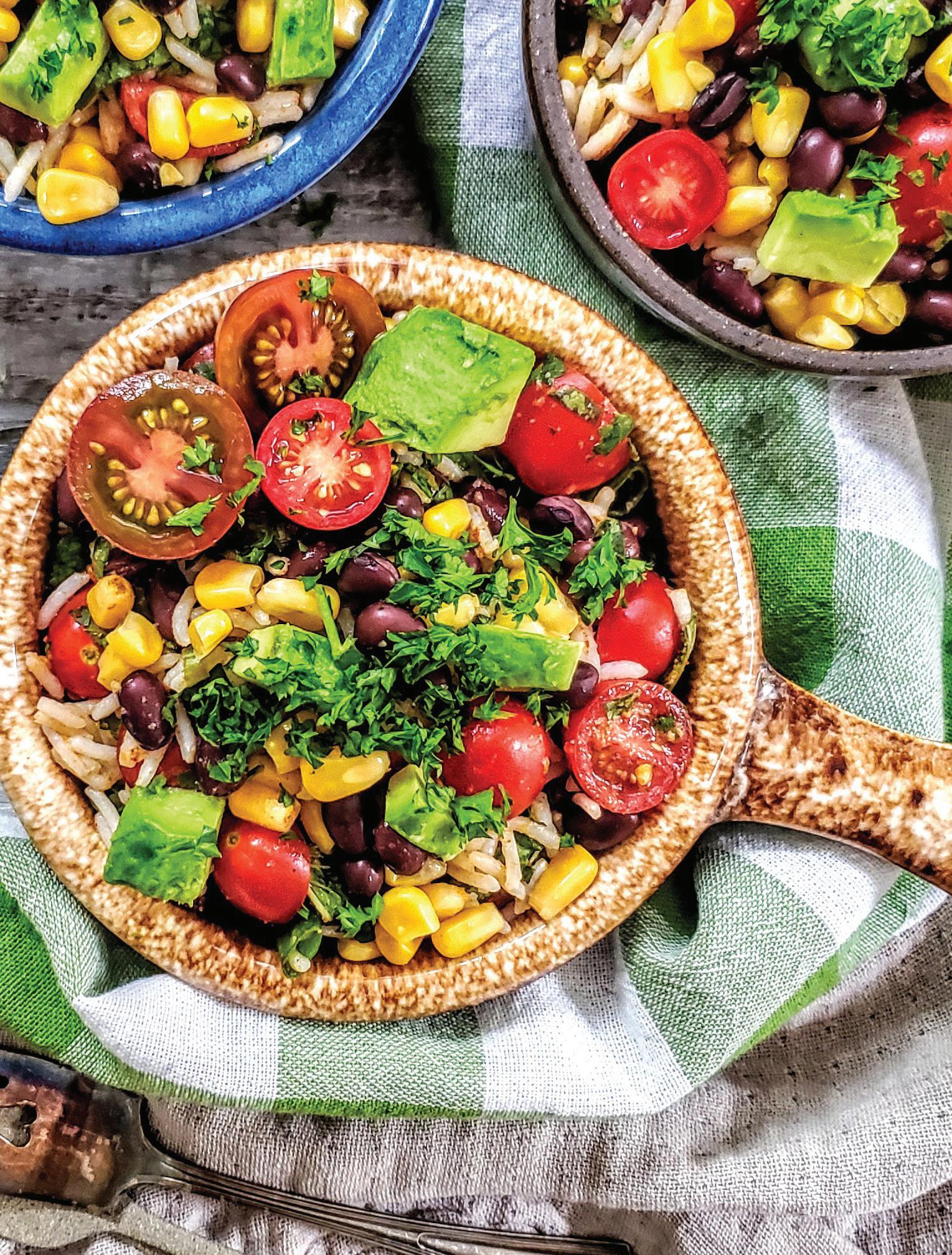
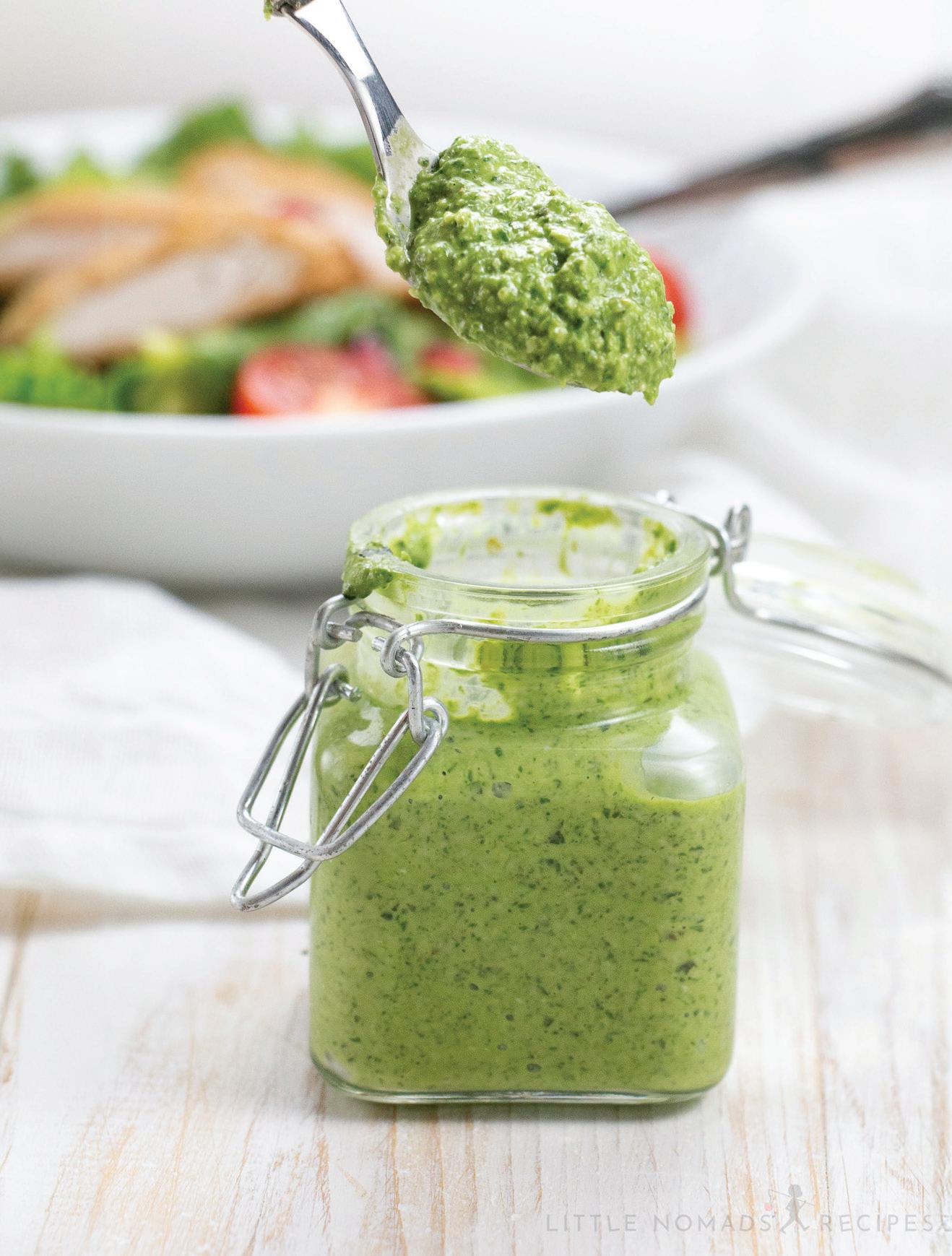
This herb-loaded sauce is nothing short of divine
RECIPE AND PHOTOGRAPHY BY
MARIE BRETON
A French-Canadian mom and chef living in Barcelona, ES, combining her global experiences to craft nutritious recipes catering to every palate.
LITTLENOMADSRECIPES LITTLENOMADSRECIPES
What’s truly remarkable about this dressing and dip is how it captures that cheesy Parmesan umami flavour without a trace of cheese. The secret to this culinary magic lies in the magical pairing of nutritional yeast and cashews, creating a Parmesan-like taste. This sauce is a versatile staple you’ll want to keep in your fridge, ready to elevate a wide range of dishes. You can easily store this in the refrigerator for a few days, although its taste will lose its freshness and vivid colour over time, so fresh is always best.
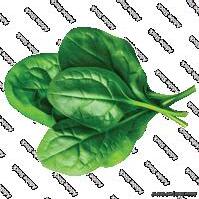
Prep Time 10 minutes Serves 4
• 30 g spinach
• 30 g fresh basil (a handful)
• 10 g chives (about 30)
• 30 g cashews (a handful)
• 2 Tbsp. extra-virgin olive oil
• 1 Tbsp. vegan mayonnaise
• 1 Tbsp. nutritional yeast
• 1 tsp. capers
• 1 lime
• ½ garlic clove, finely chopped
• Salt & pepper
1. Add all ingredients into a blender and blend until smooth.
2. Serve with salads, or as a spread or dip.
Nutrition facts per serving Calories 146; protein 3 g; fat 13 g; carbs 6 g.
This simple, rustic tart only takes five minutes to prepare and 20 minutes to bake!
RECIPE AND PHOTOGRAPHY BY MARIA KOUTSOGIANNIS
Recipe developer and food blogger at FoodByMaria, and winner of Guy Fieri’s 2023 Food Network’s Flavortown, from Calgary, AB.
FOODBYMARIA FOODBYMARIAOFFICIAL
Aperfect last-minute dessert for those warm summer nights, you can top this tart with fresh mint, drizzle it with a chocolate sauce or dust it with icing sugar. I use the most delicious and juicy strawberries, but feel free to mix and match with cherries, rhubarb, and blueberries. All ingredients can be mixed in one bowl—a time saver and easy cleanup! You’re welcome!

Prep Time – 5 minutes
Cook Time – 10 minutes
Serves 4
• 2 cups fresh strawberries
• 3 Tbsp. white sugar
• 1 sheet vegan puffed pastry
• 30 g dark chocolate
• 1 tsp. vegan butter, melted
Nutrition facts per serving Calories 100; protein 1 g; fat 2.5 g; carbs 16.3 g.
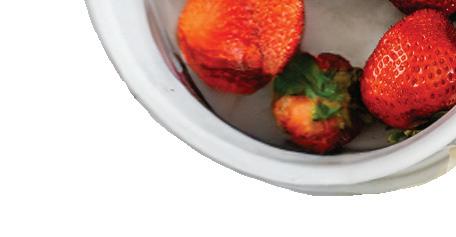
1. Preheat oven to 375° F.
2. Lightly grease a baking sheet with coconut oil or vegan butter.
3. Into a small bowl, add strawberries (or your choice of fruit), sugar and vanilla. Mix and set aside.
4. Open puffed pastry on the baking sheet and gently place strawberries throughout, leaving a one-inch border on each side. Avoid adding excess liquid from the berries.
5. Fold over the edges, and, using a fork, pierce little marks on all four sides and brush vegan butter onto the edges. This is great for adding a golden colour and it increases crunch.
6. Bake for 15 minutes.
7. Remove from oven, place your chocolate, and bake for another 5 minutes until golden brown and extremely fragrant.
8. Serve as is or with vanilla ice cream. I recommend enjoying it hot!


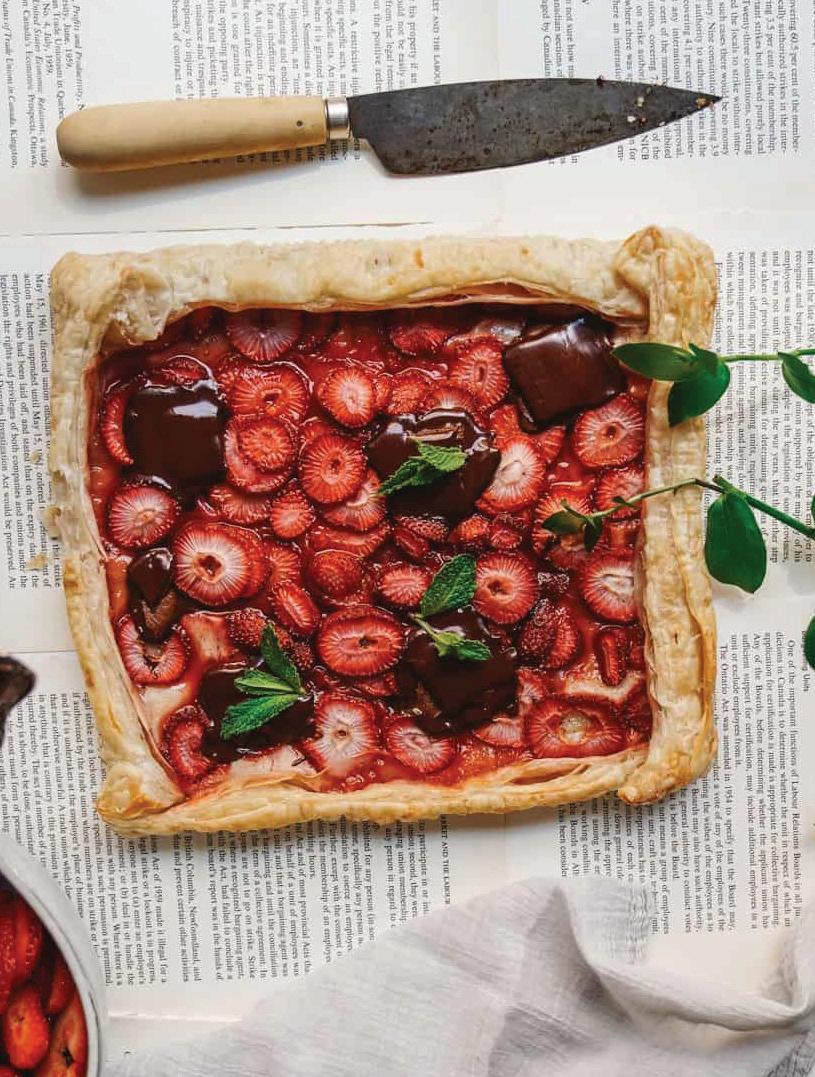


RECIPE AND PHOTOGRAPHY BY JONI PYPERS
Calgary, AB-based creator of The Pypers Kitchen, where she develops original contemporary comfort food recipes that are elevated, unfussy, and delicious.
THEPYPERSKITCHEN
Iknow what you’re wondering… How is it so creamy? Is it bananas? It’s bananas, right? Nope, no bananas, my friends, and it’s also not whatever other dairy-free ice creams are made of (whatever that is). Combining smooth-as-silk cashews with rich full-fat coconut milk results in an ice cream that is loaded with vanilla flavour and is absolutely dreamy.

Prep Time – 8 hours (soaking time)
Serves 4
• 3/4 cup raw cashews soaked for 8 hours or overnight, drained and rinsed
• 1 14-oz can full-fat coconut milk
• 1/4 cup pure maple syrup
• 1 tsp. vanilla bean paste or extract
• Pinch salt
1. Put the cashews, coconut milk, maple syrup, vanilla, and salt in a blender and blend well until very smooth.
2. Process in an ice cream maker and then transfer to freezer. Or freeze in a container, giving it a stir every half hour for about three hours.
Nutrition facts per serving Calories 205; protein 4 g; fat 13 g; carbs 23 g.
This recipe has been republished with permission from thepyperskitchen.com.
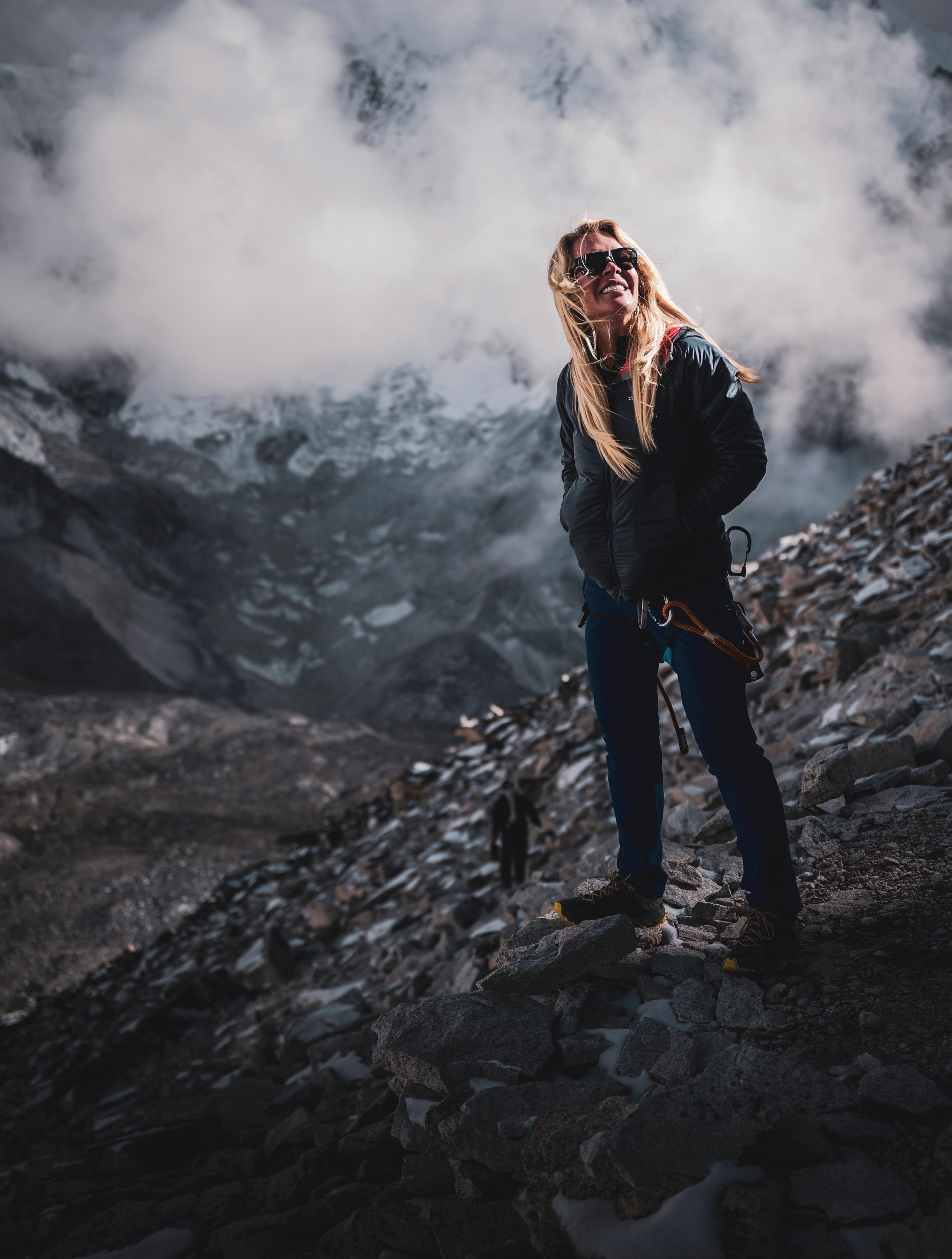
Jenn Drummond holds a world record in mountaineering. But this year, she’s got her sights set on something even bigger.
BY CHELSEA CLARKE SANDRO GROMEN-HAYES
A
freelance health and fitness writer and guest editor at IMPACT Magazine based in Toronto, ON. CHELSEA__CLARKE
Jenn Drummond takes the term “high achiever” to a whole new level. After a car accident nearly claimed her life in 2018, Drummond, a business owner, international speaker, and mom of seven (you read that right) was inspired to take her ambitions to new heights—literally. Having never climbed a mountain previously, she set out to conquer Mt. Everest; but it was during her training that her coach suggested she aim for an even bigger pursuit: To become the first woman to climb the Seven Second Summits, or the second highest peaks on each of the seven continents.
In 2023, Drummond achieved her goal. “Being the first woman to climb the Seven Second Summits was an exhilarating and deeply fulfilling experience,” says Drummond. “It was a journey that tested my limits, resilience, and determination. Reaching each summit represented not just a personal victory, but a message to women everywhere about the power of perseverance and daring to dream big.” But she didn’t stop there. Drummond then went on to author a book, Breakproof, which catalogues her unique perspective on perseverance and determination.
This year, Drummond has her sights set on a goal that’s just as challenging: To slow down. She calls it her “Year of Being,” and its significance rivals that of summiting any mountain. “This year, my primary focus has been on embracing a slower, more intentional pace of life,” says Drummond. “I've intentionally chosen not to commit to big, overwhelming goals. Instead, I aim to demonstrate to my children that it's okay to take a step back, recalibrate, and enjoy the journey without constantly rushing forward.”
To Drummond, that means engaging in movement that feels joyful rather than performance-oriented, indulging in activities such as painting or reading to expand her mind, and being intentionally present for her friends and family. “I've found great joy in spending time outdoors, immersing myself in nature, and engaging in activities that rejuvenate my spirit,” says Drummond. “This approach not only nurtures my well-being, but also serves as a valuable lesson for my children on the importance of balance and mindfulness in our fastpaced world.”




